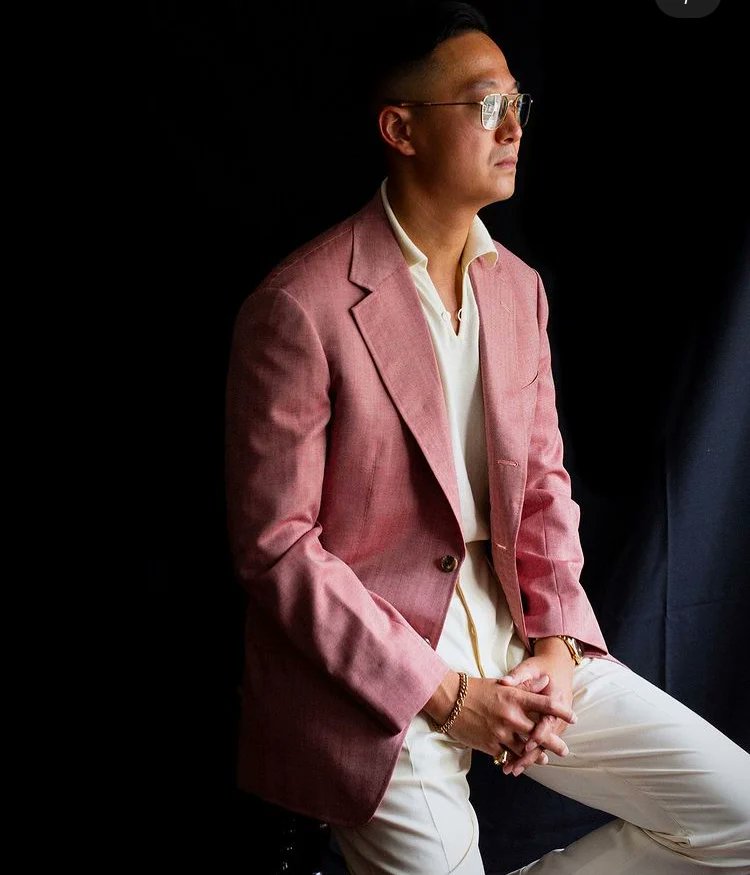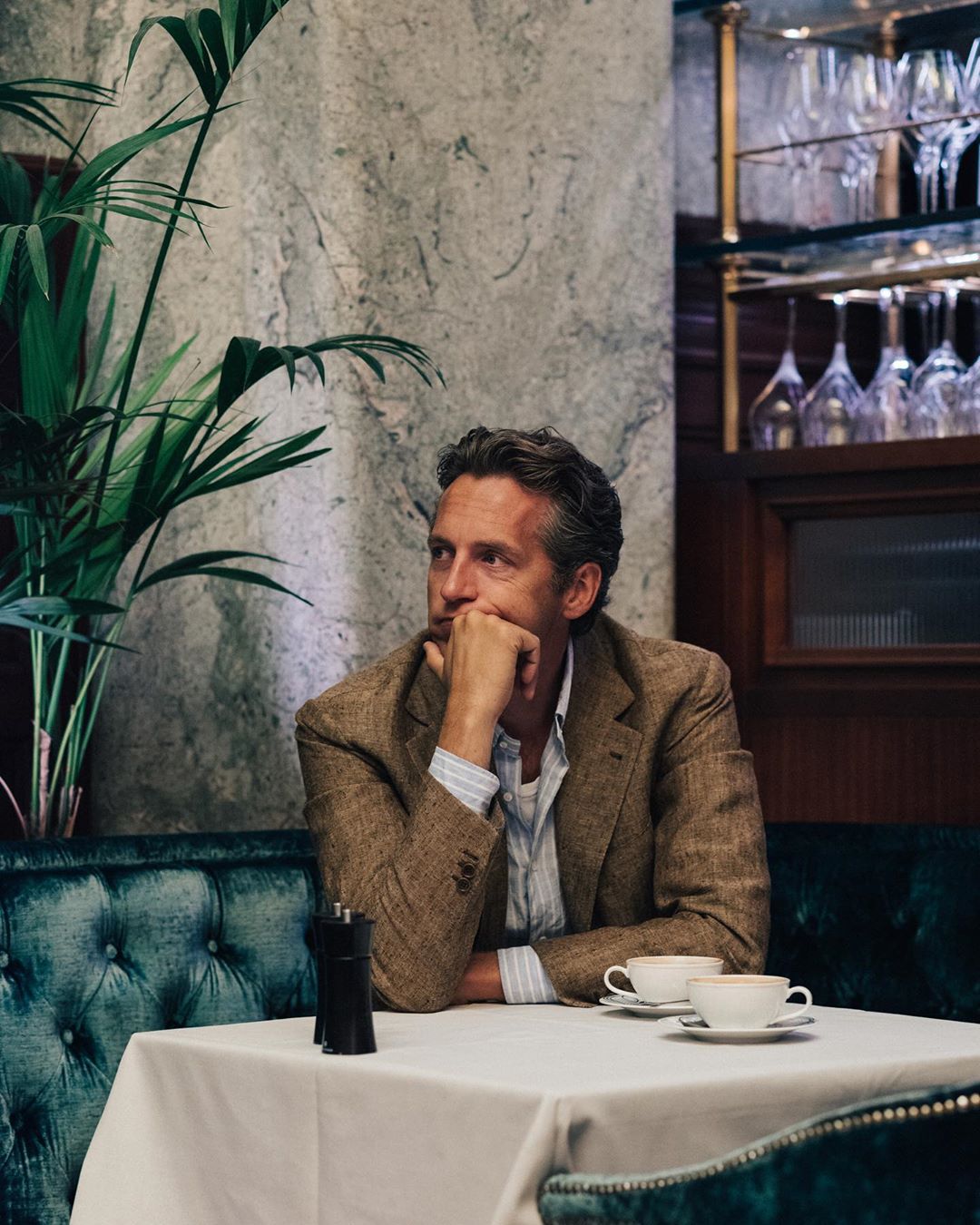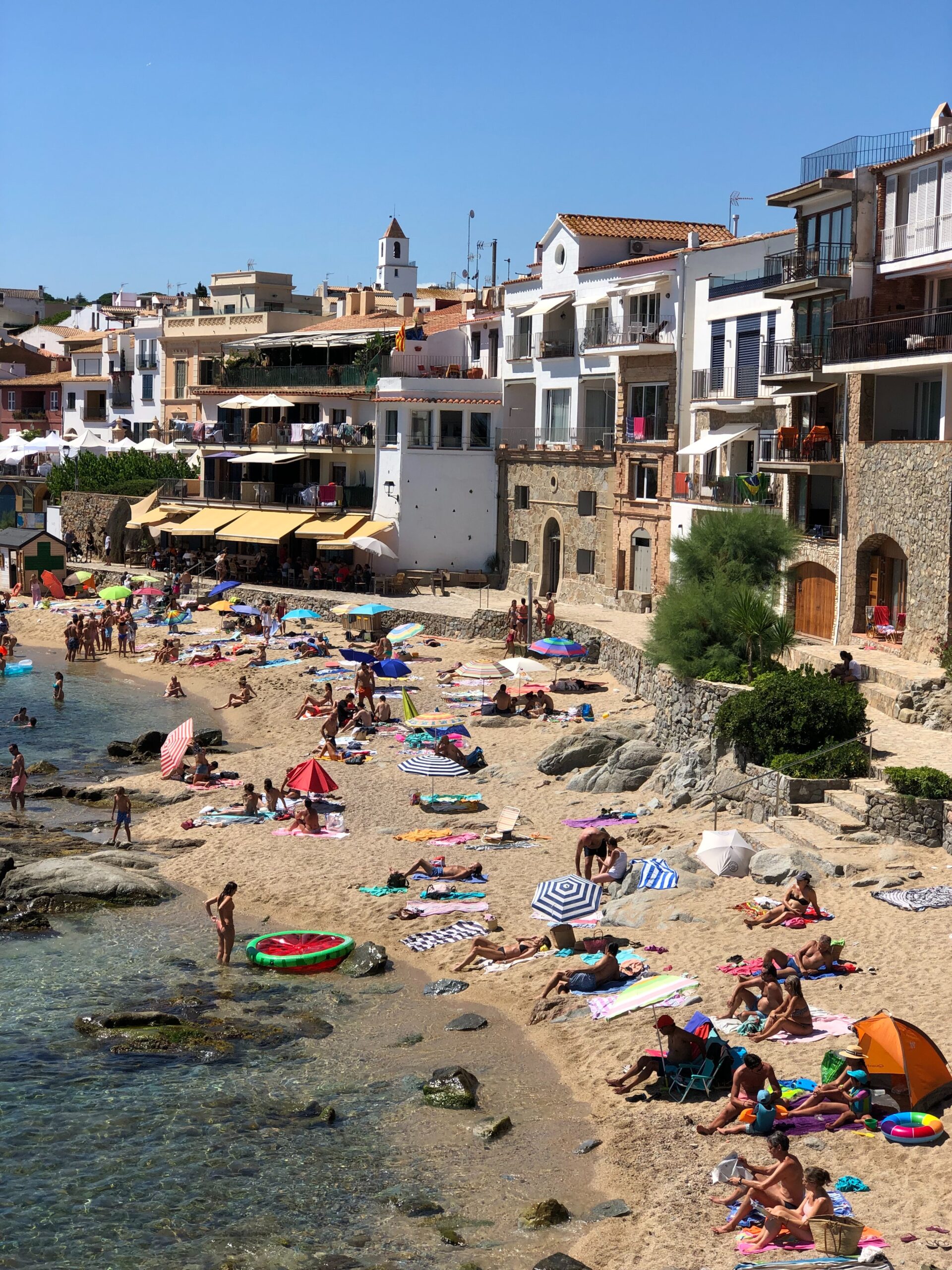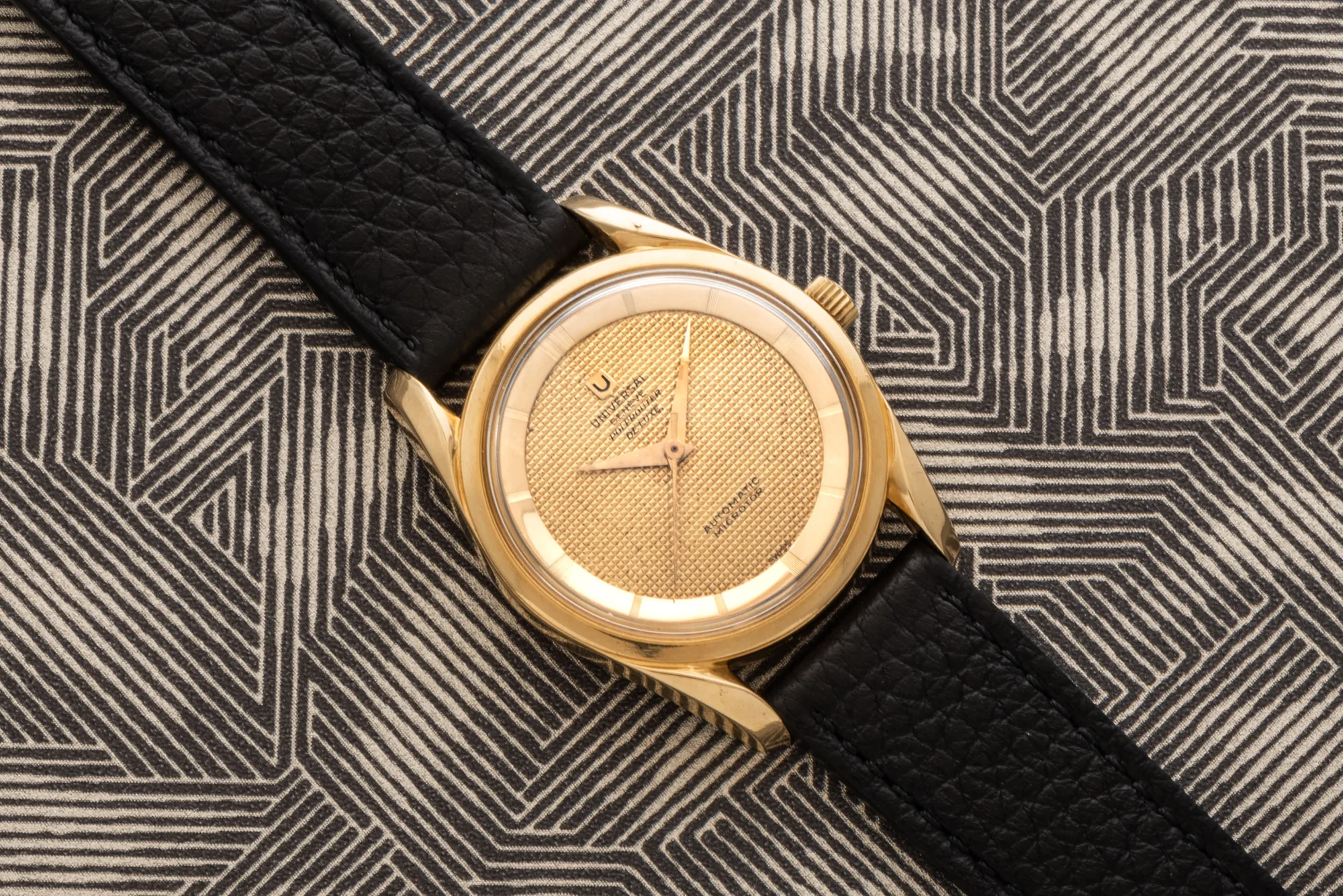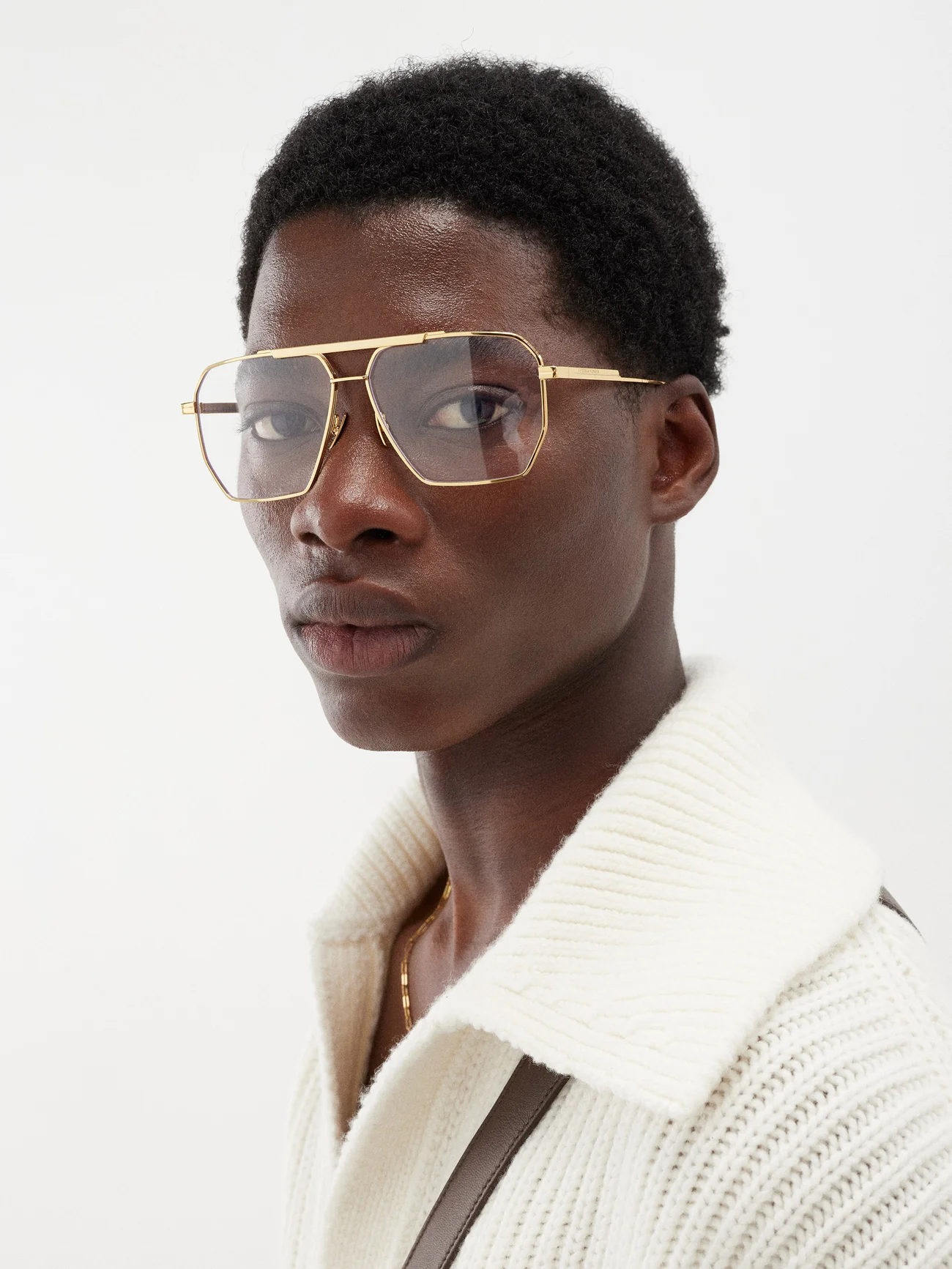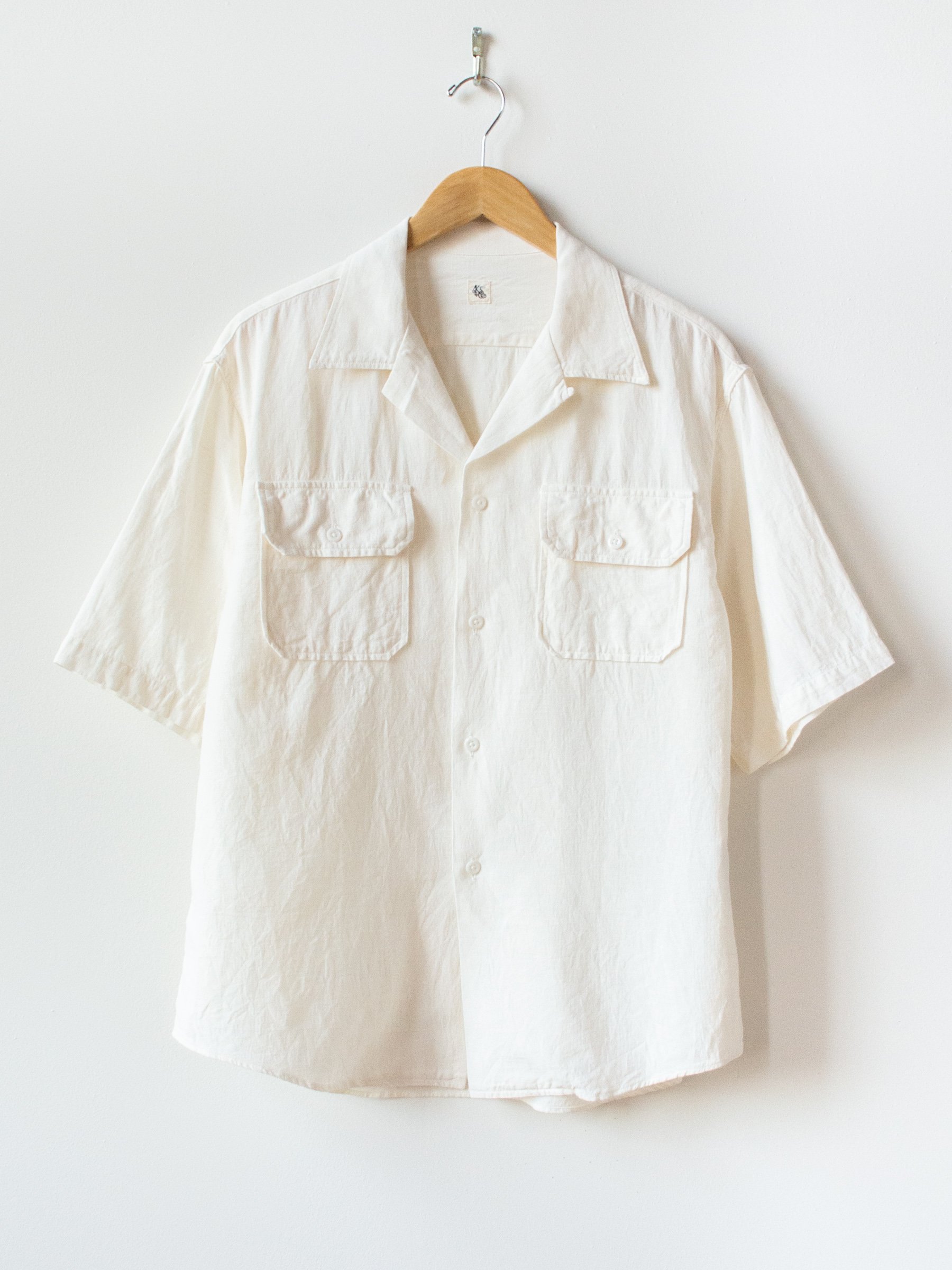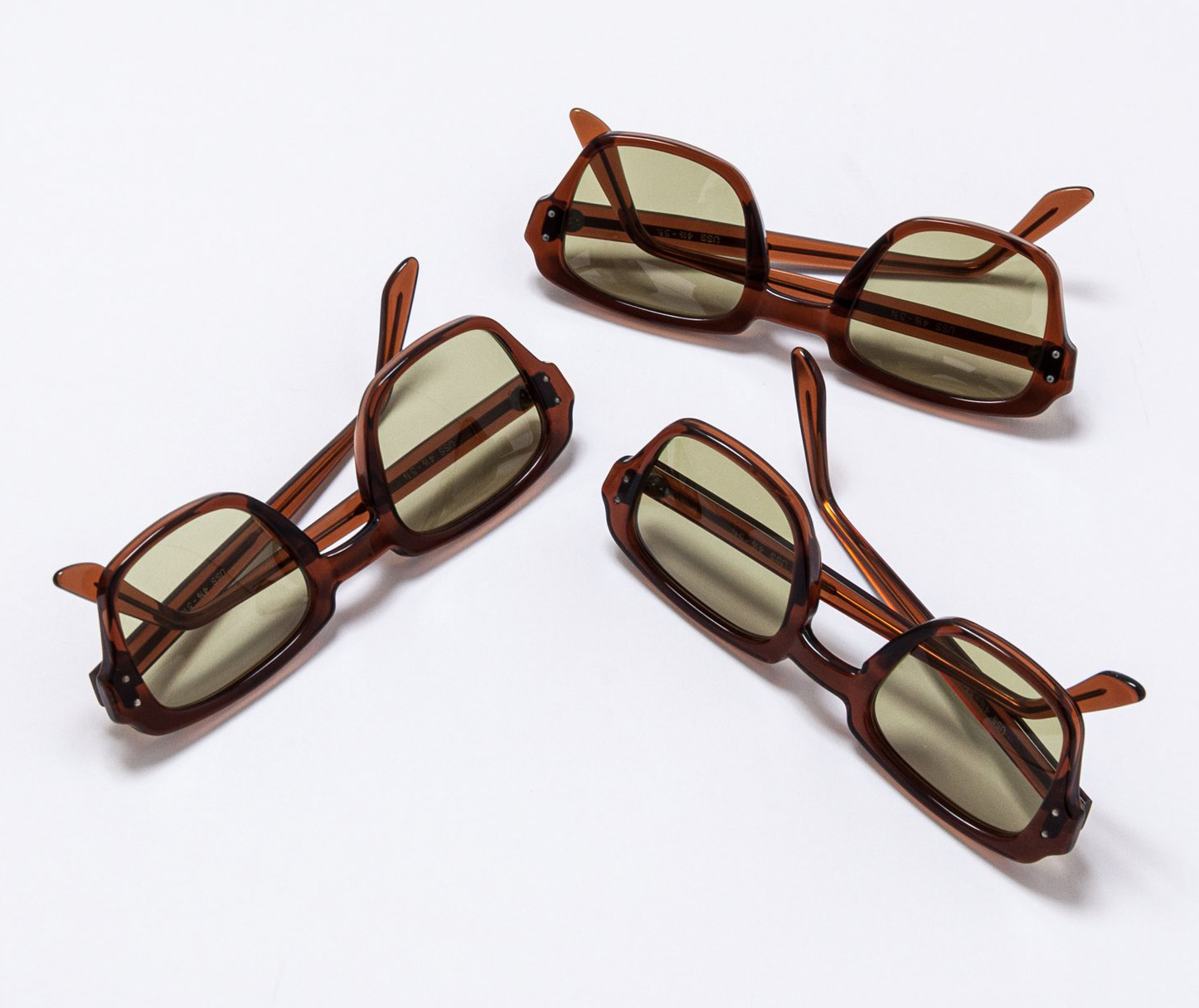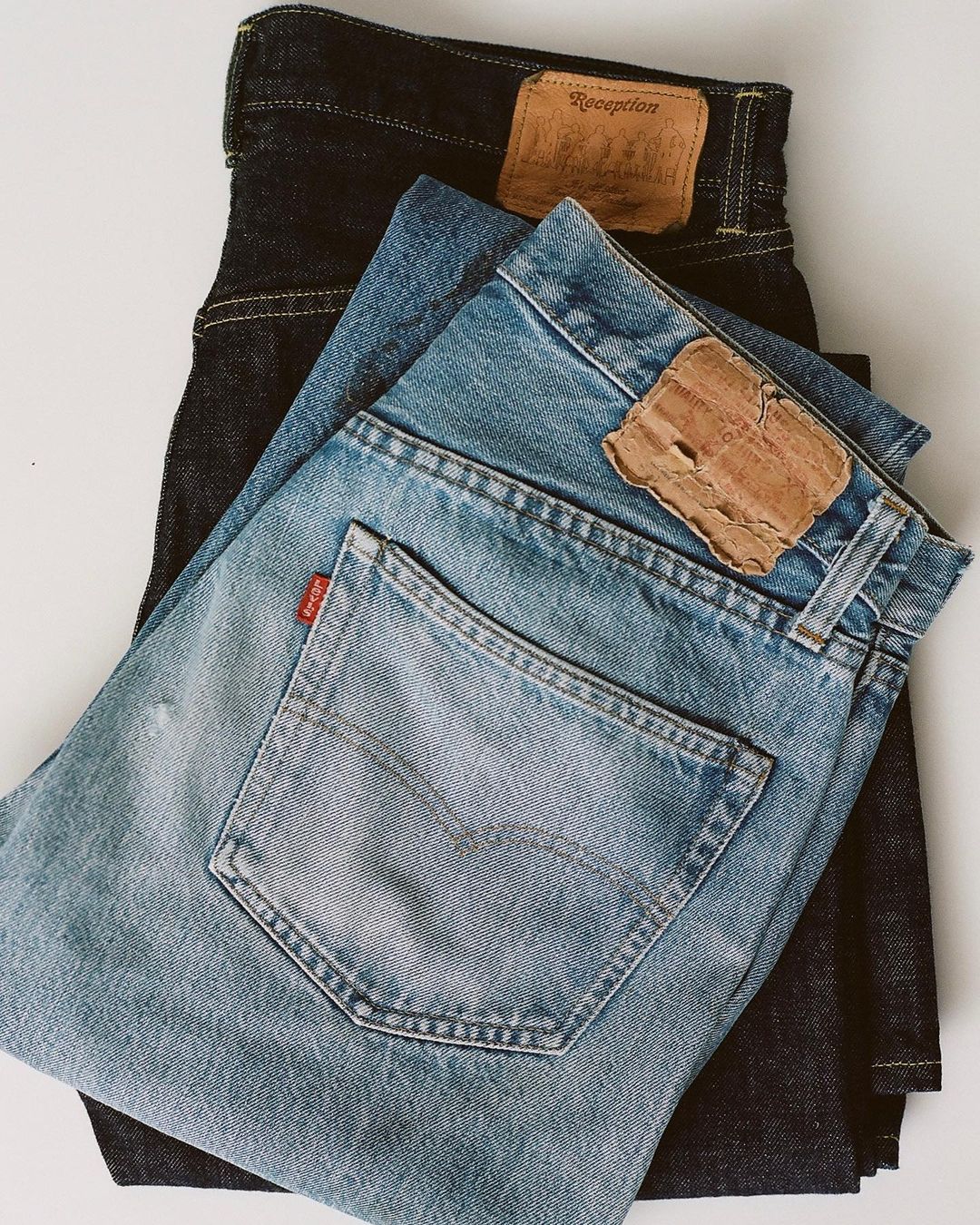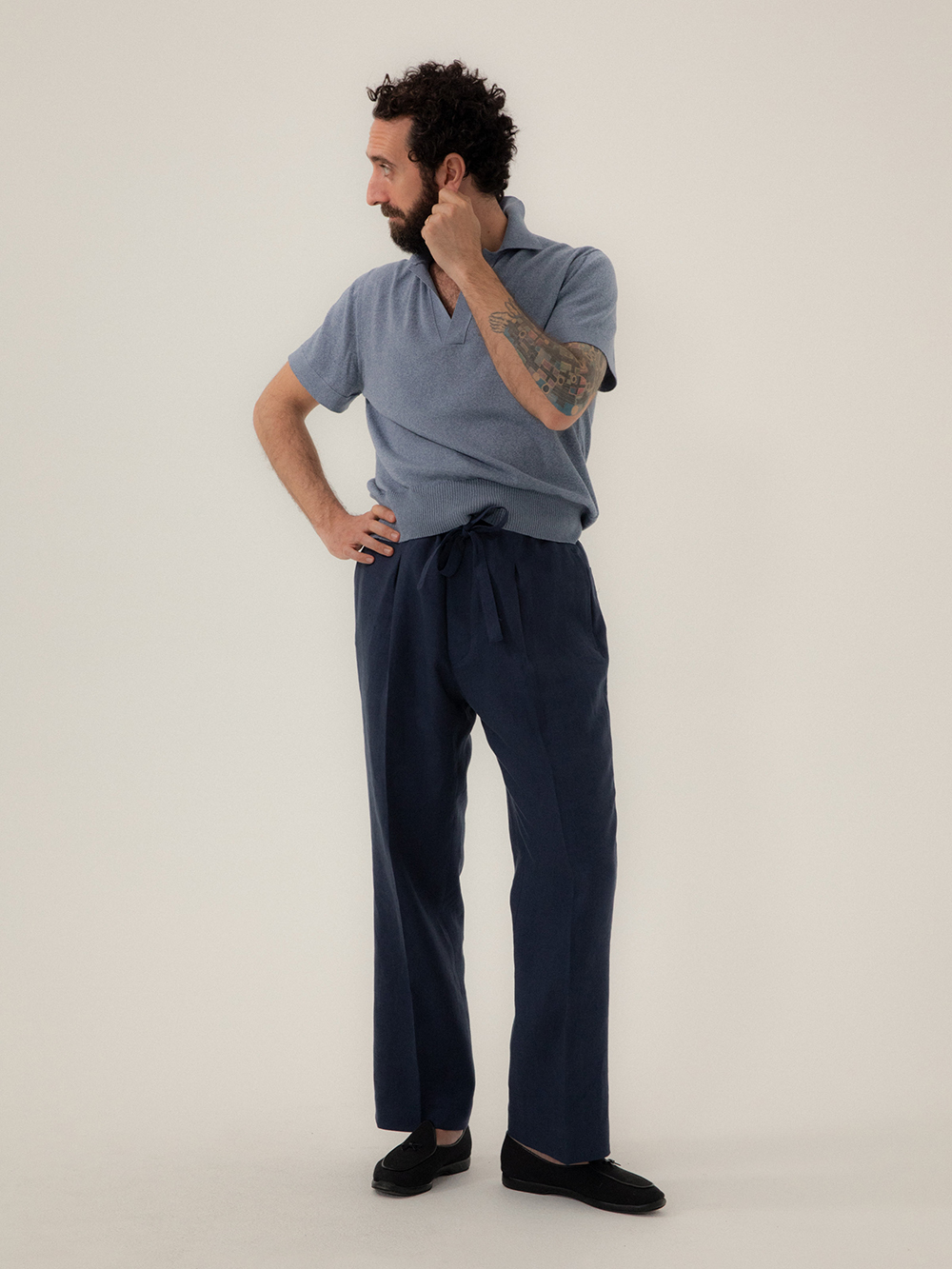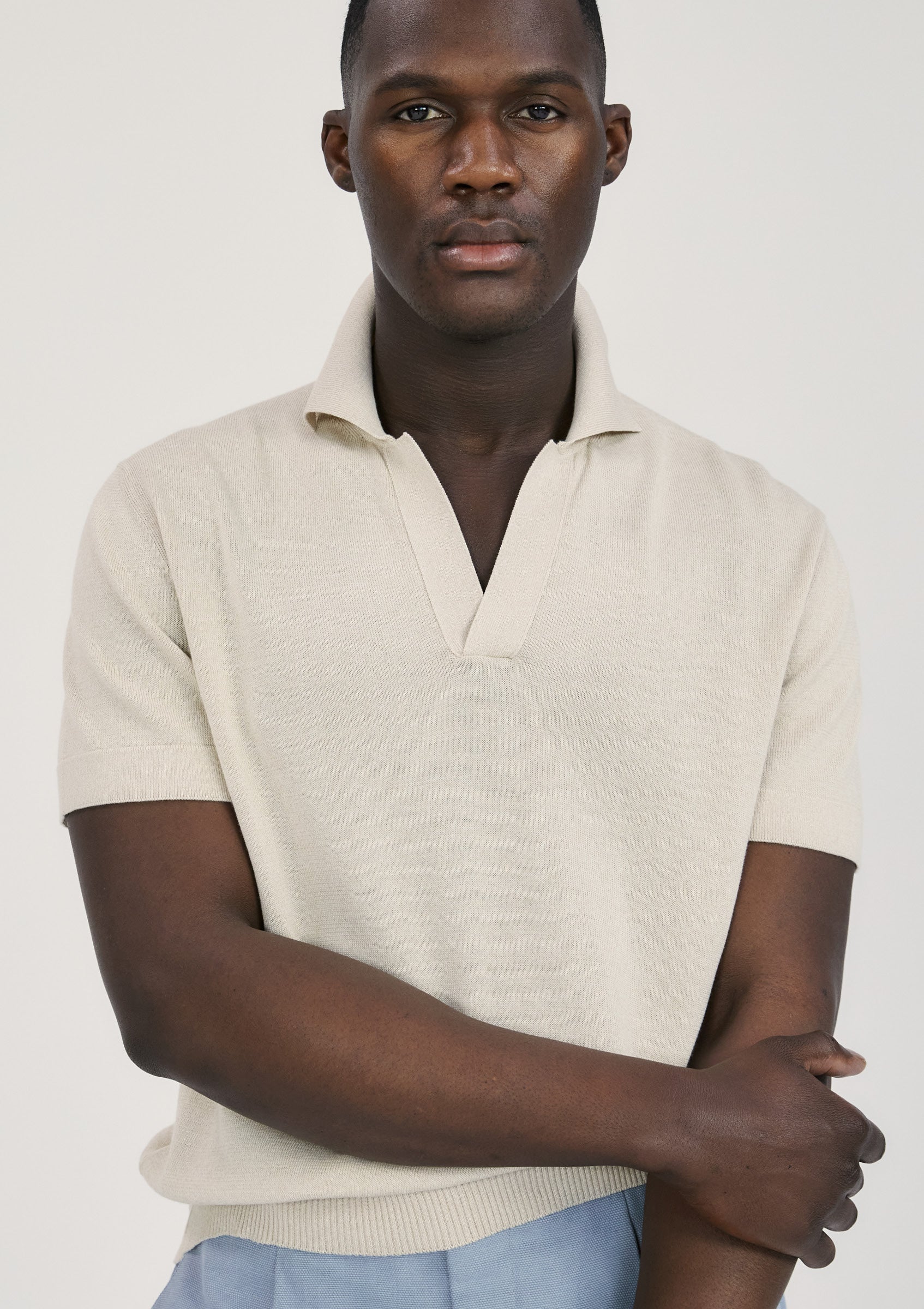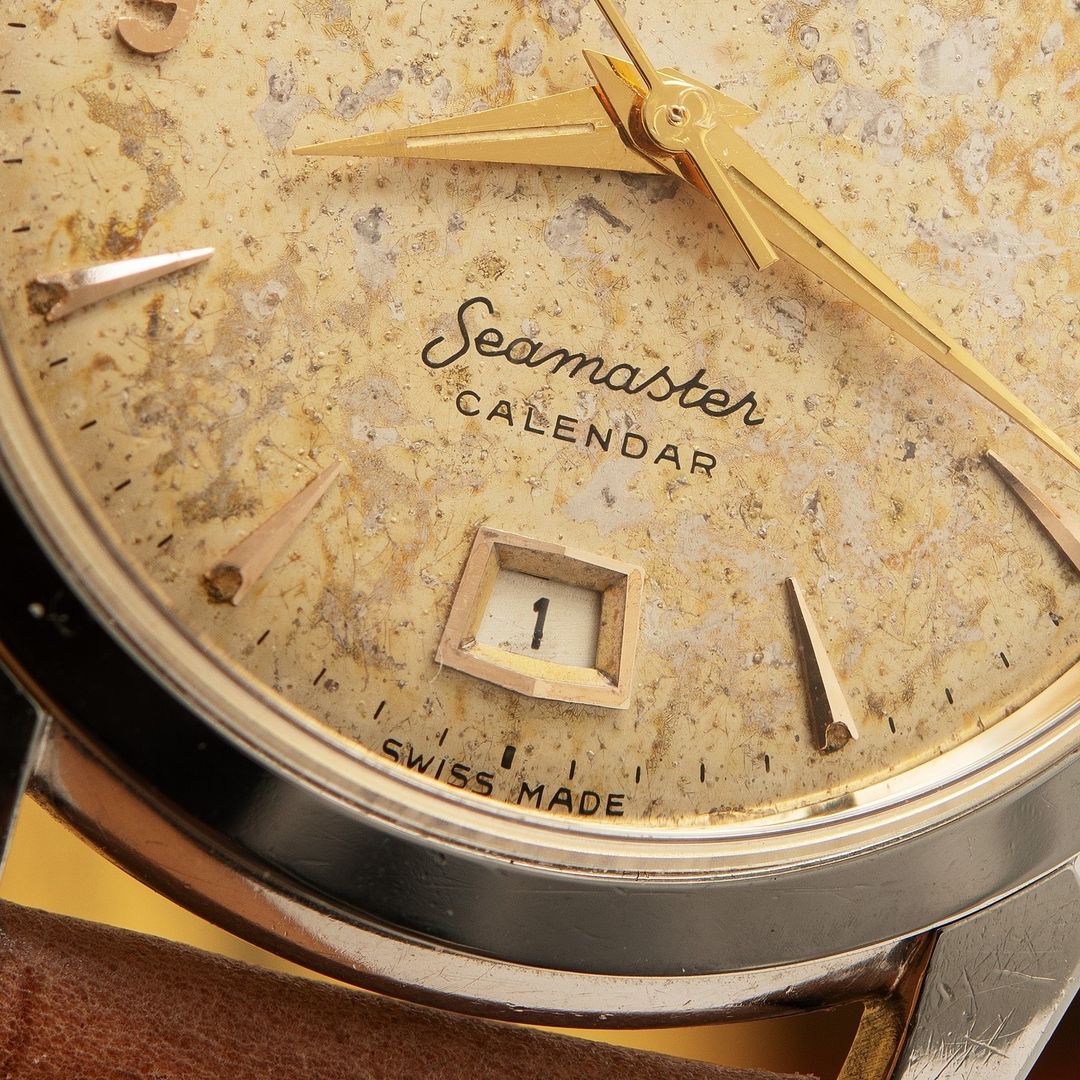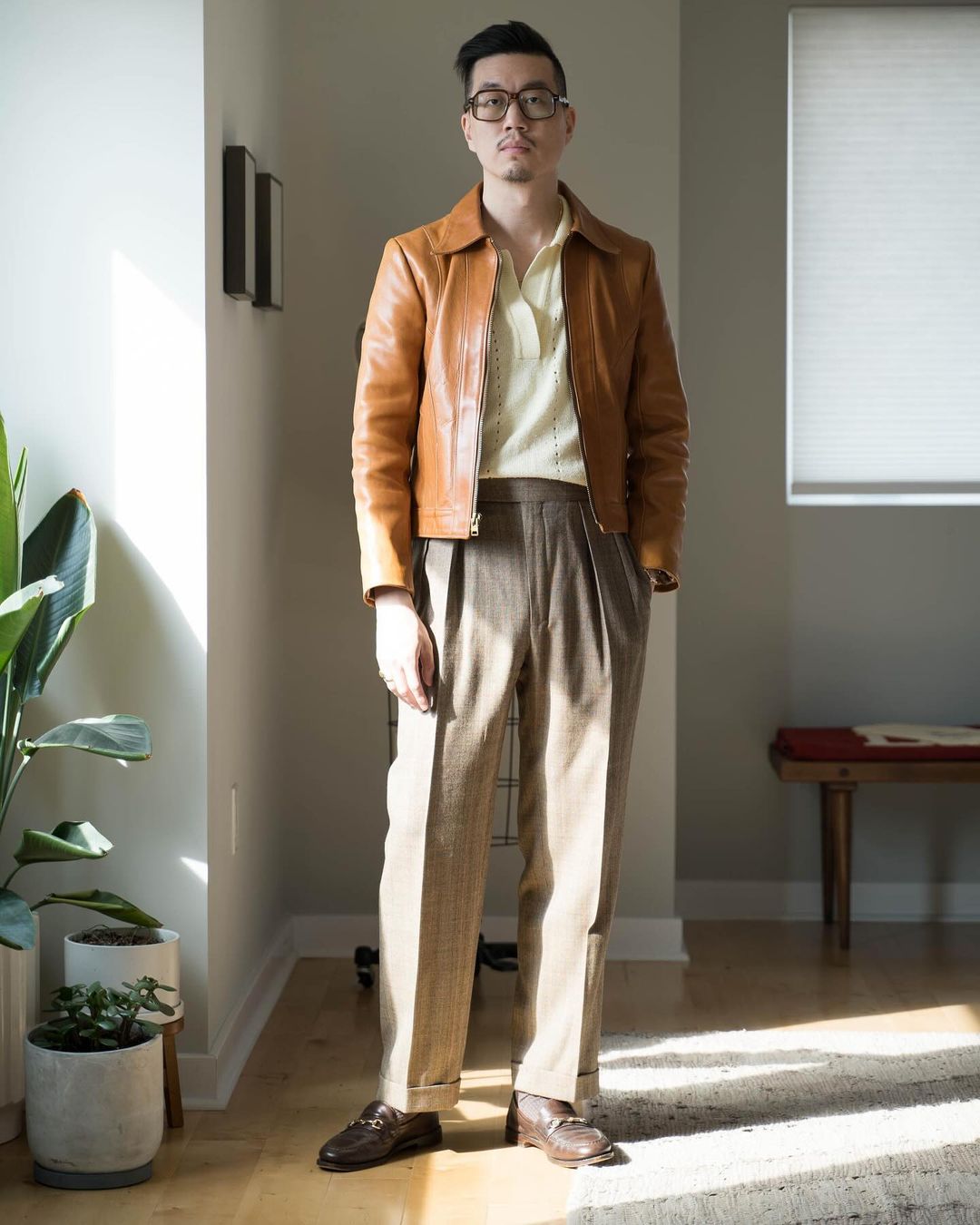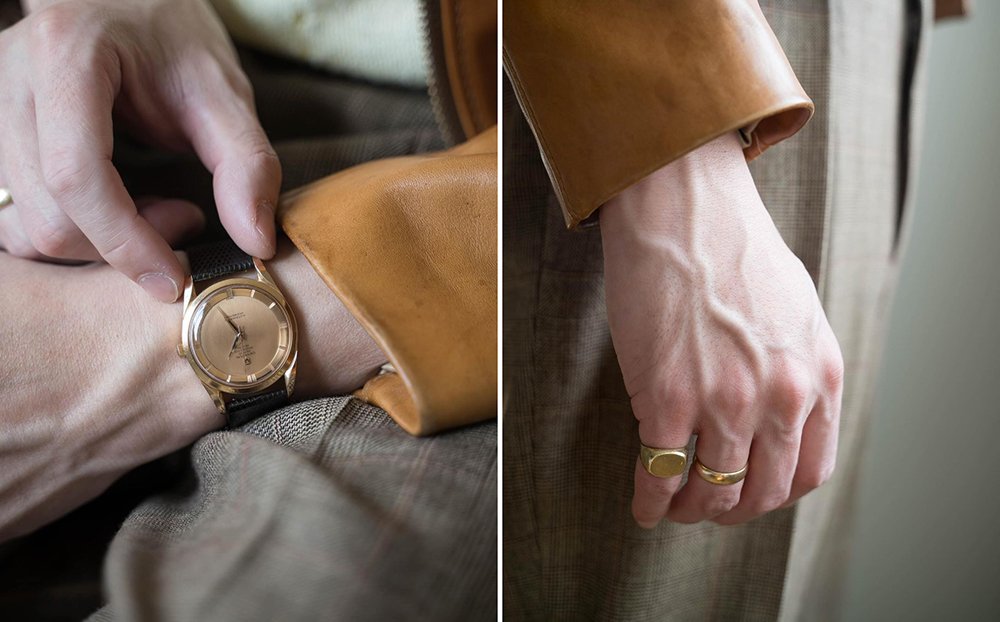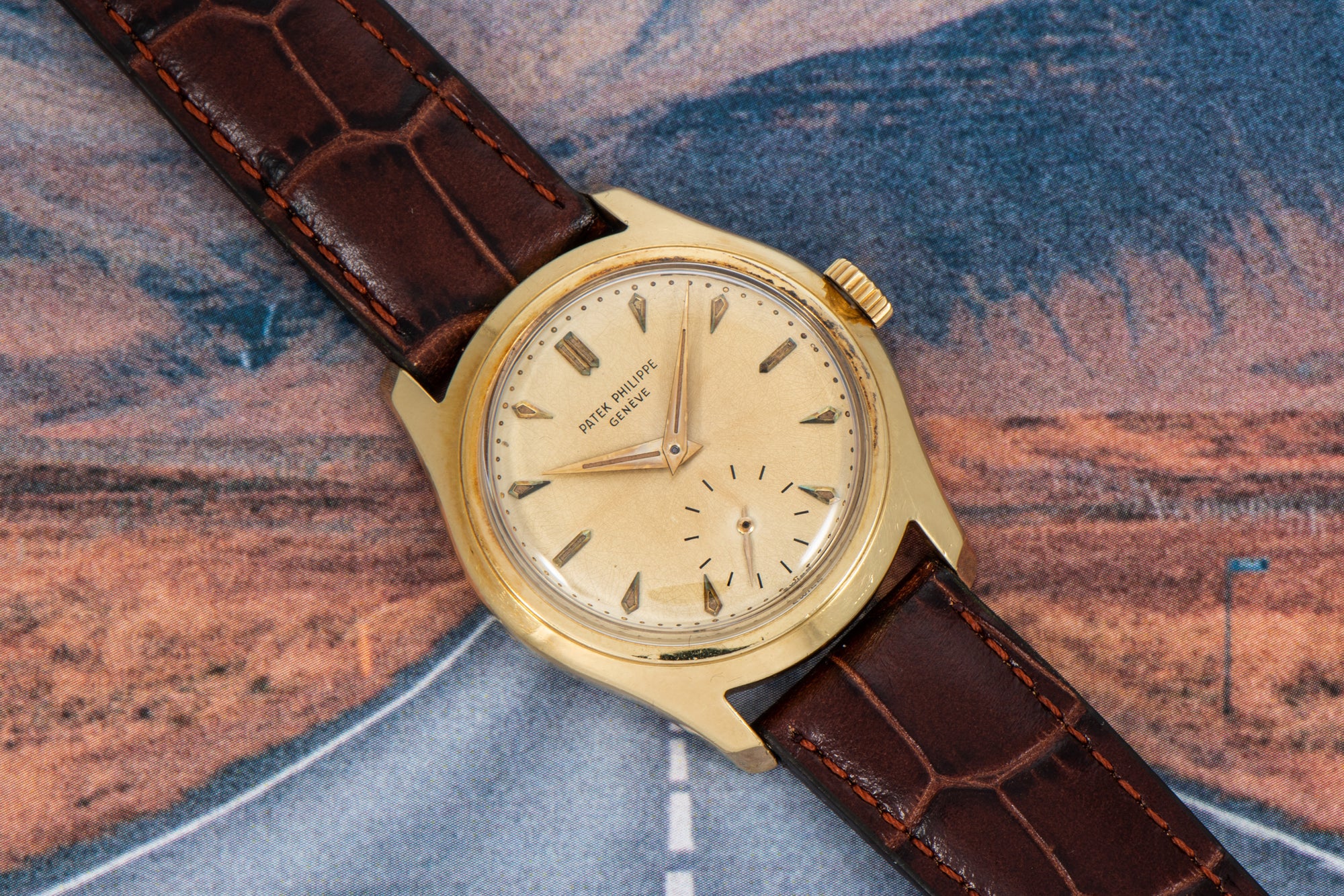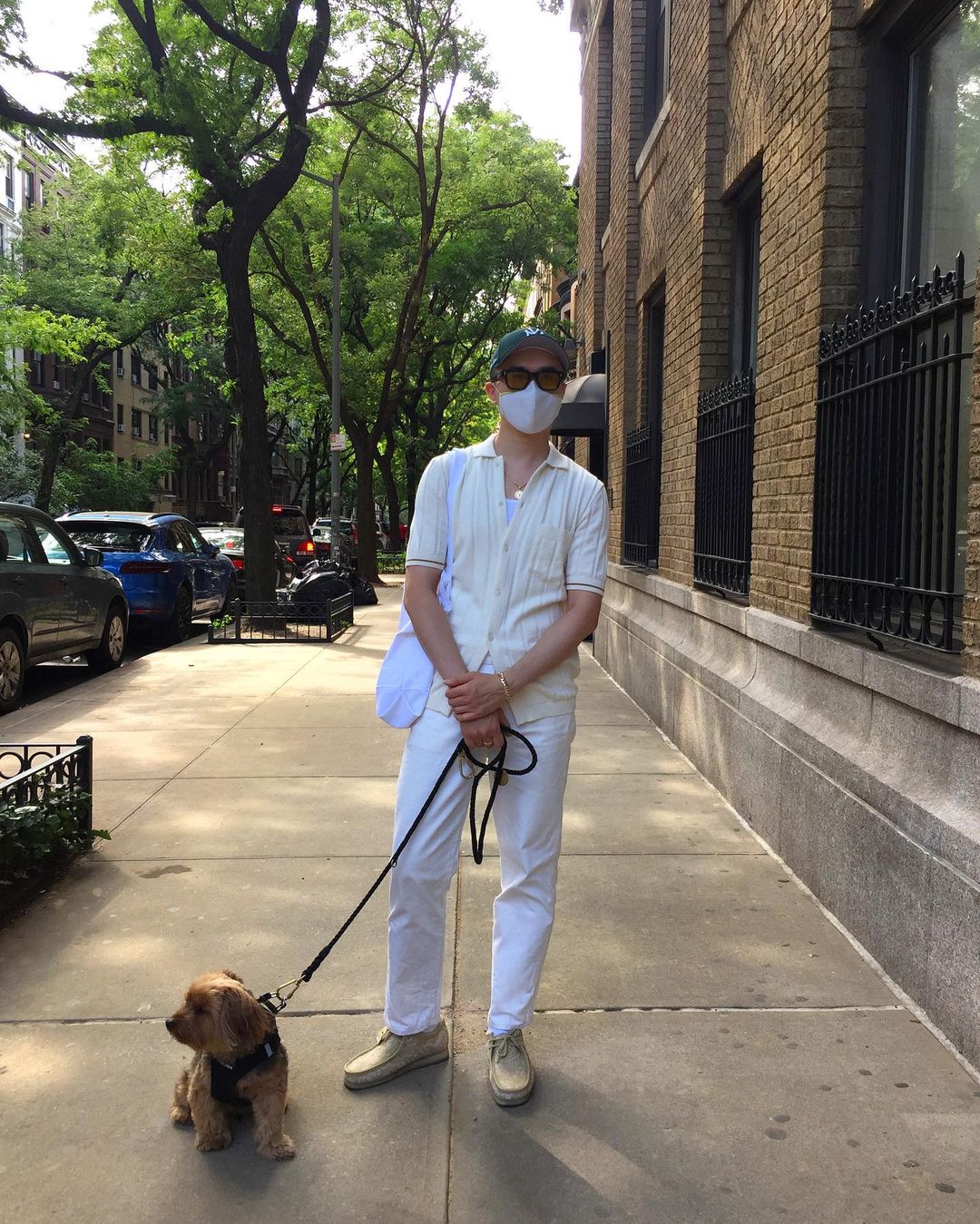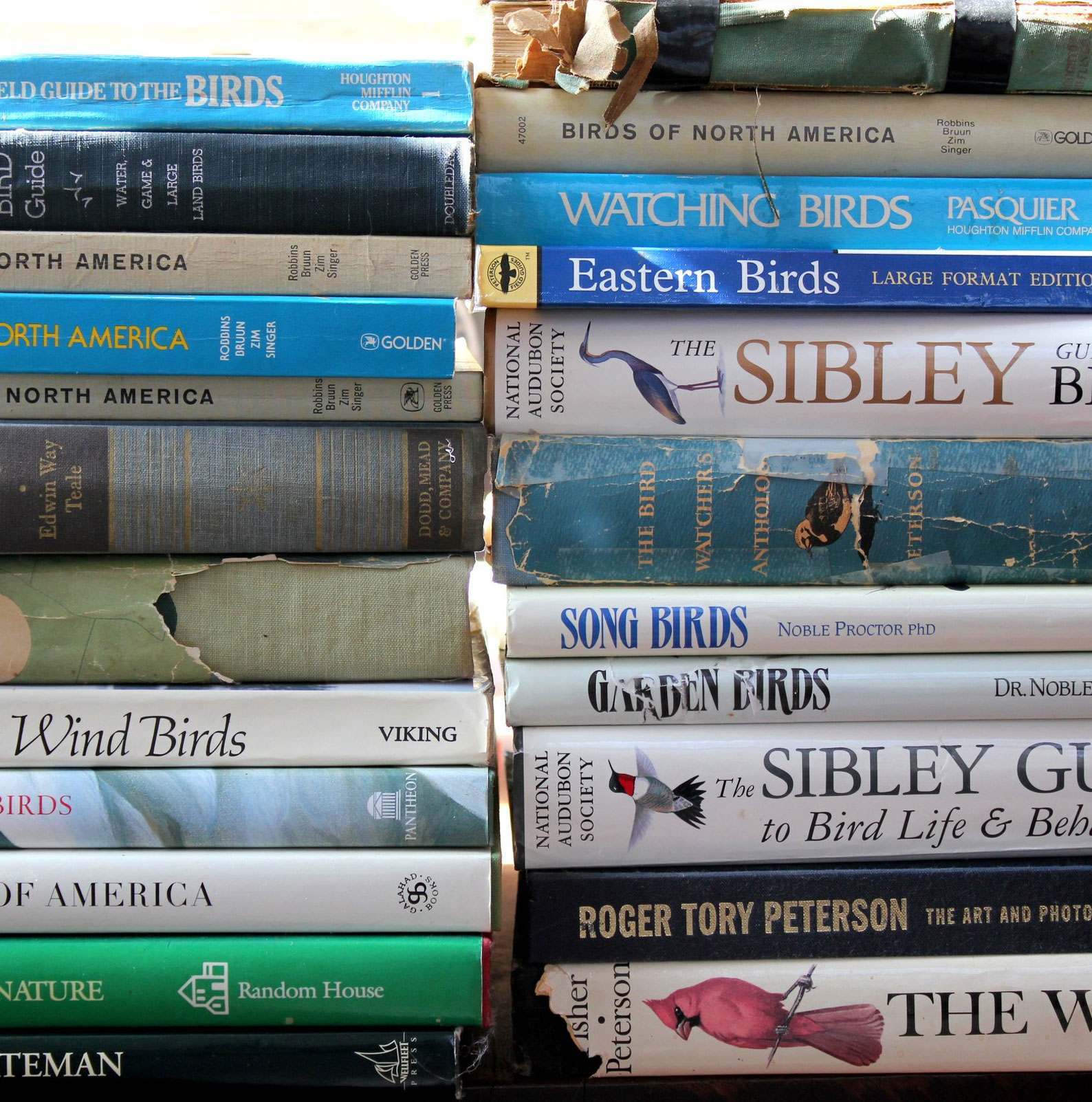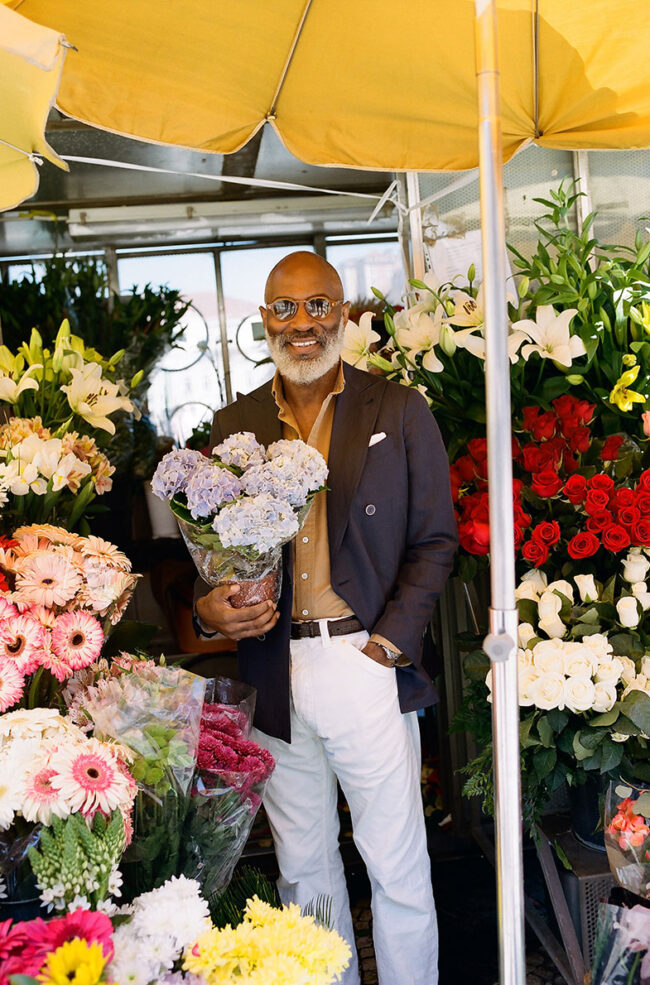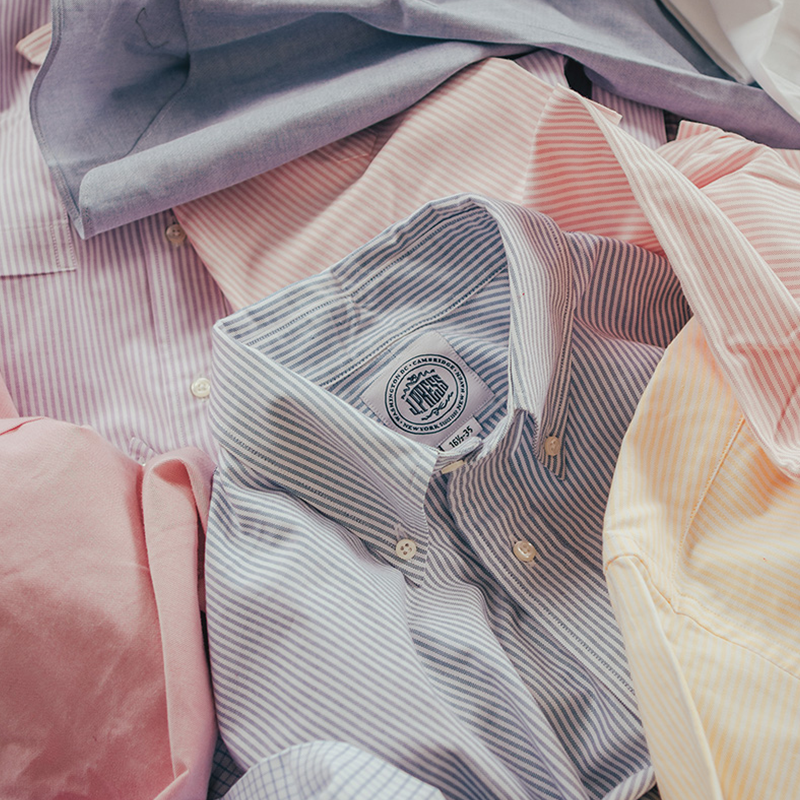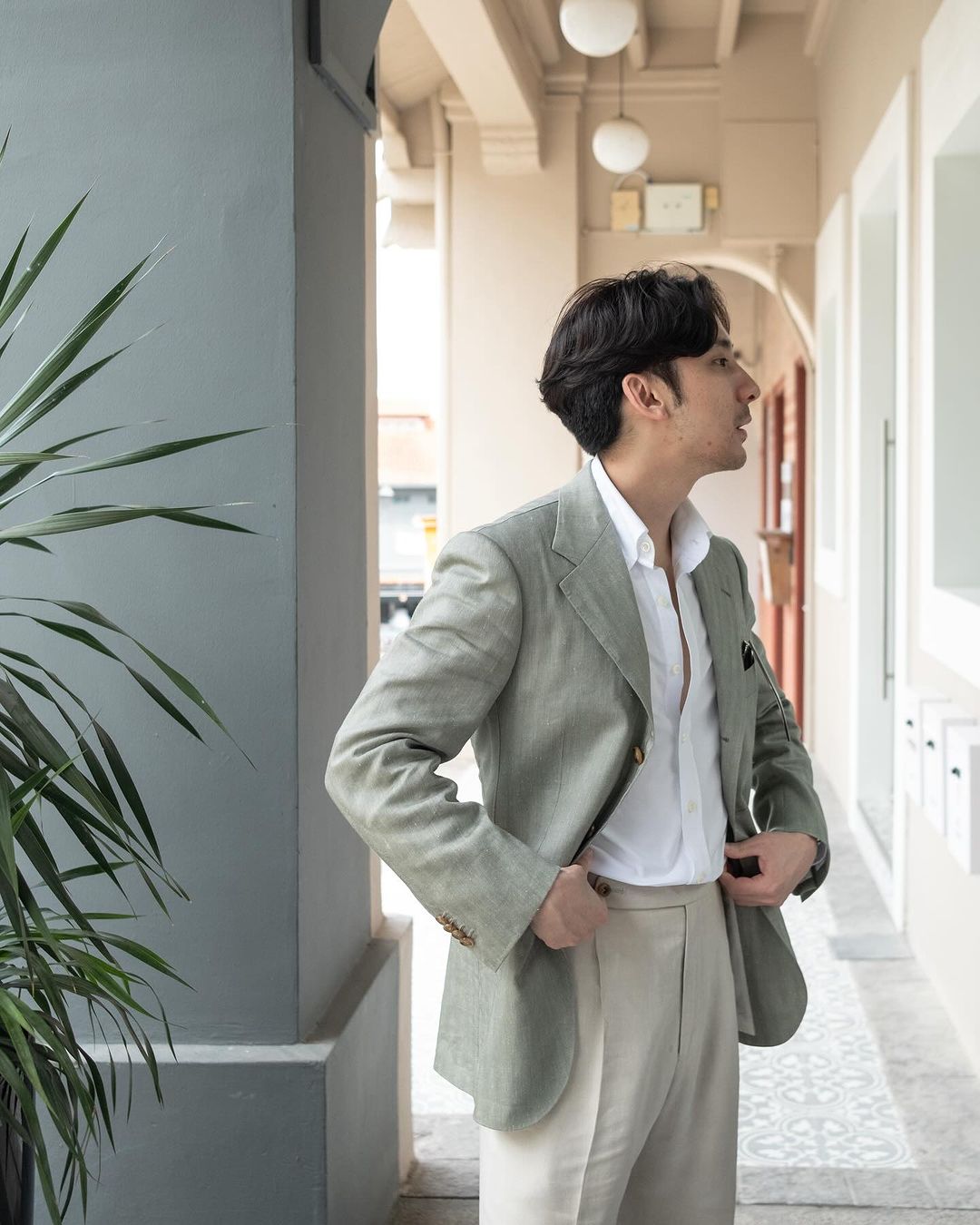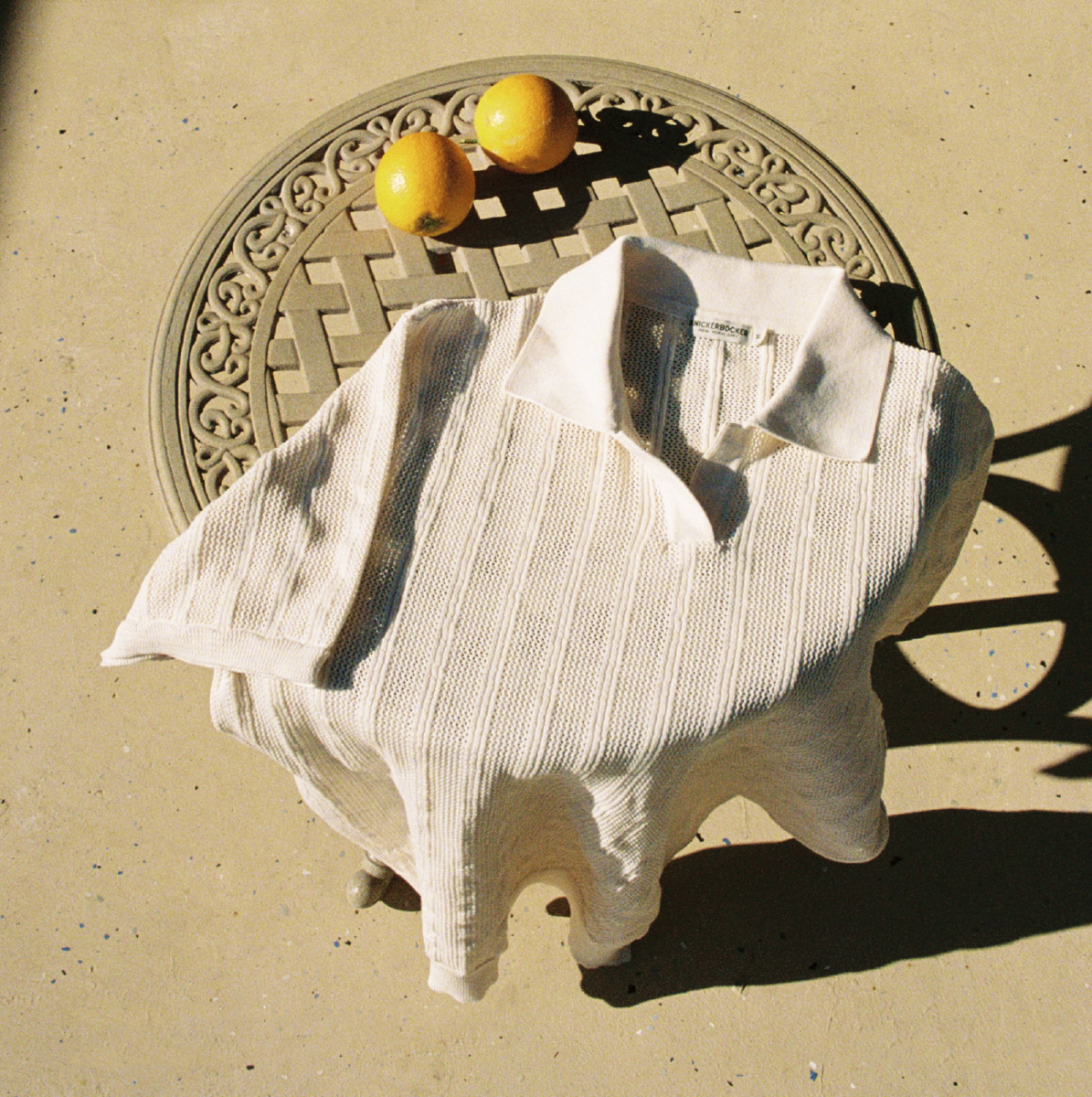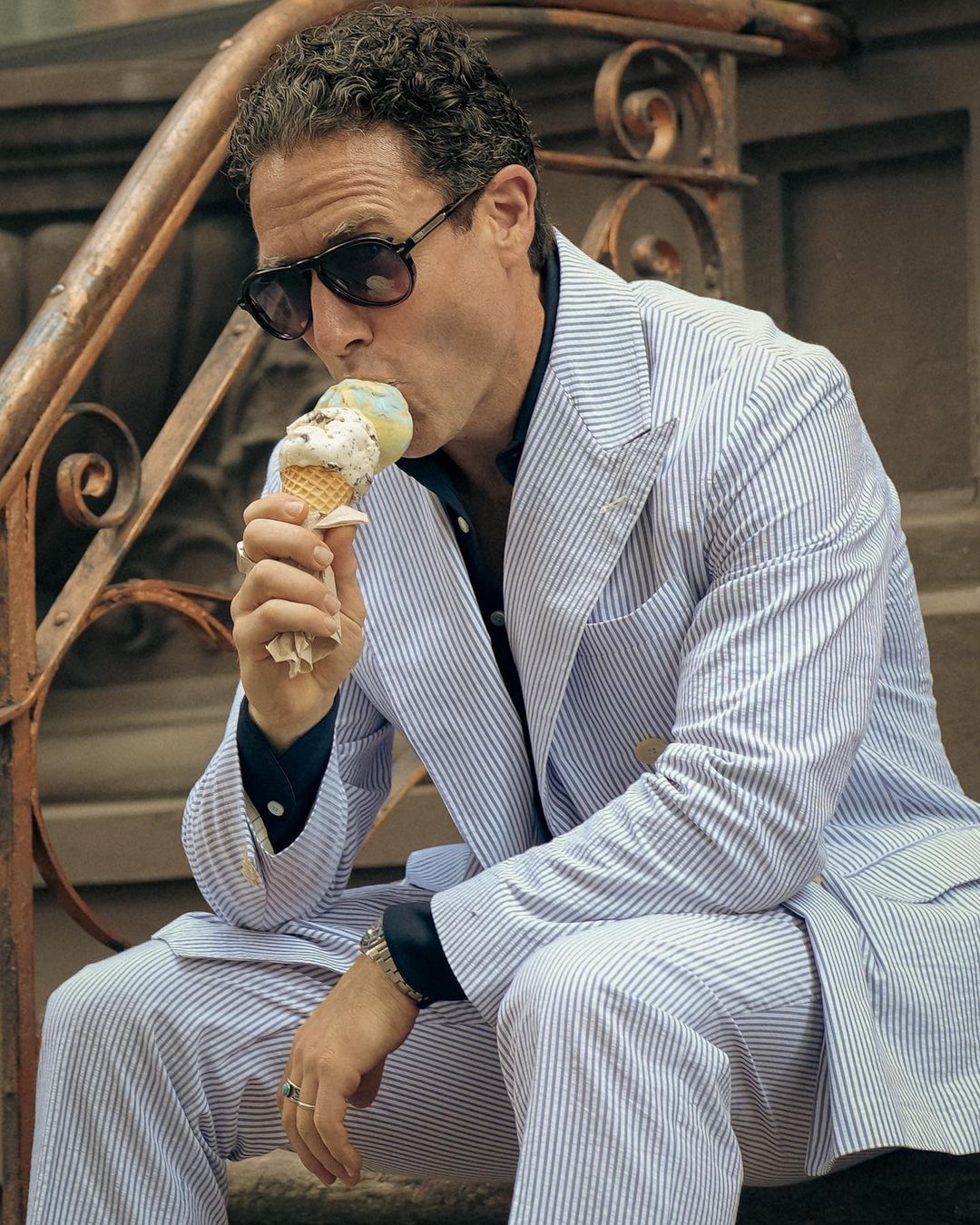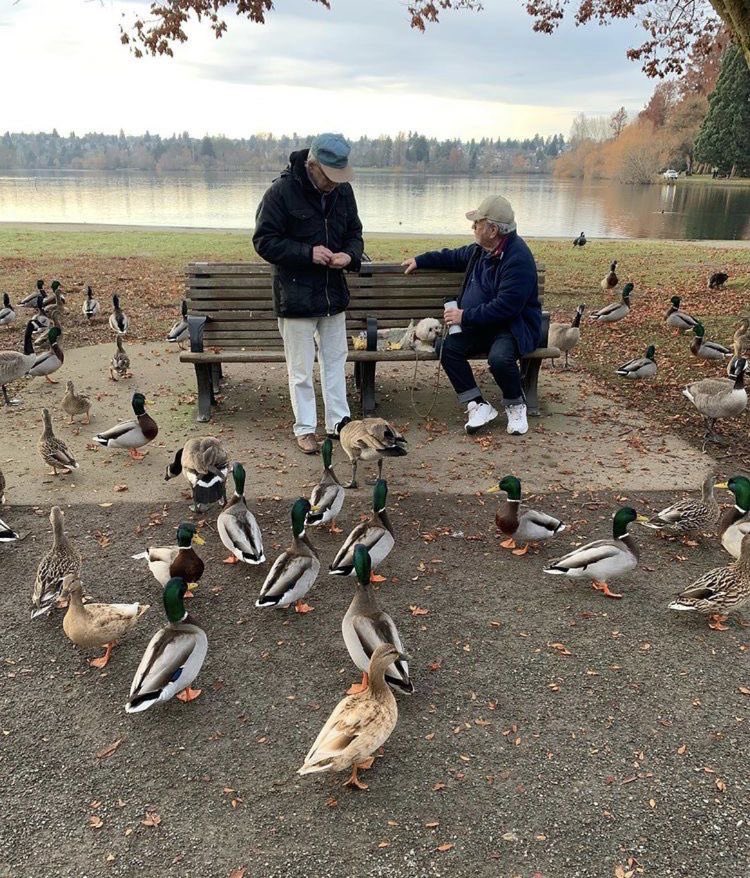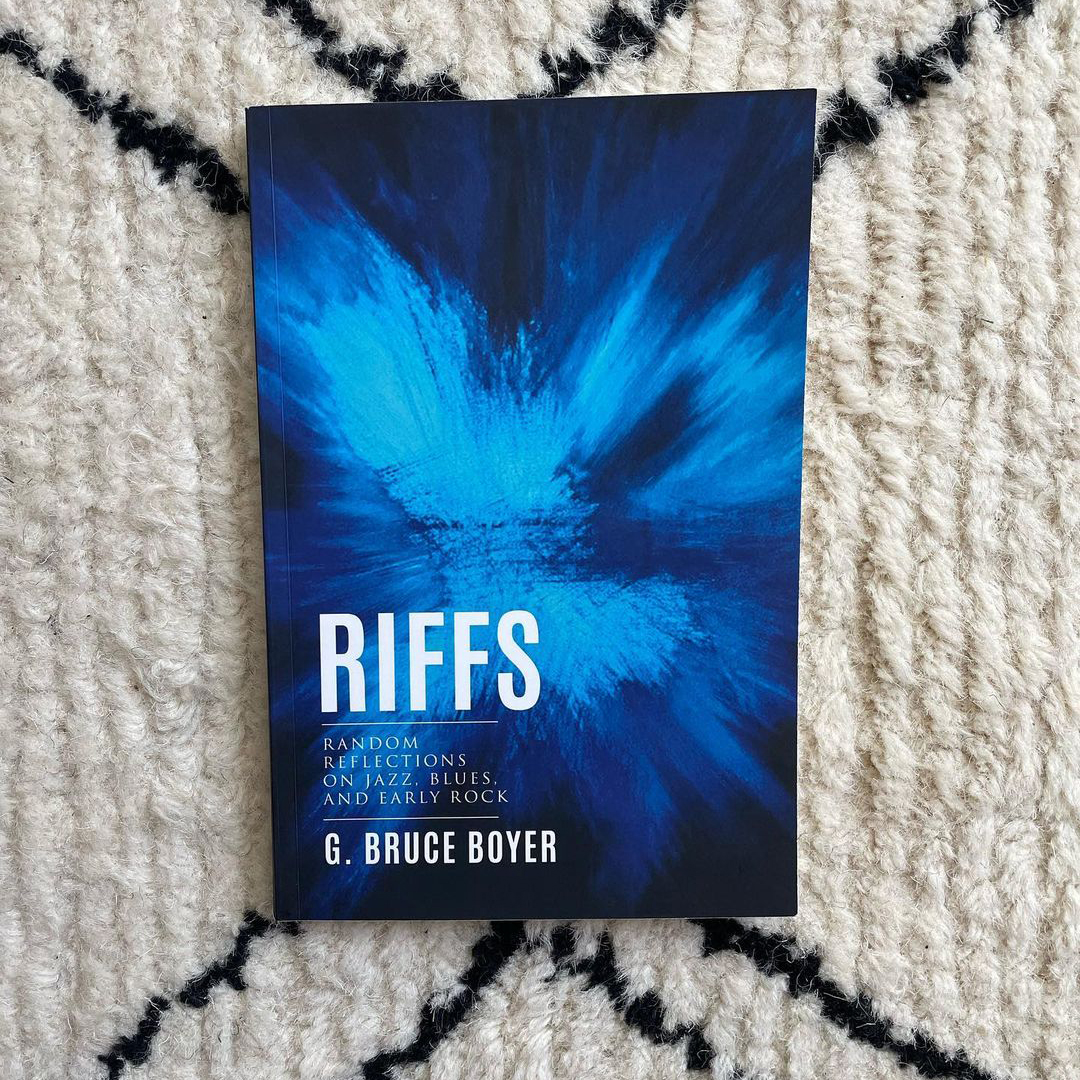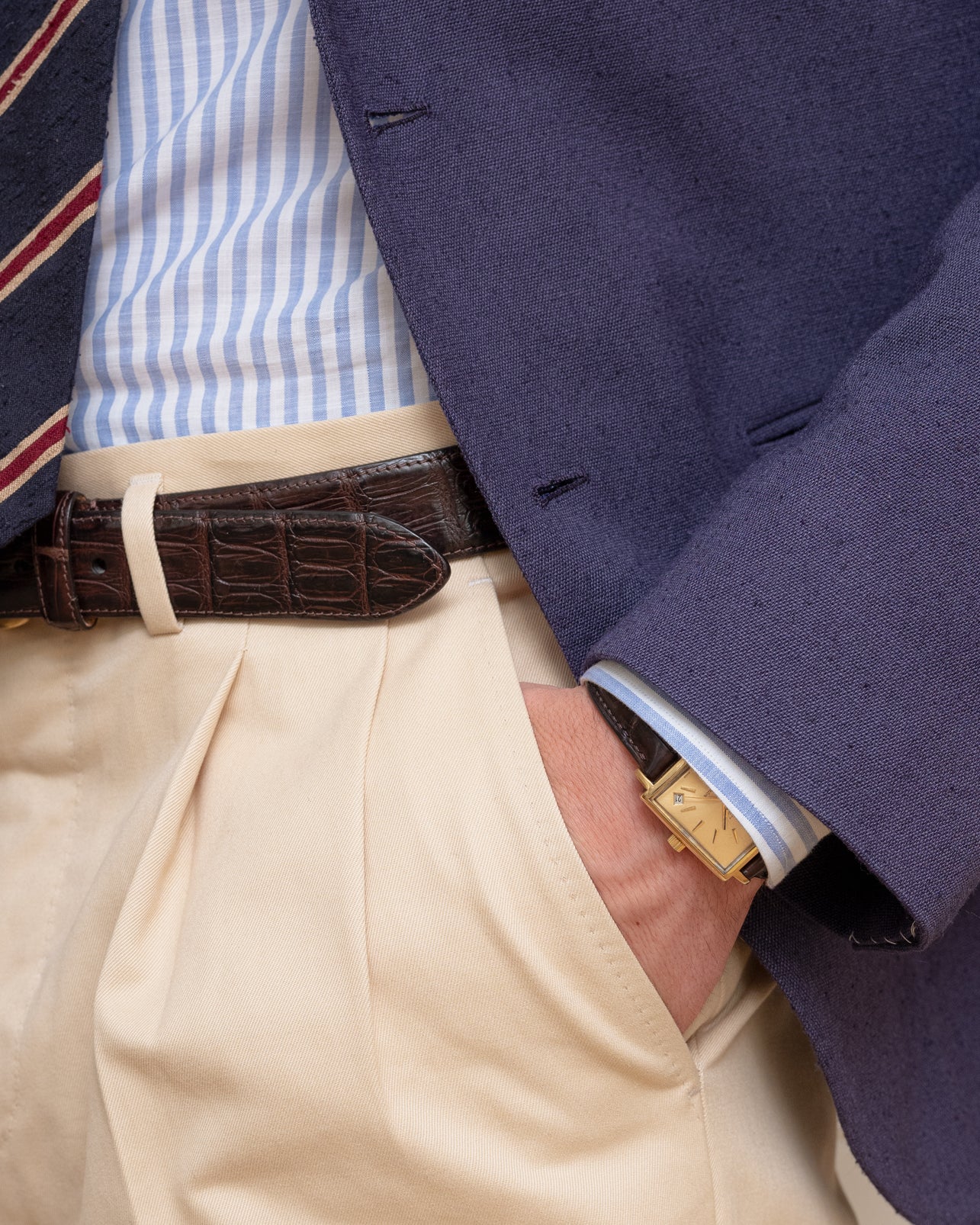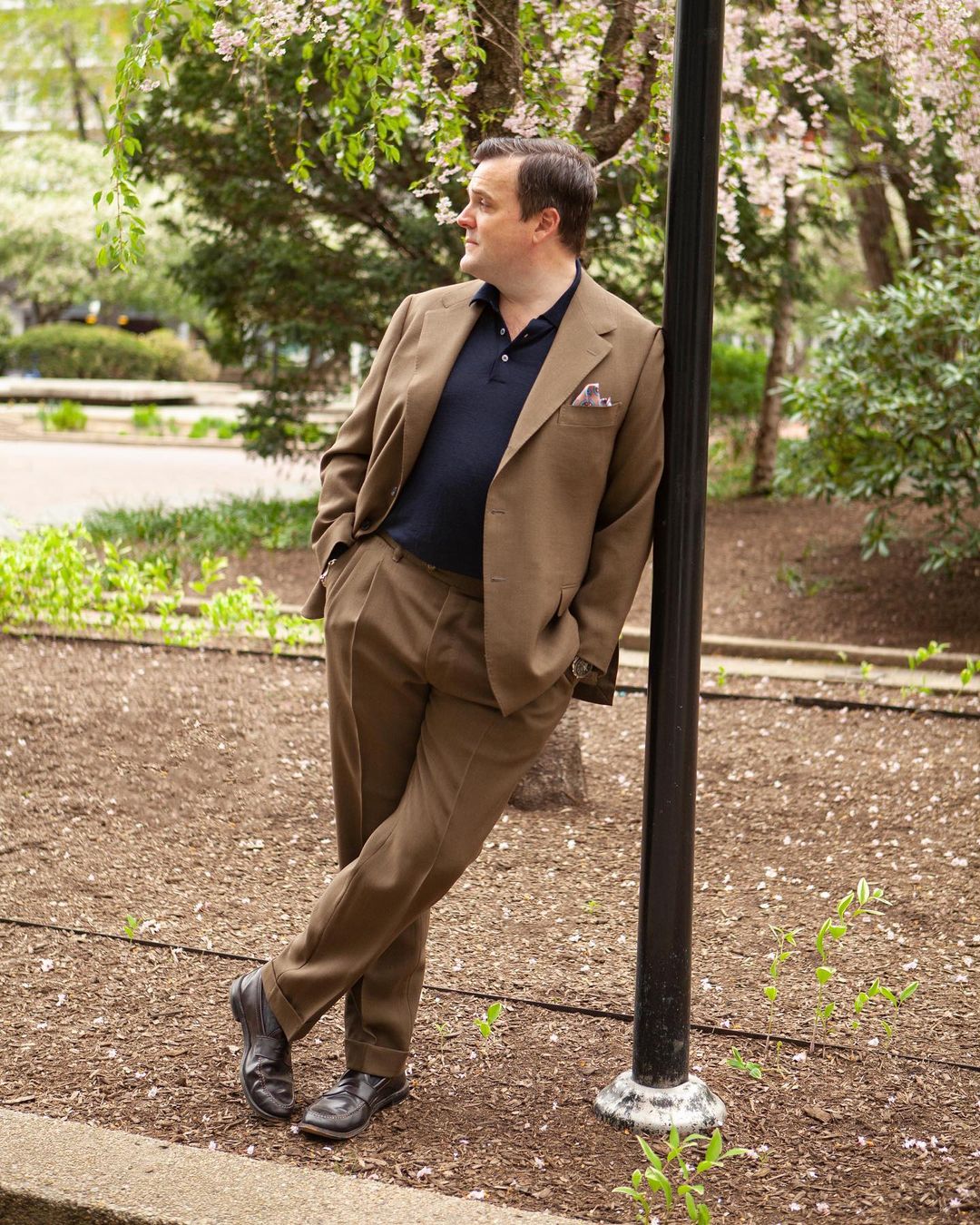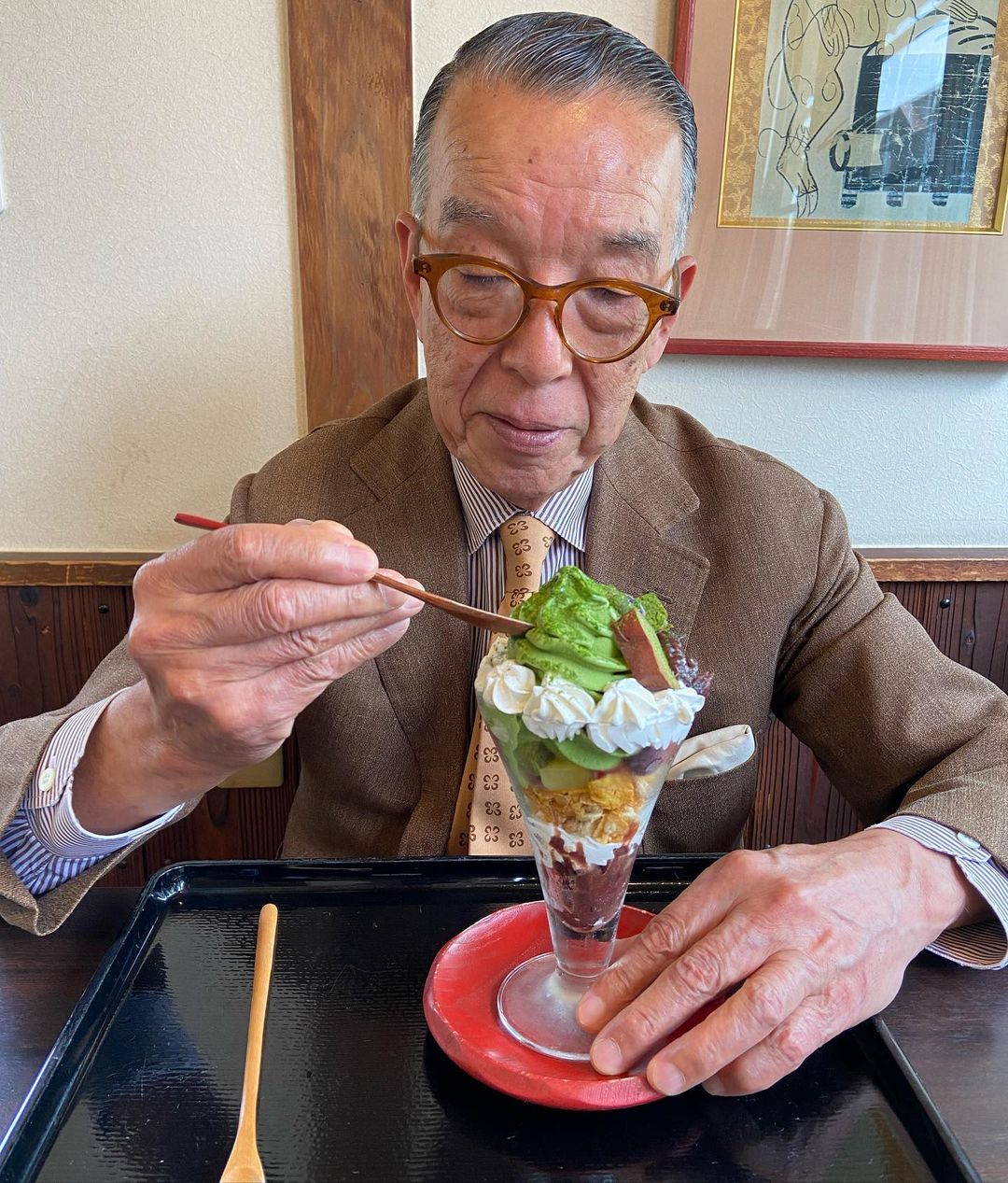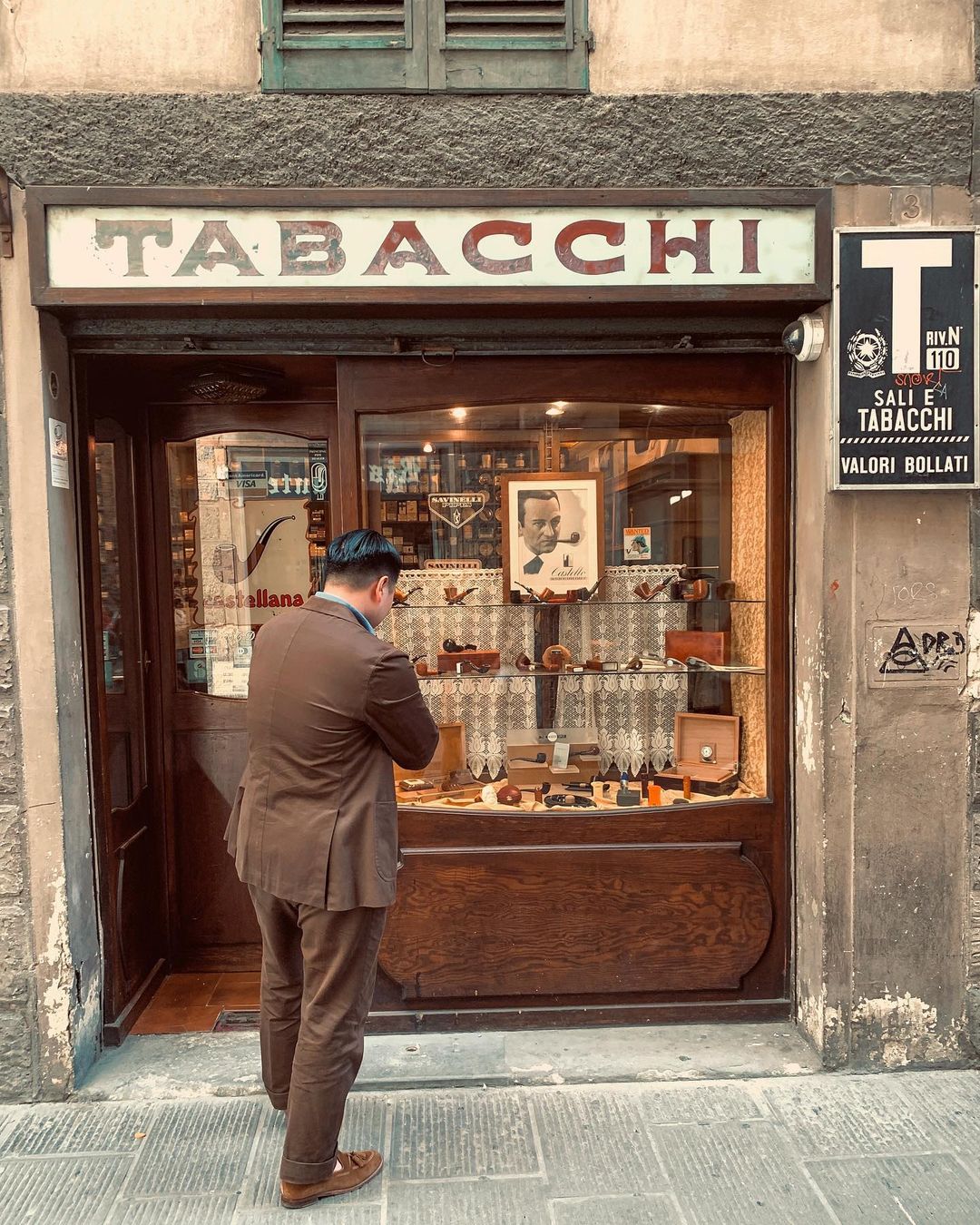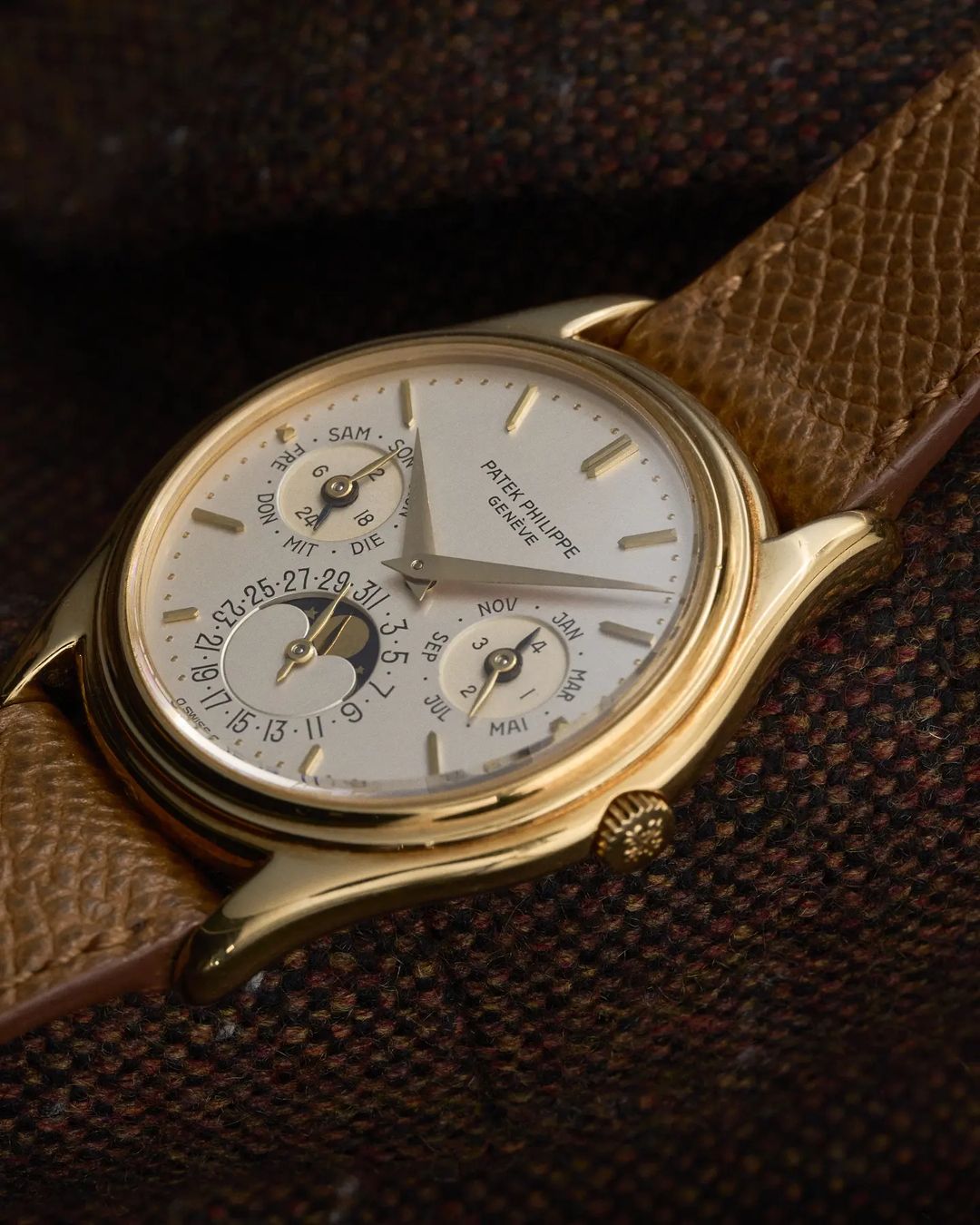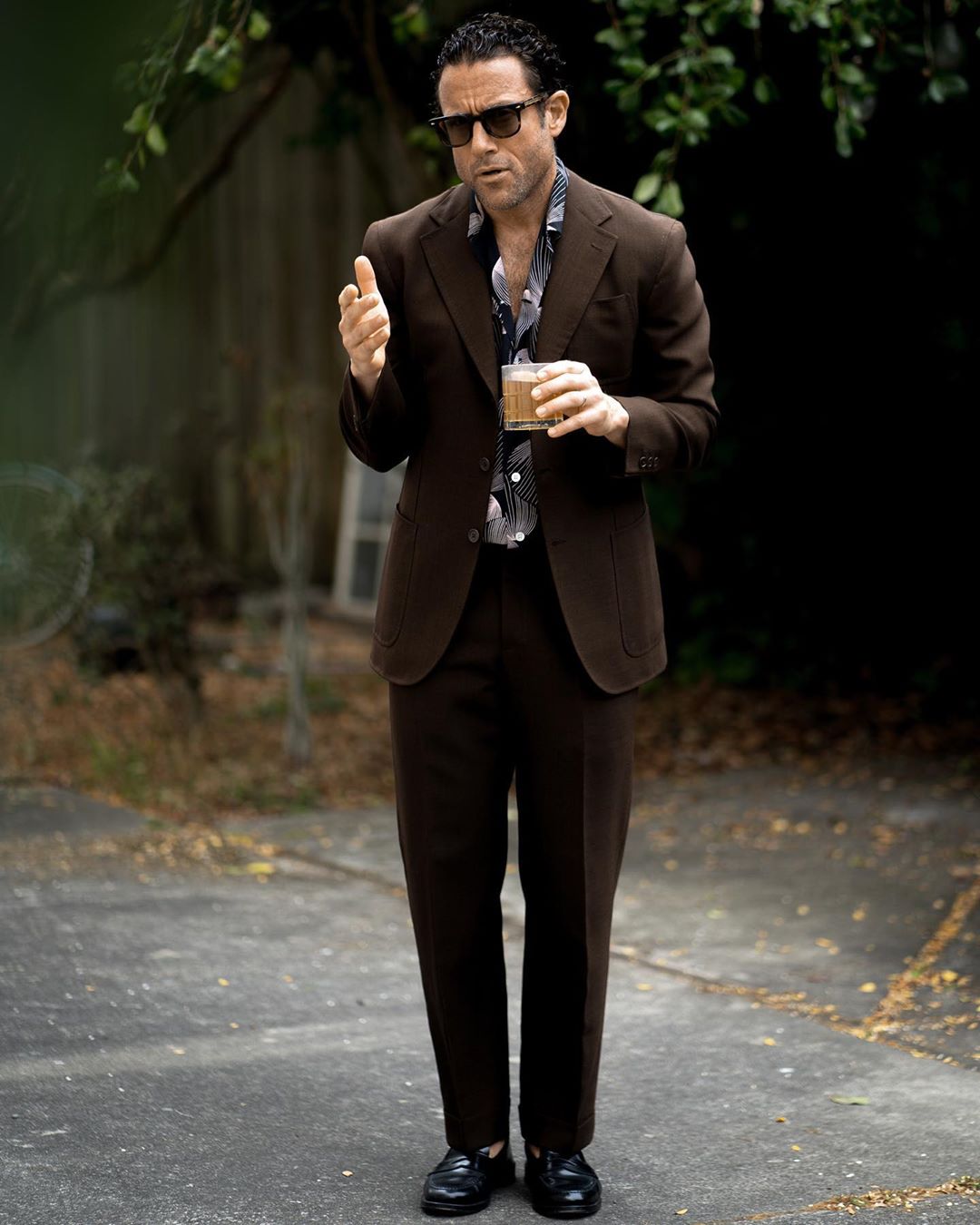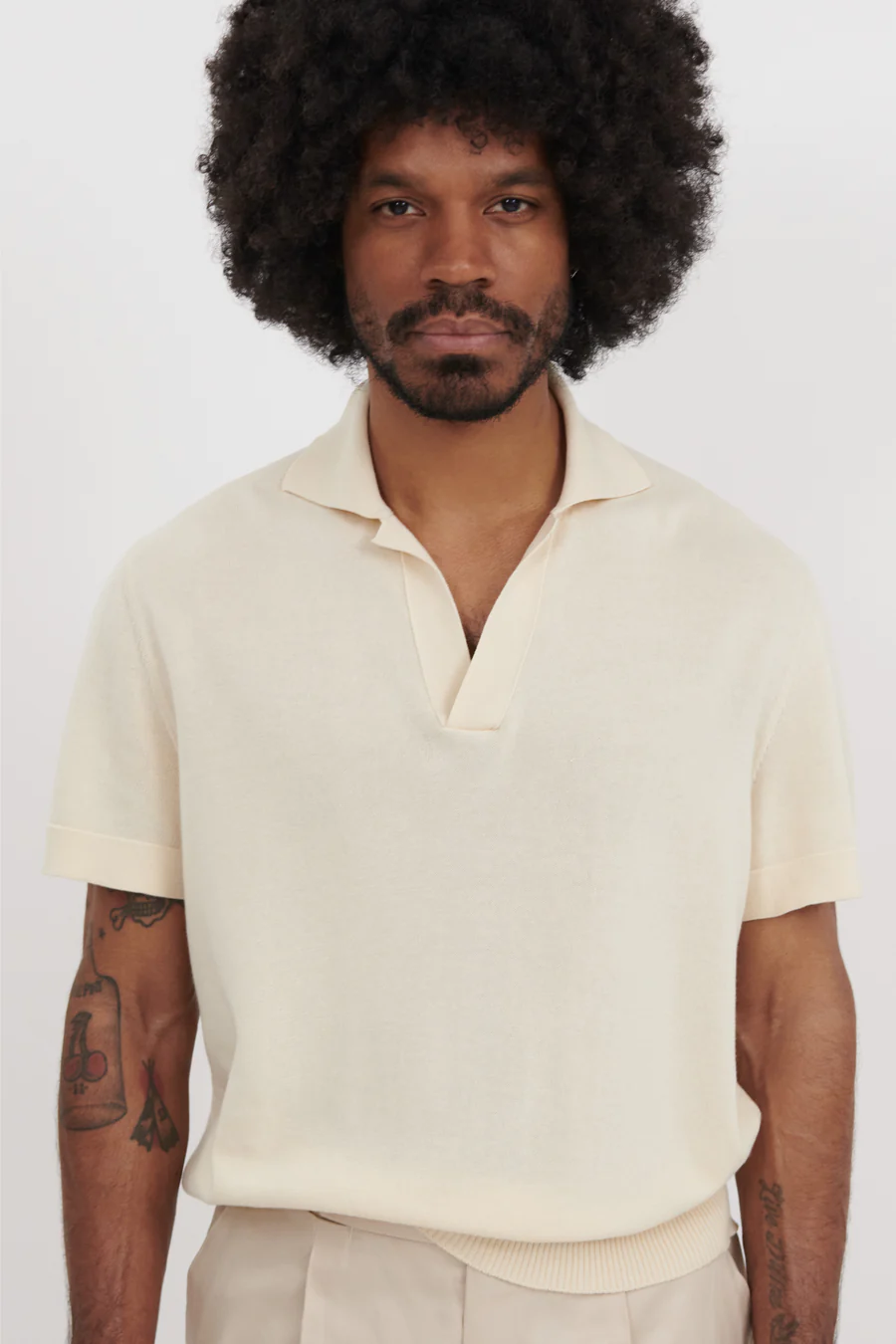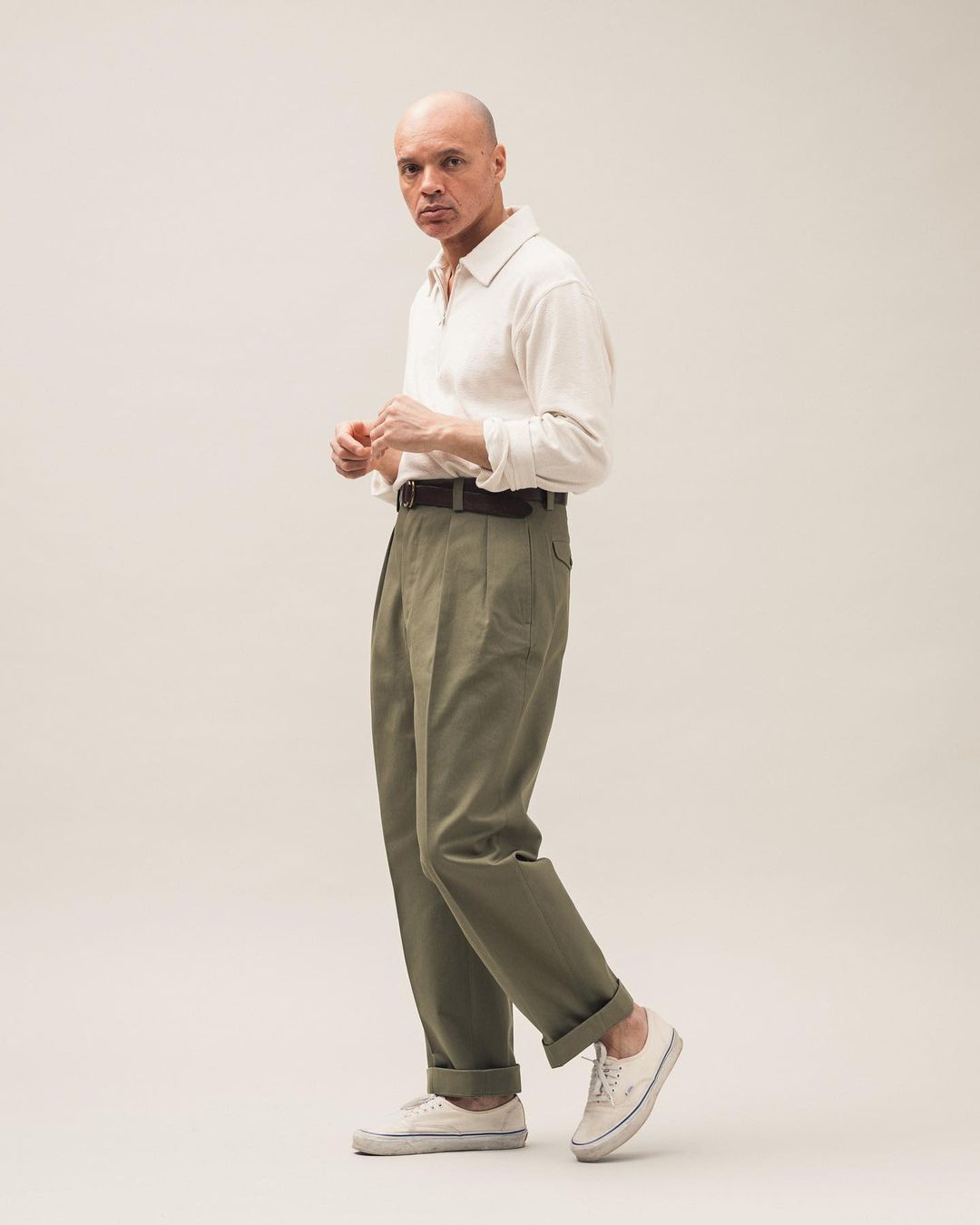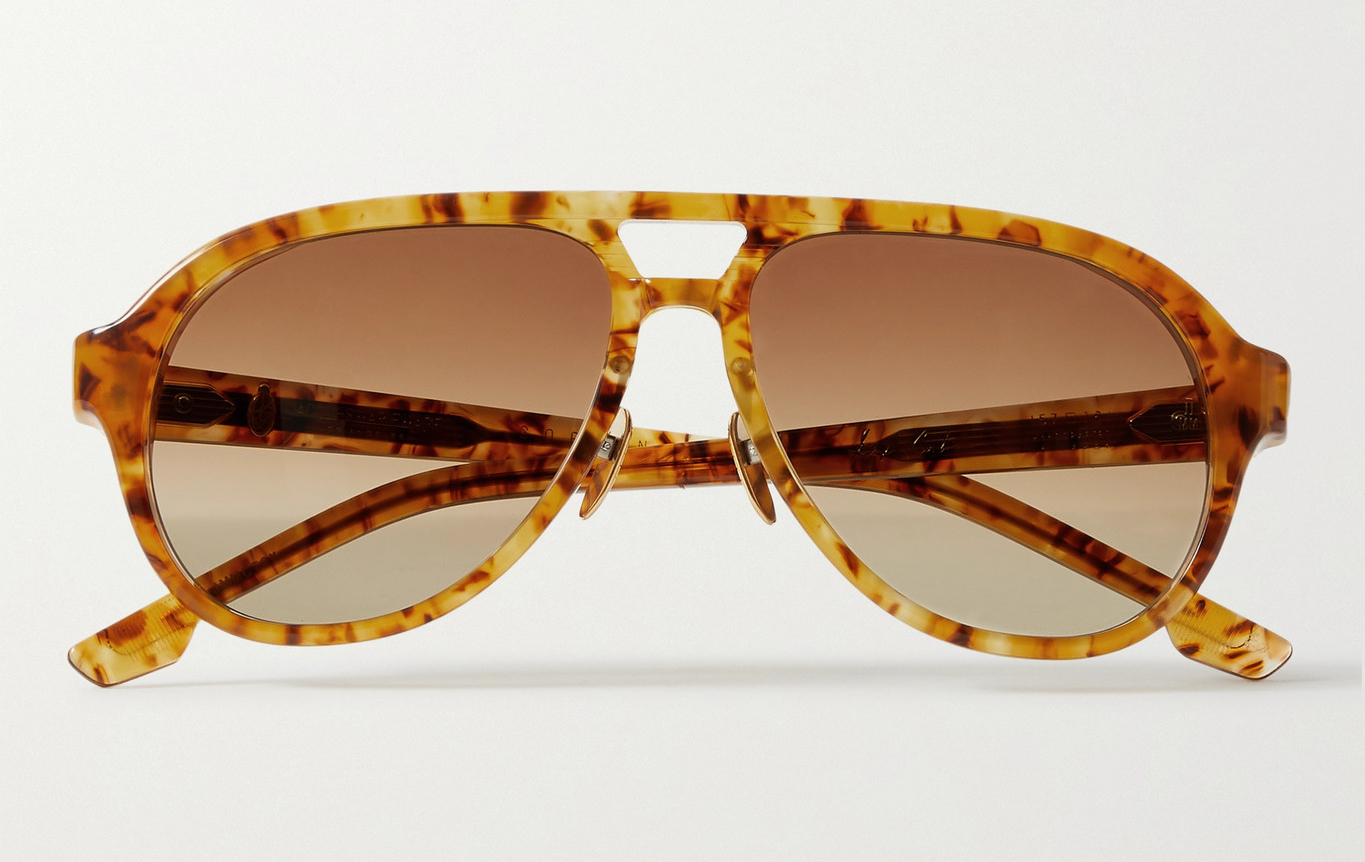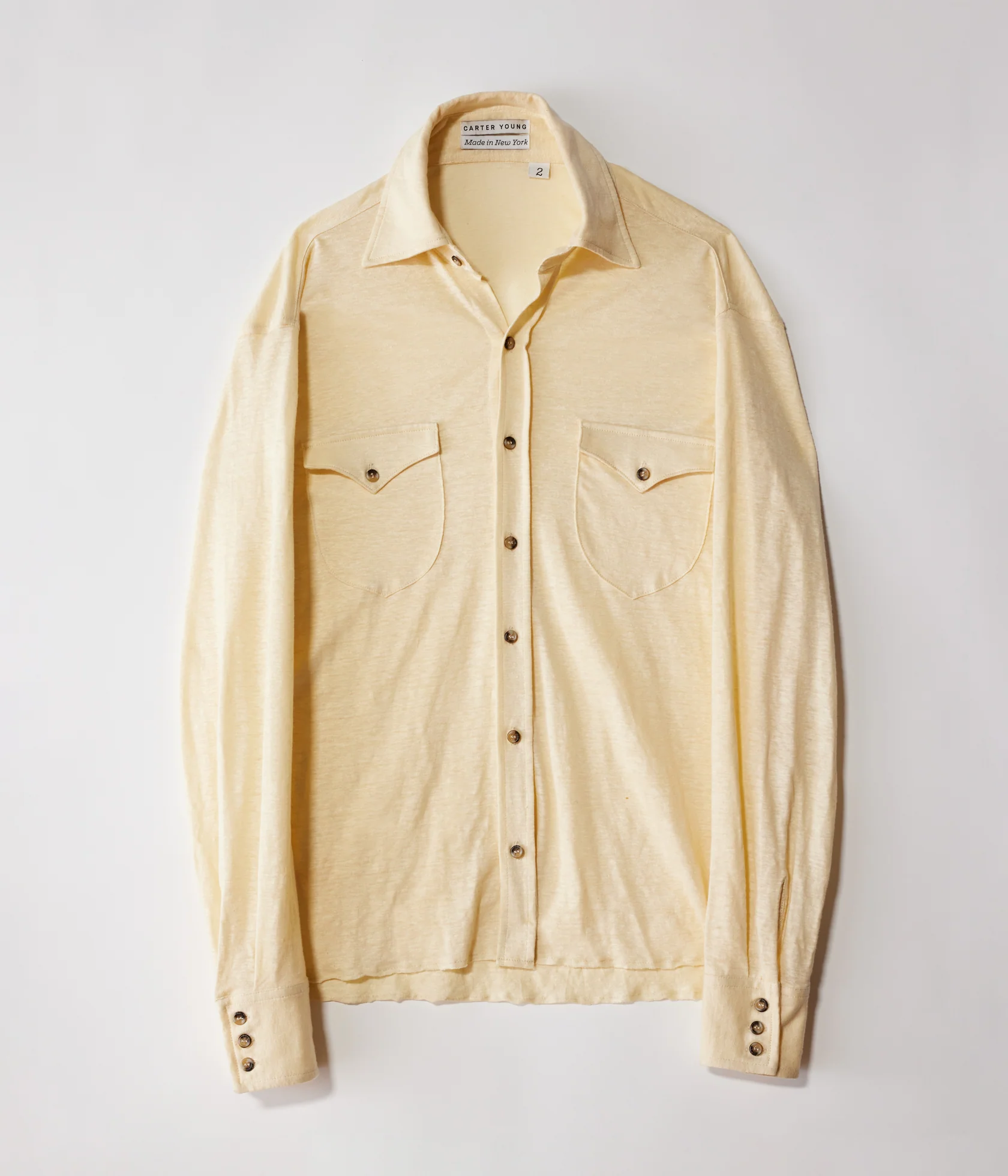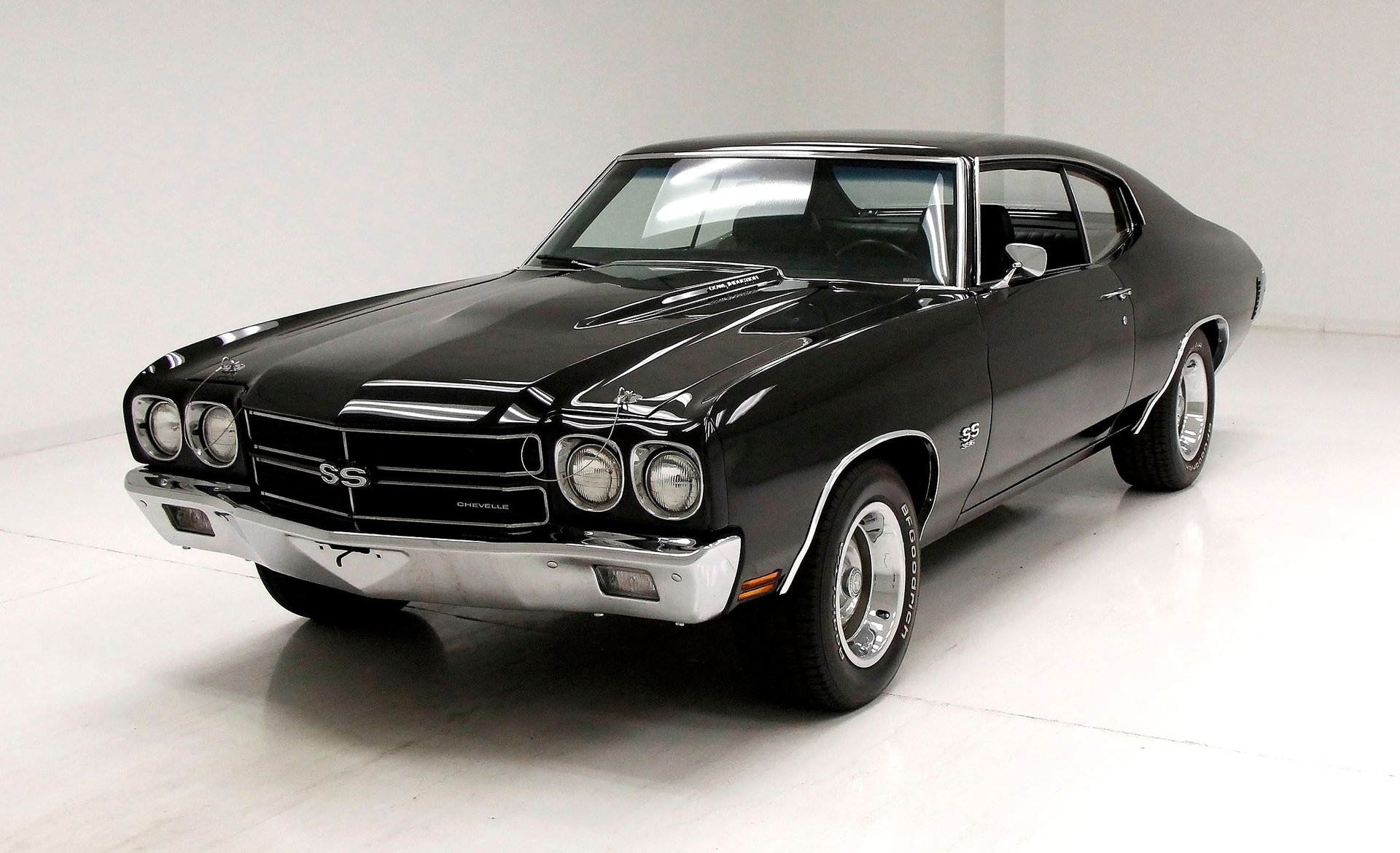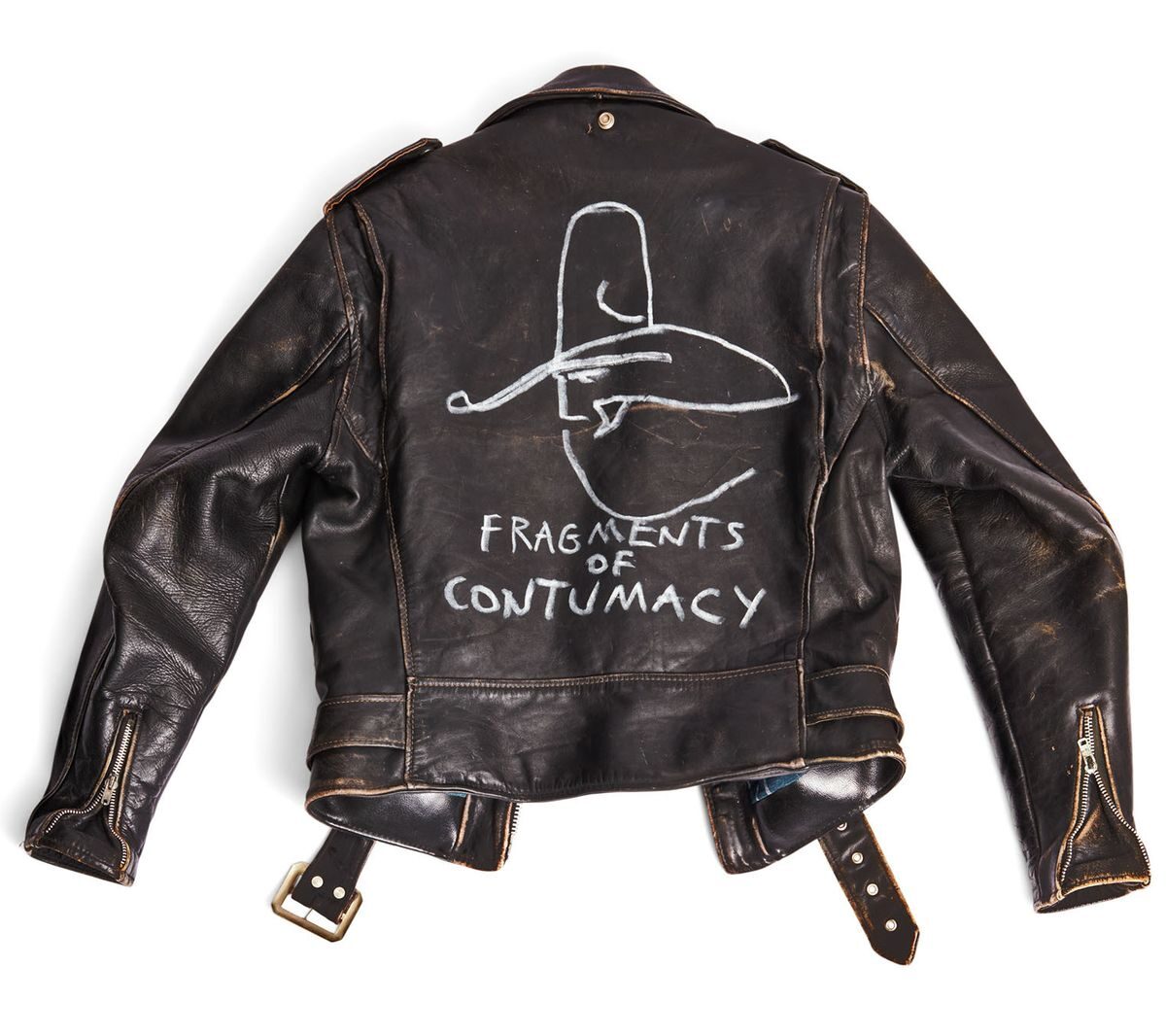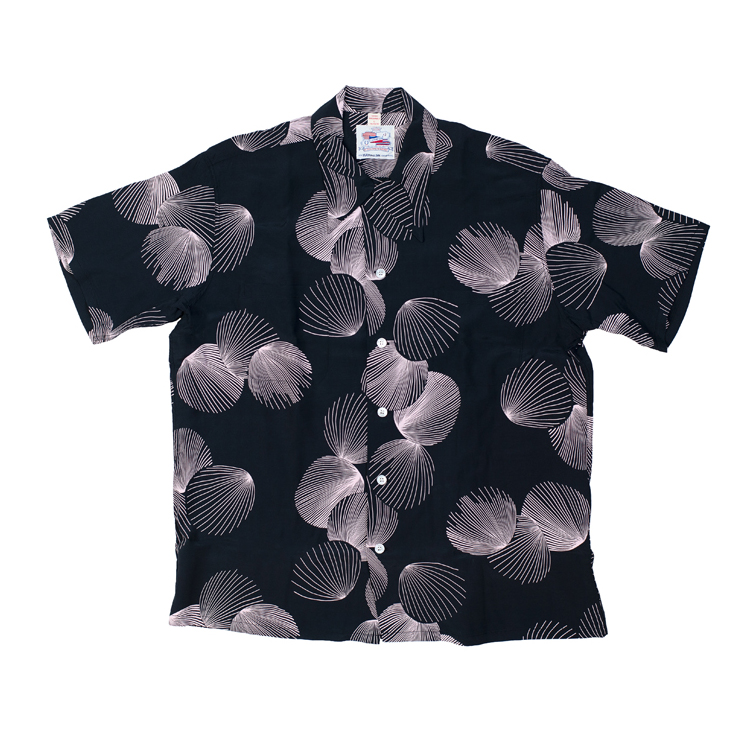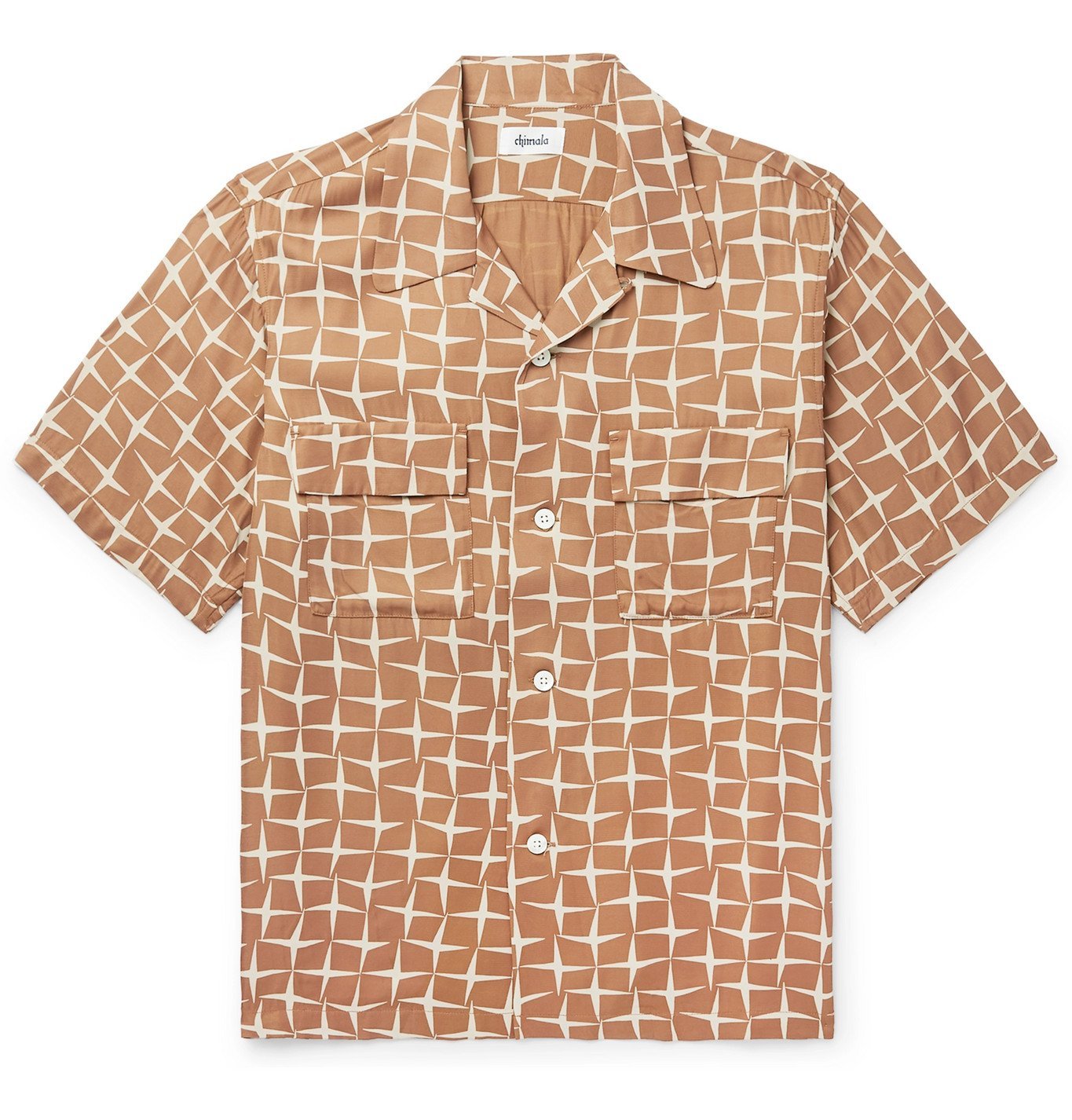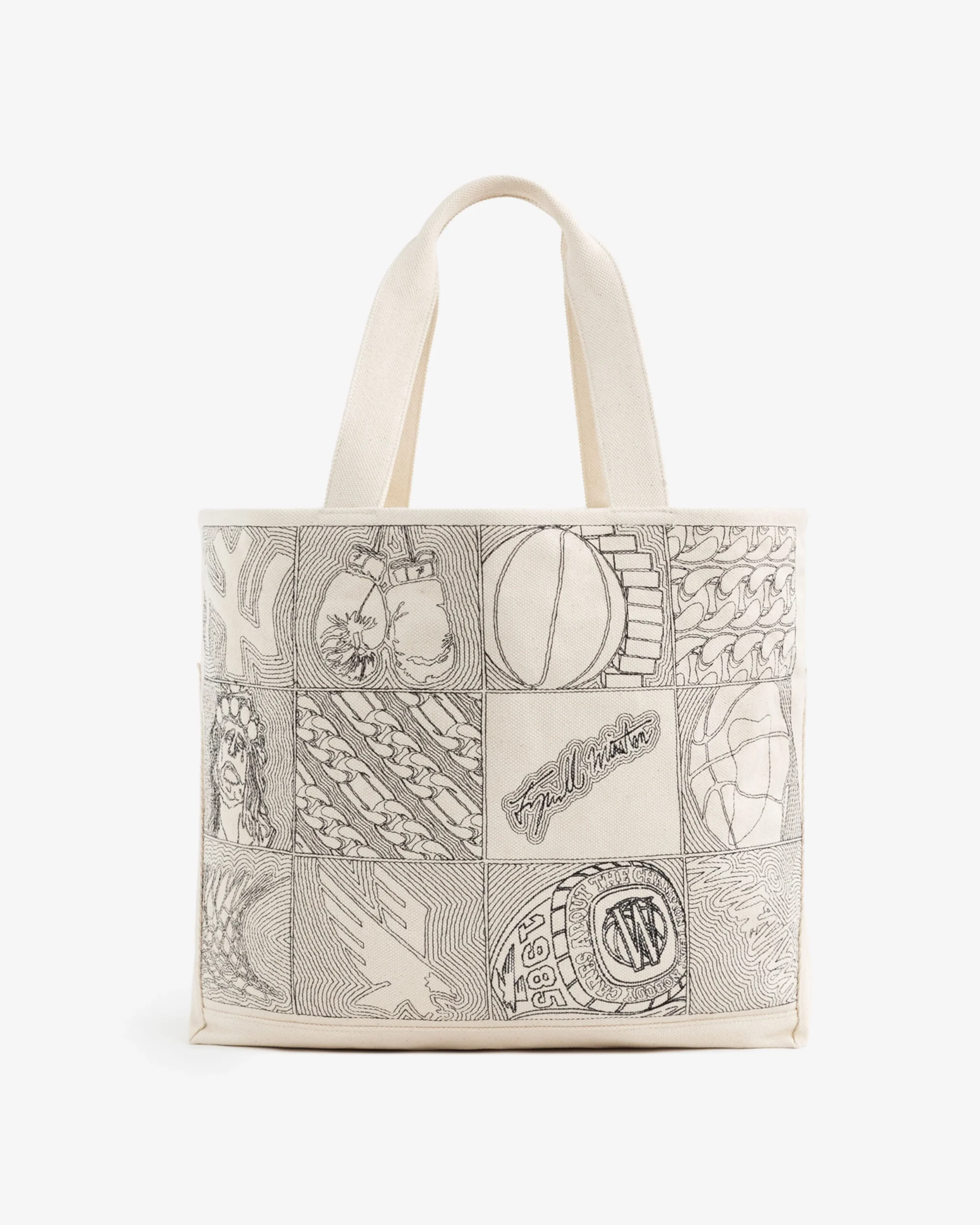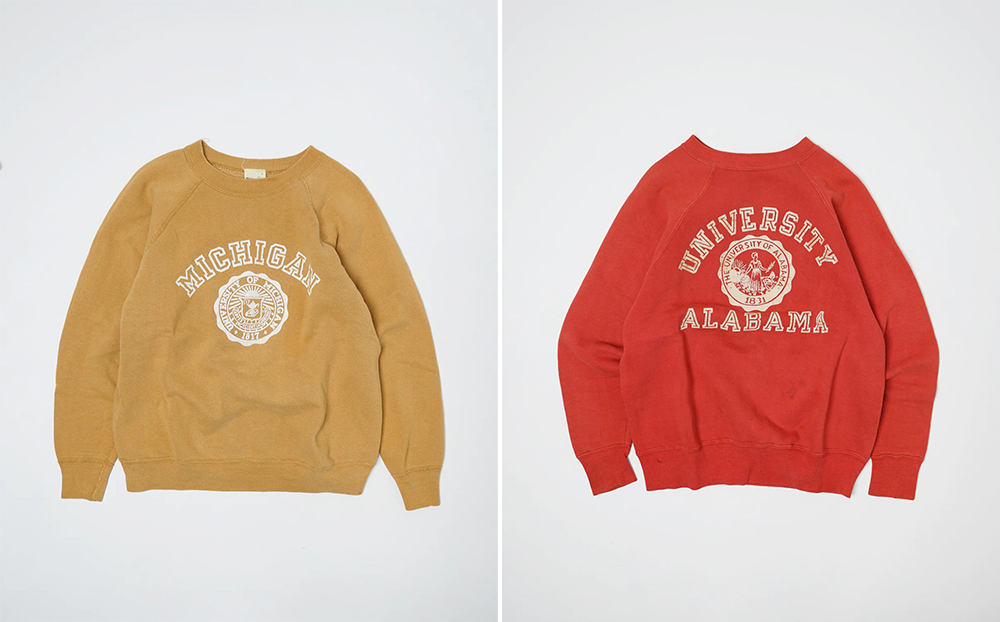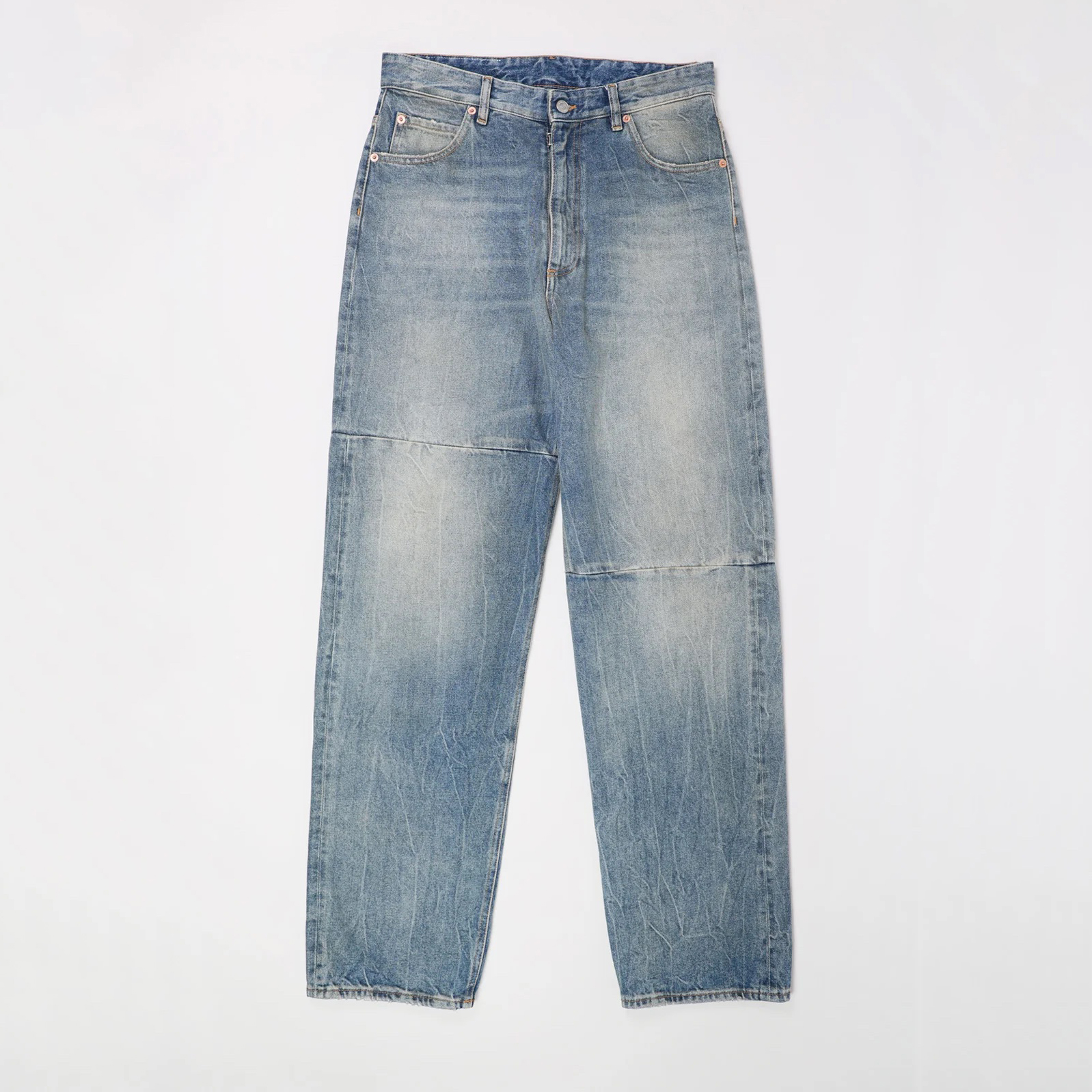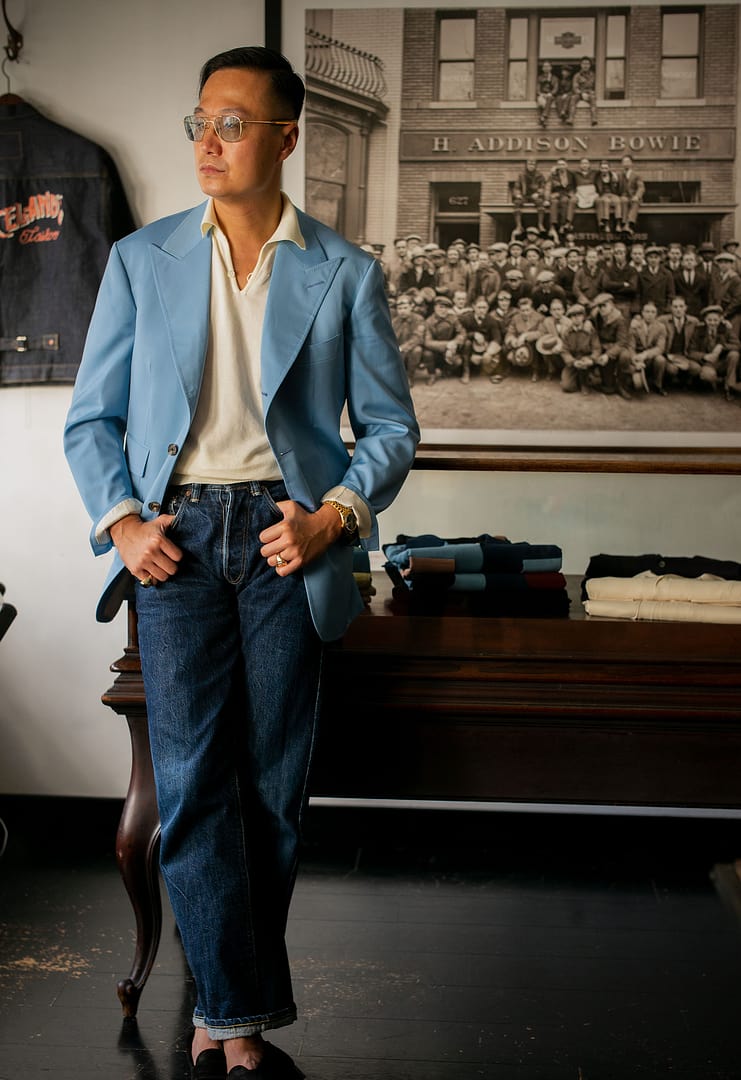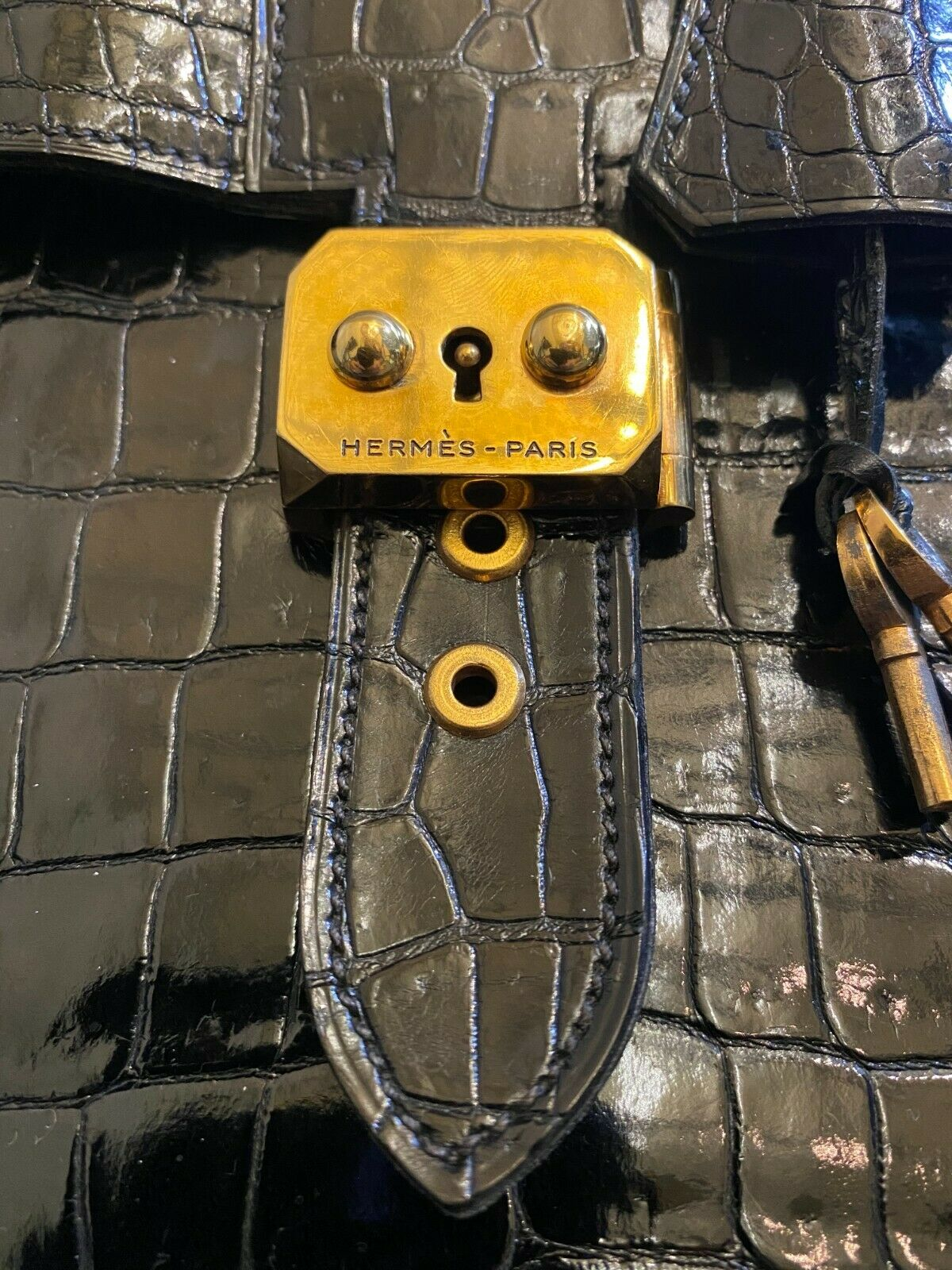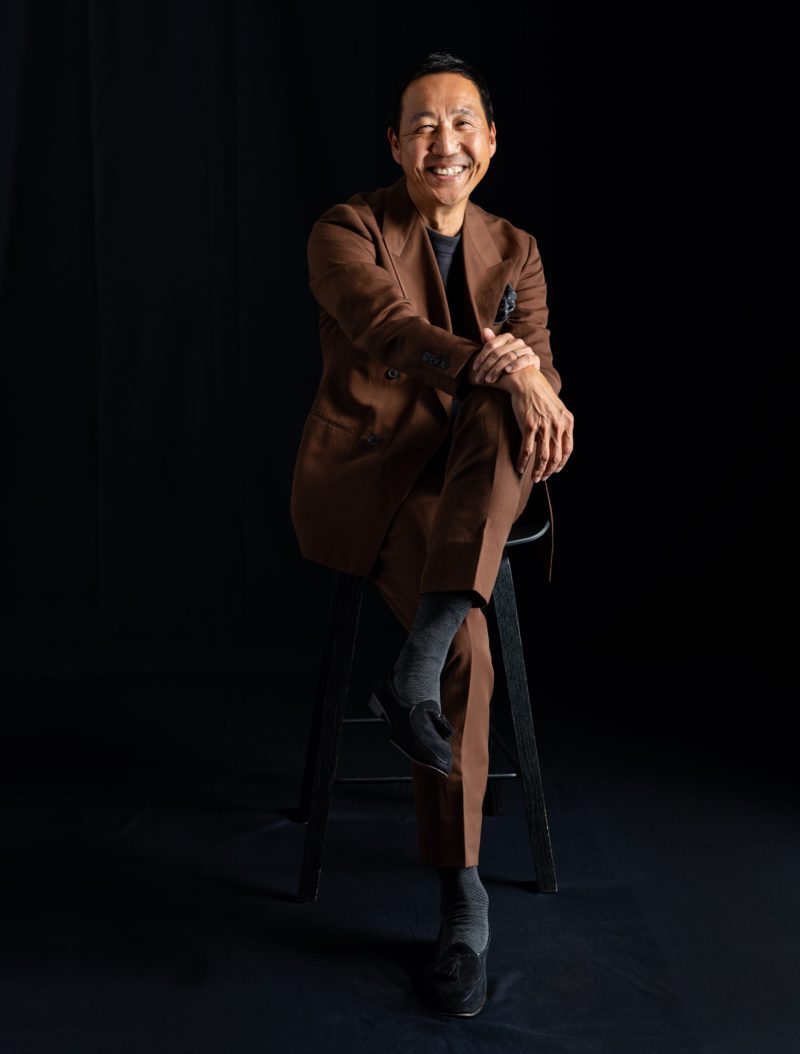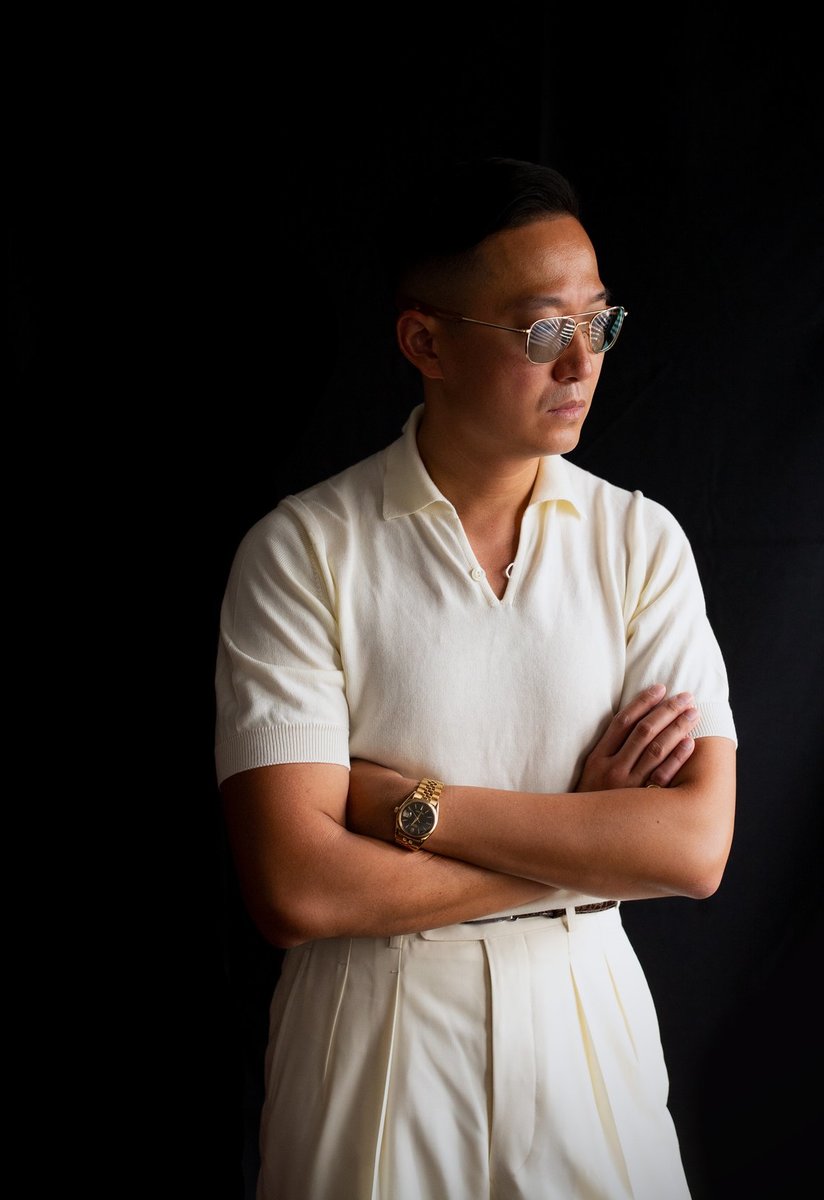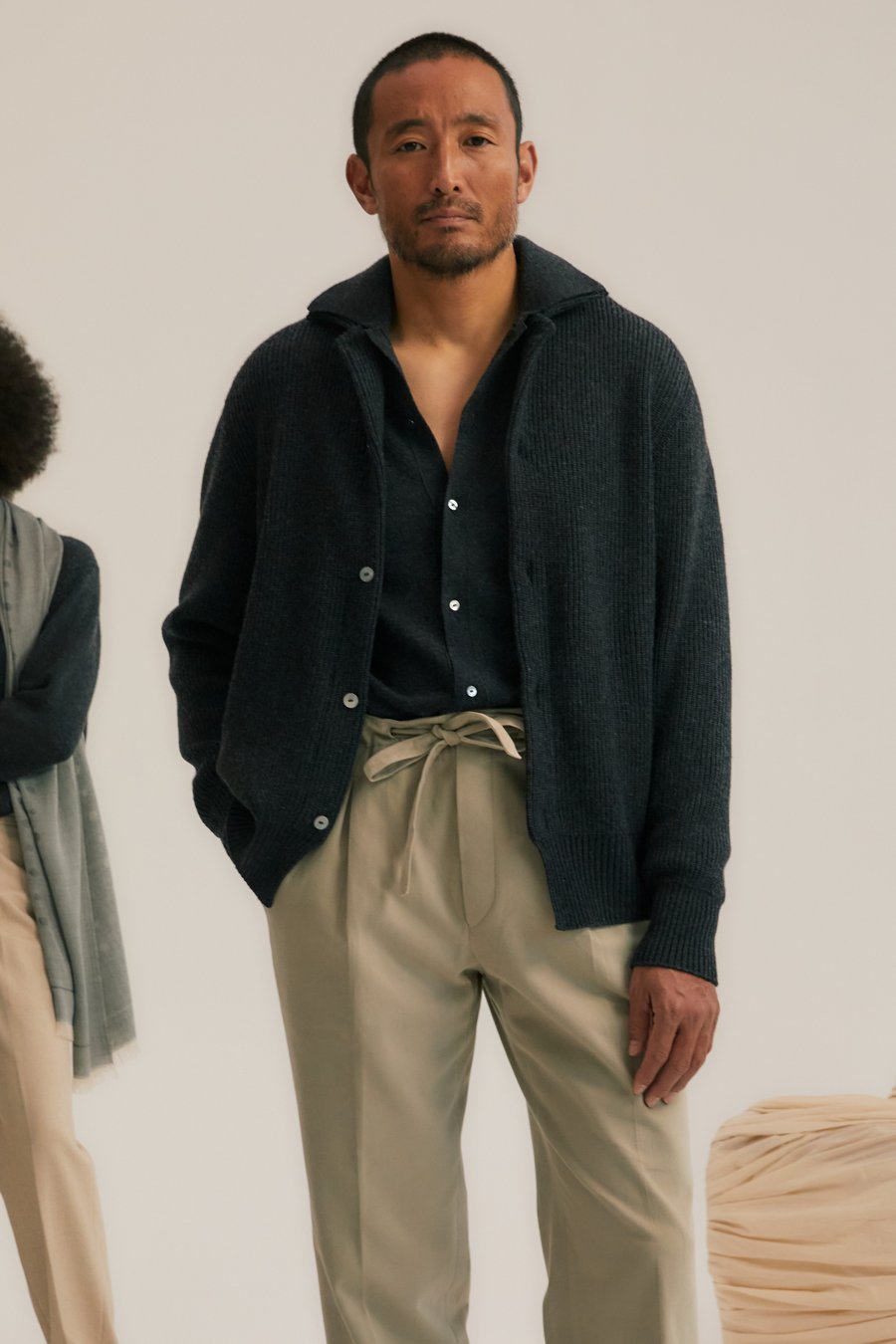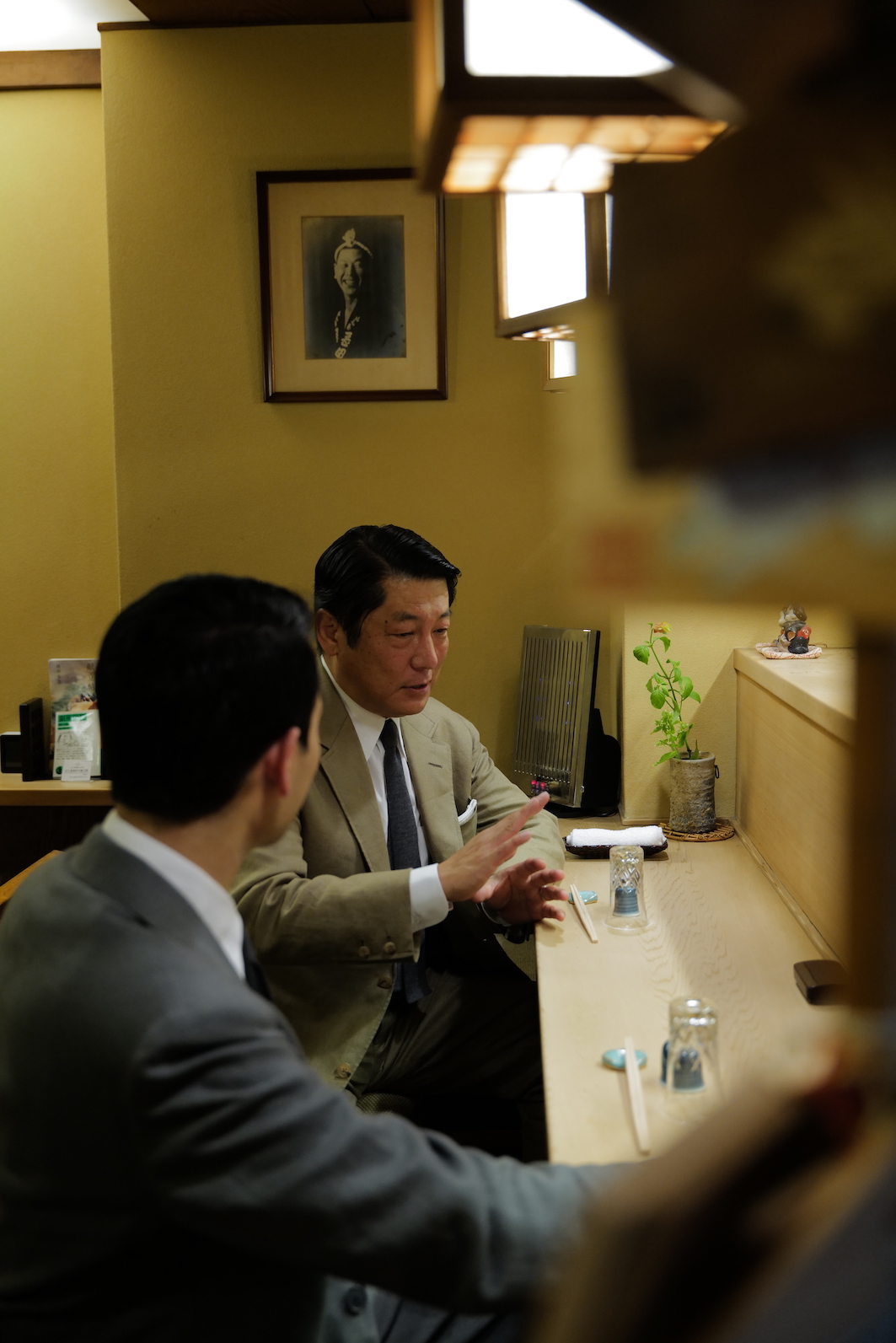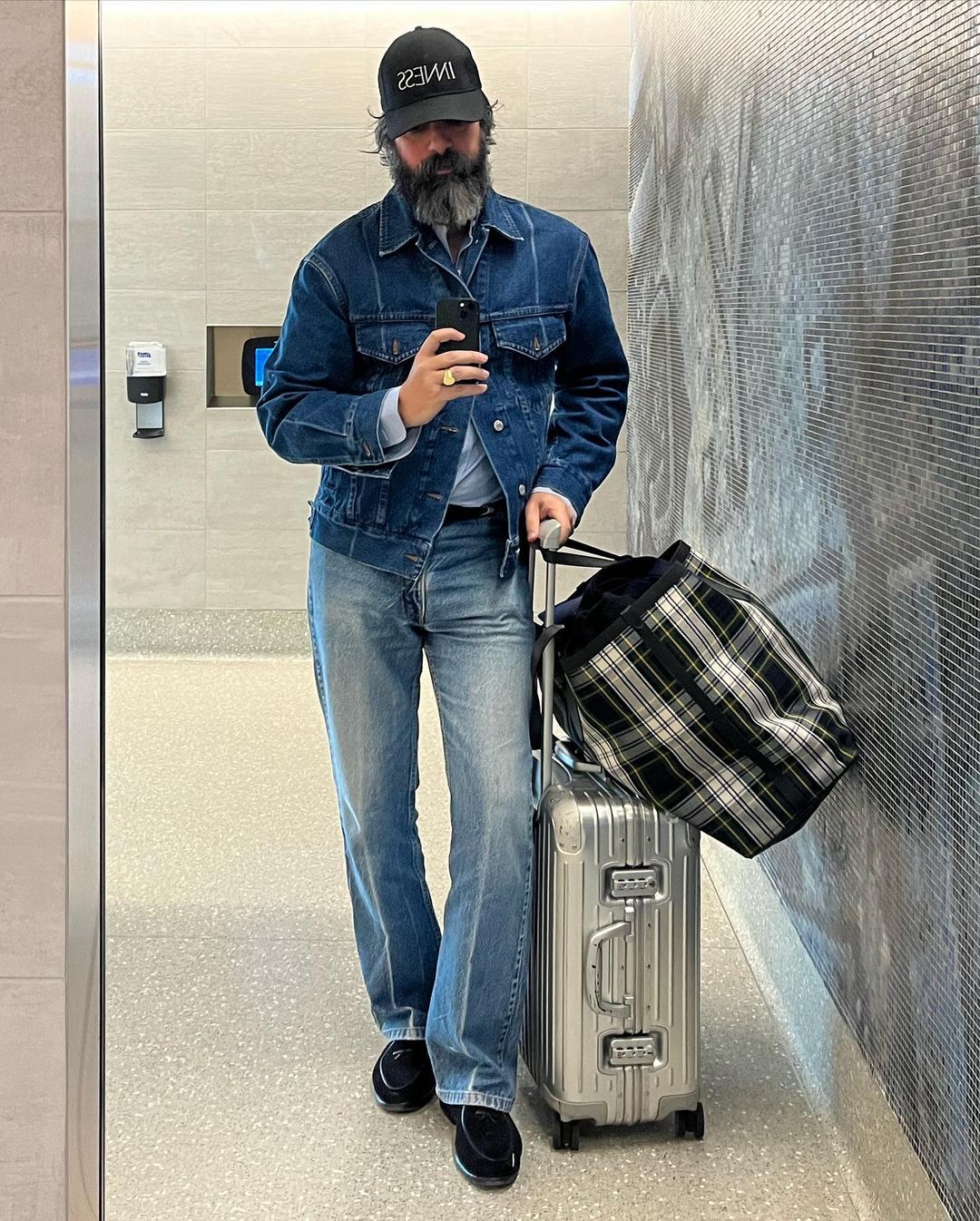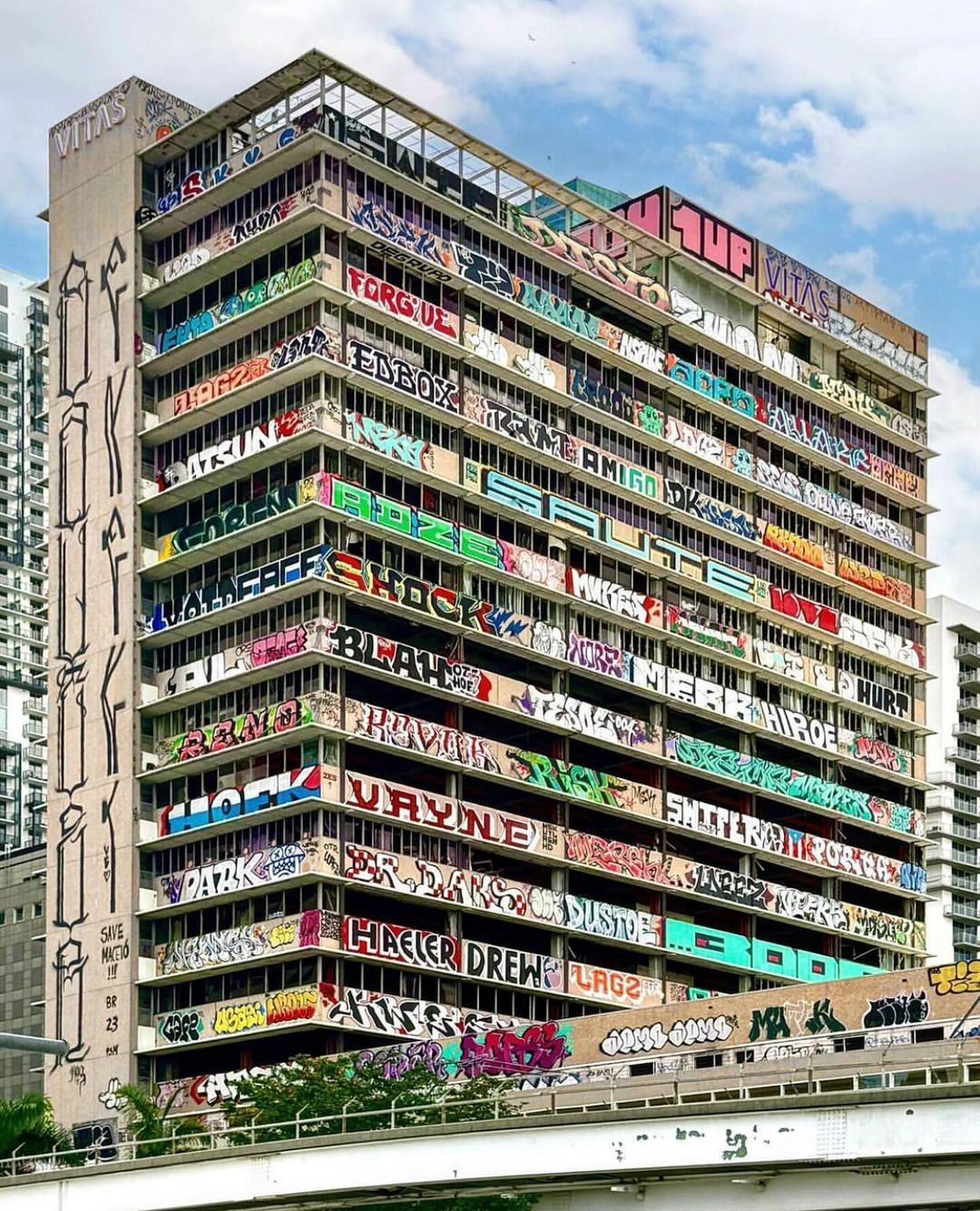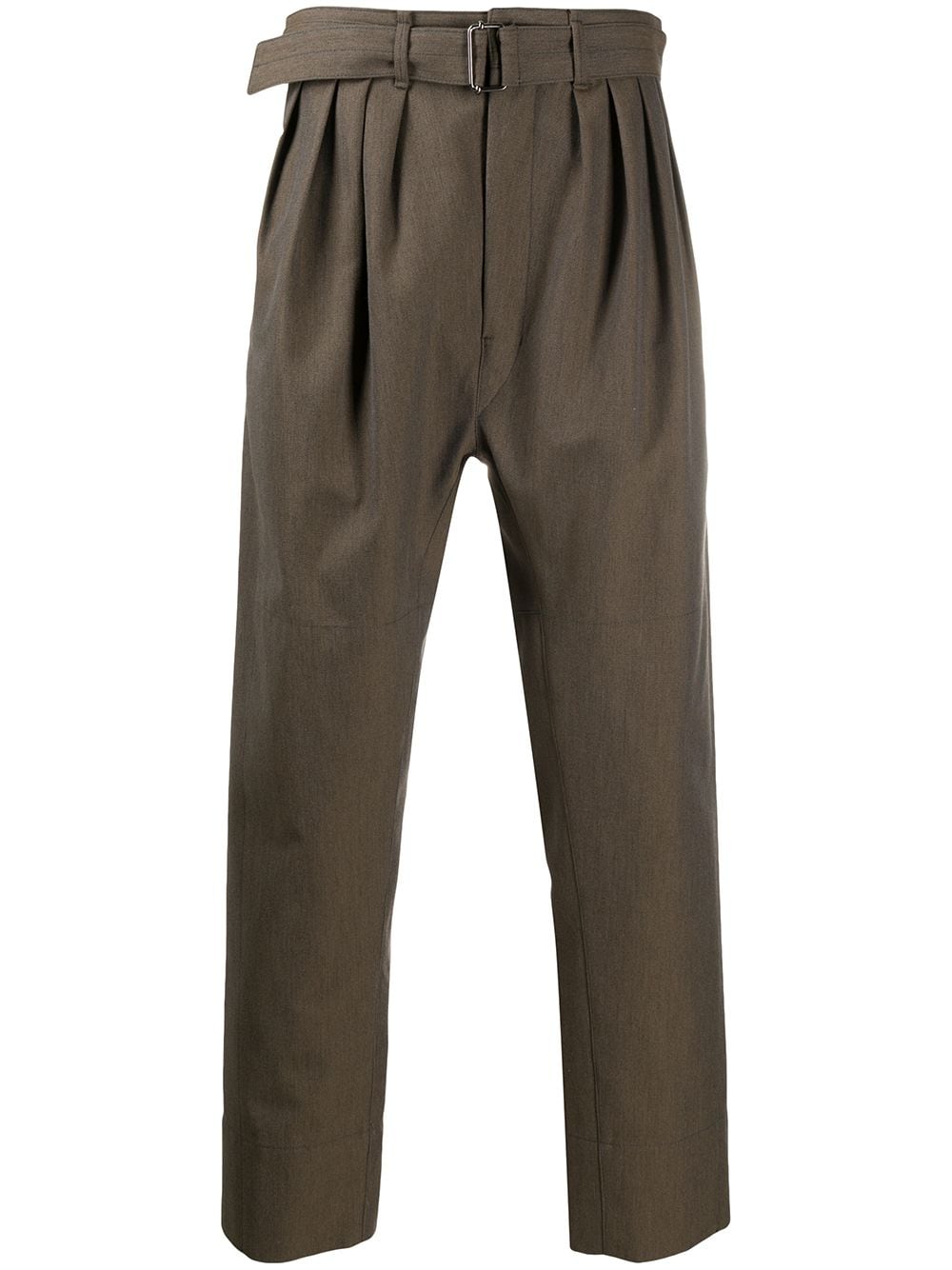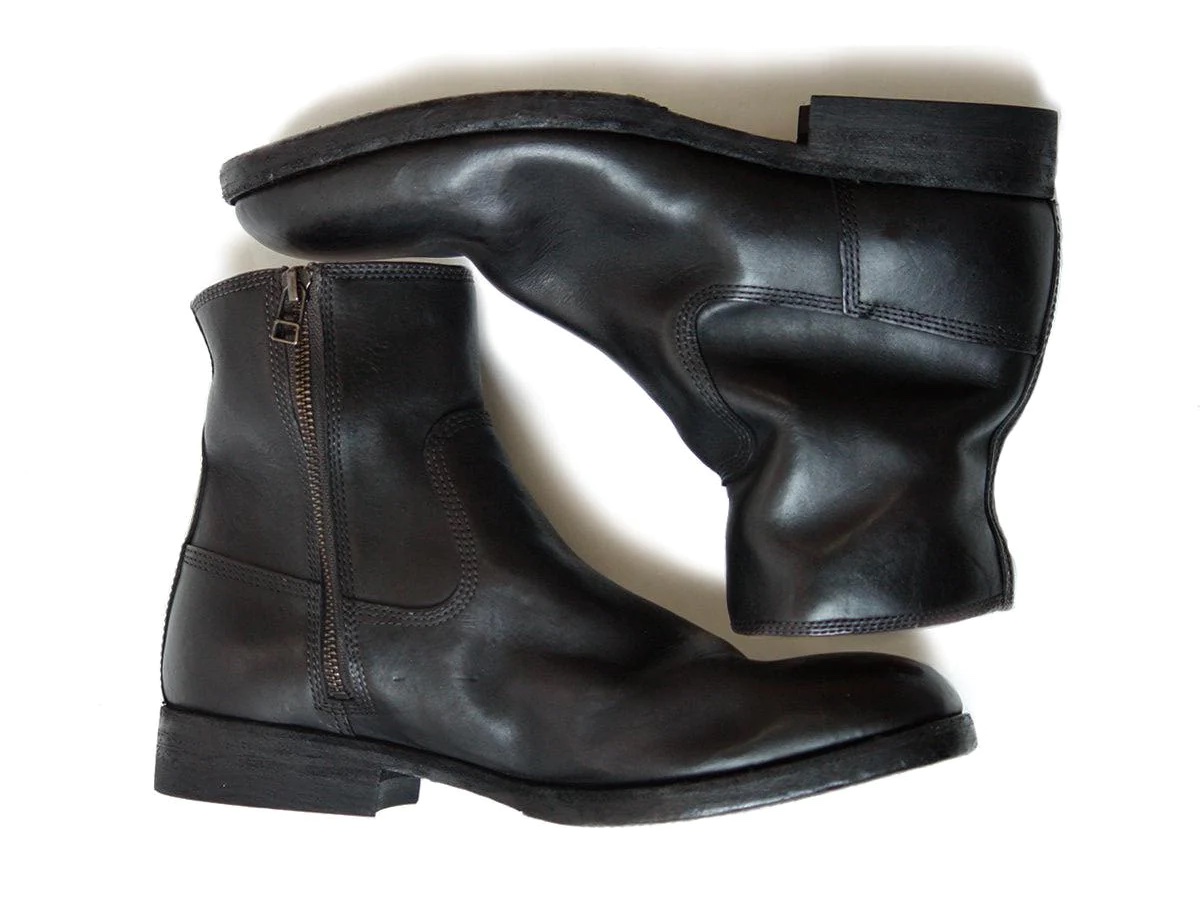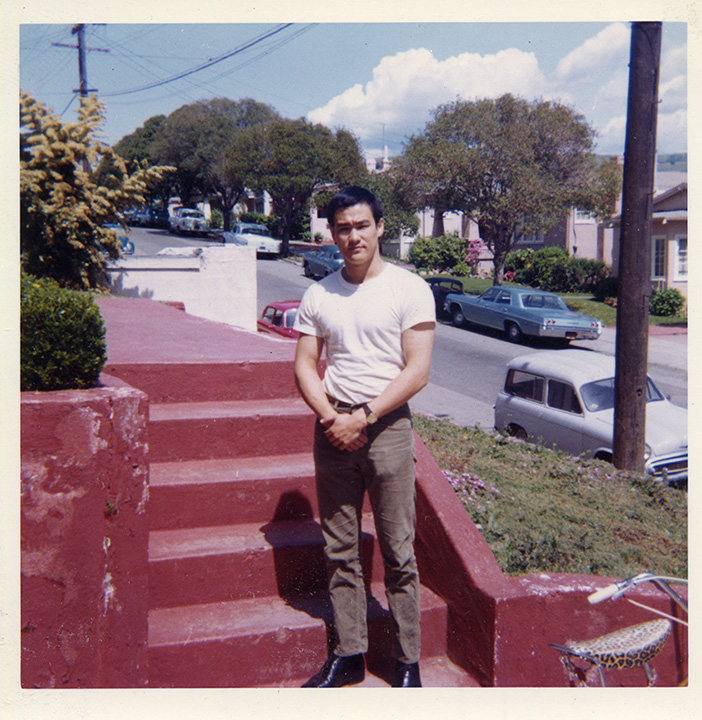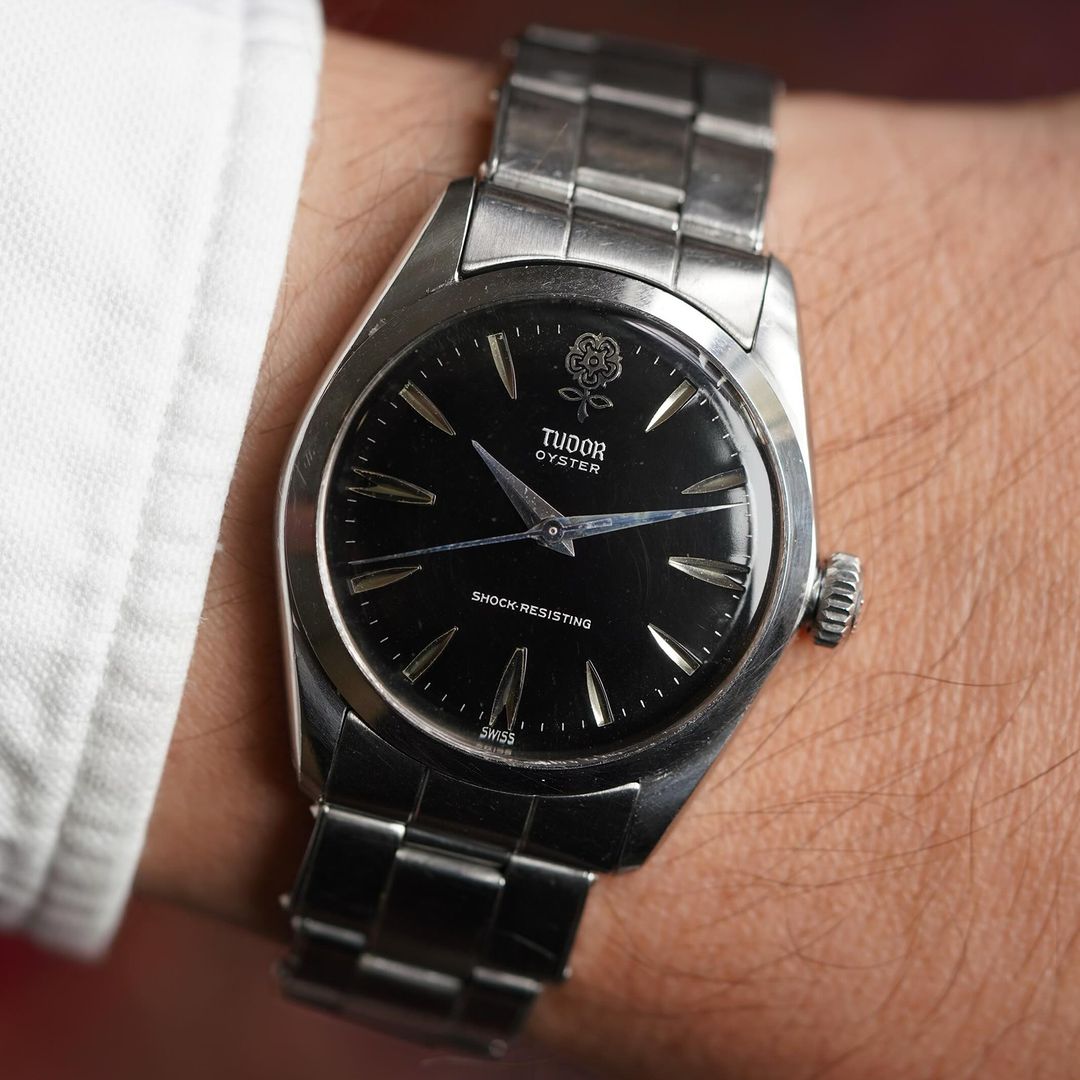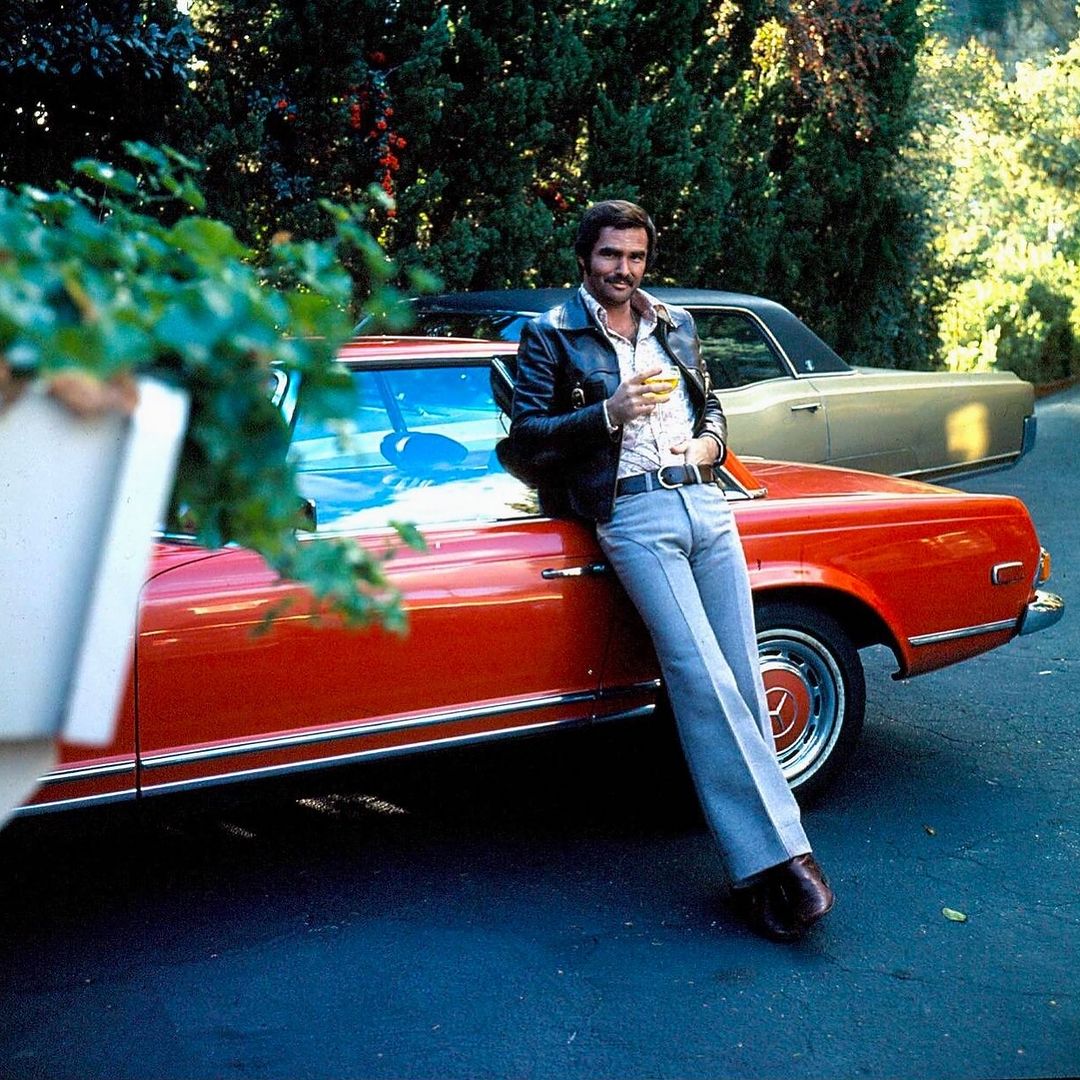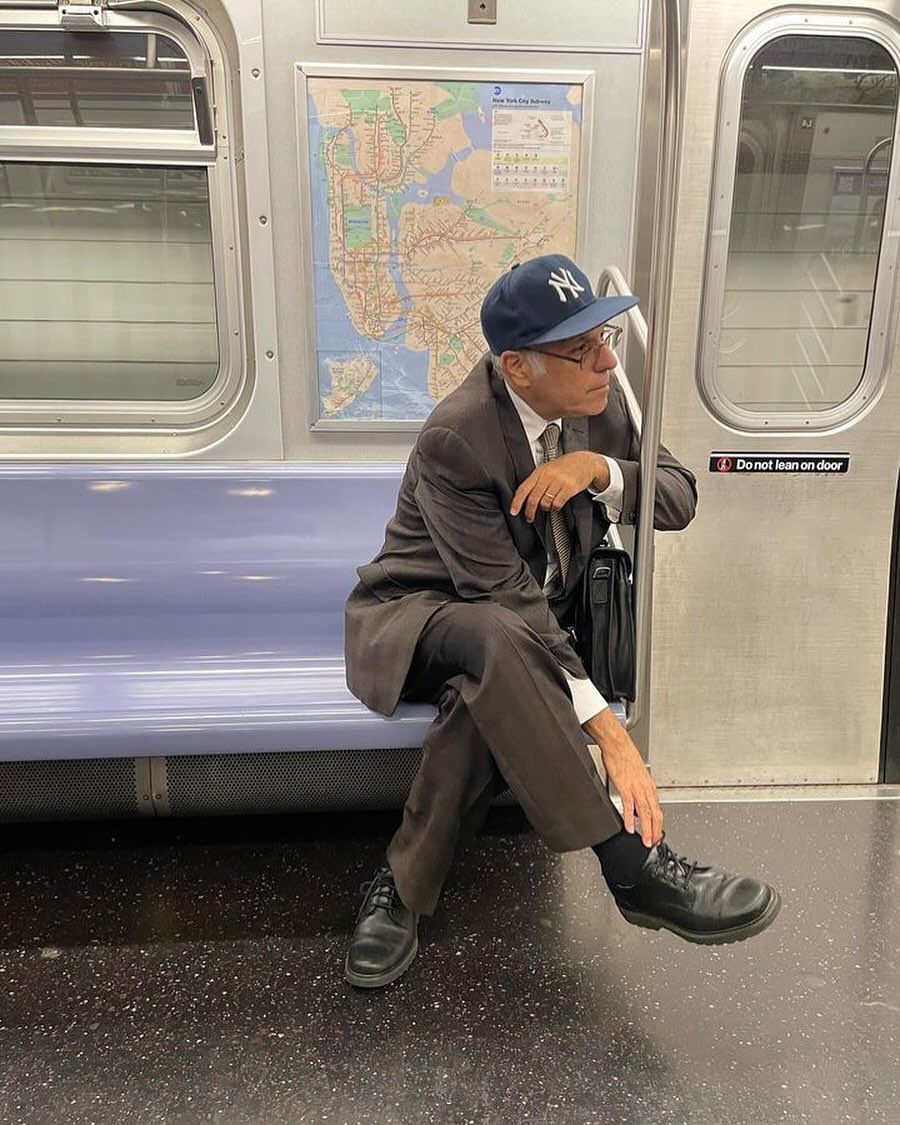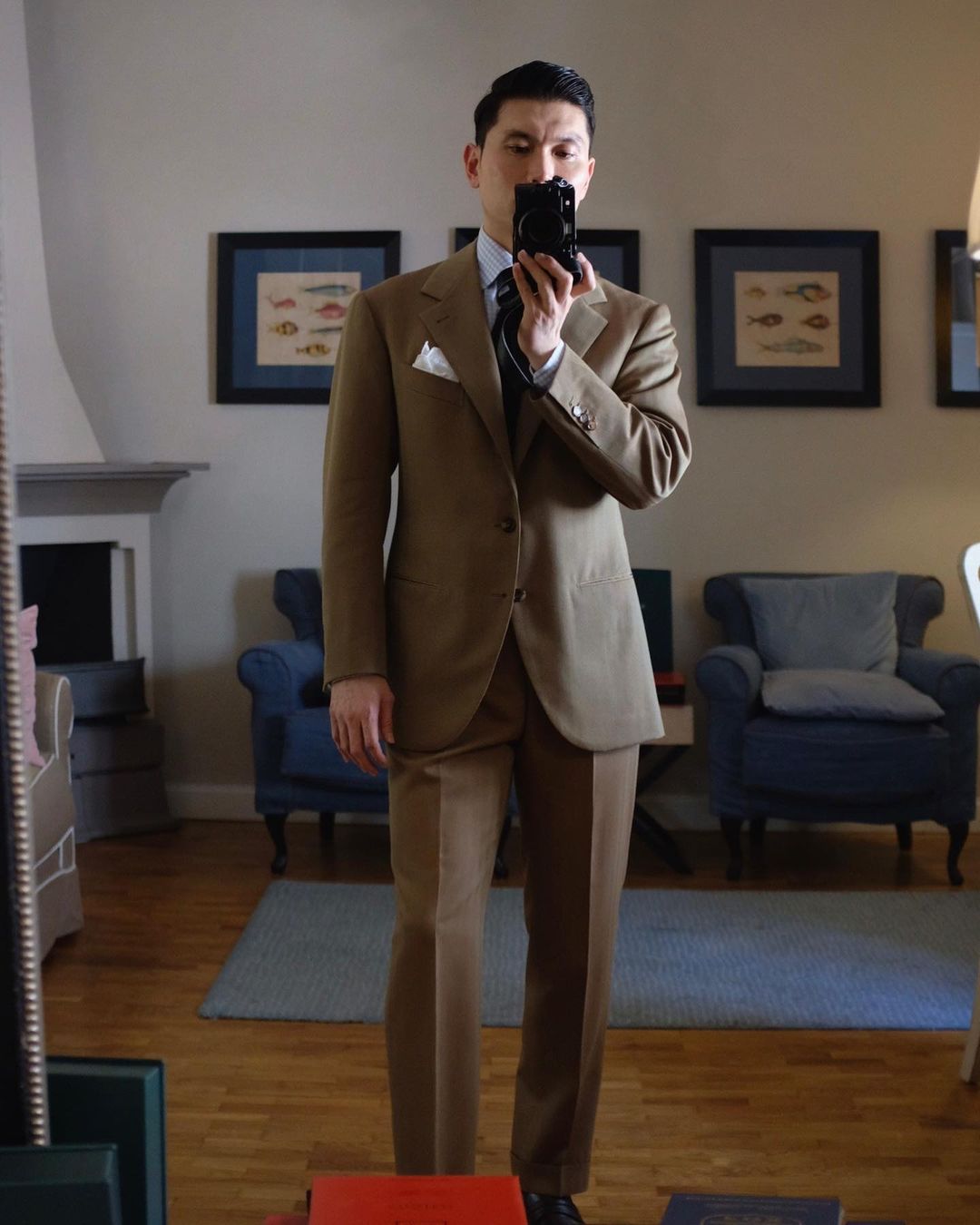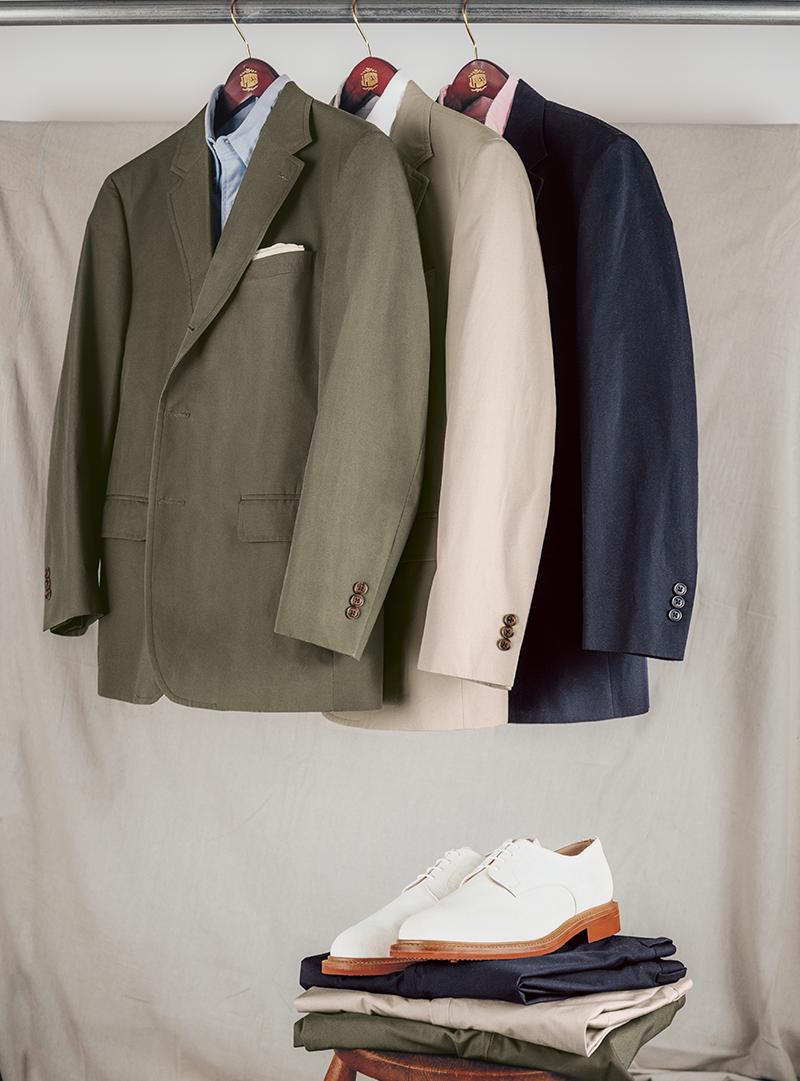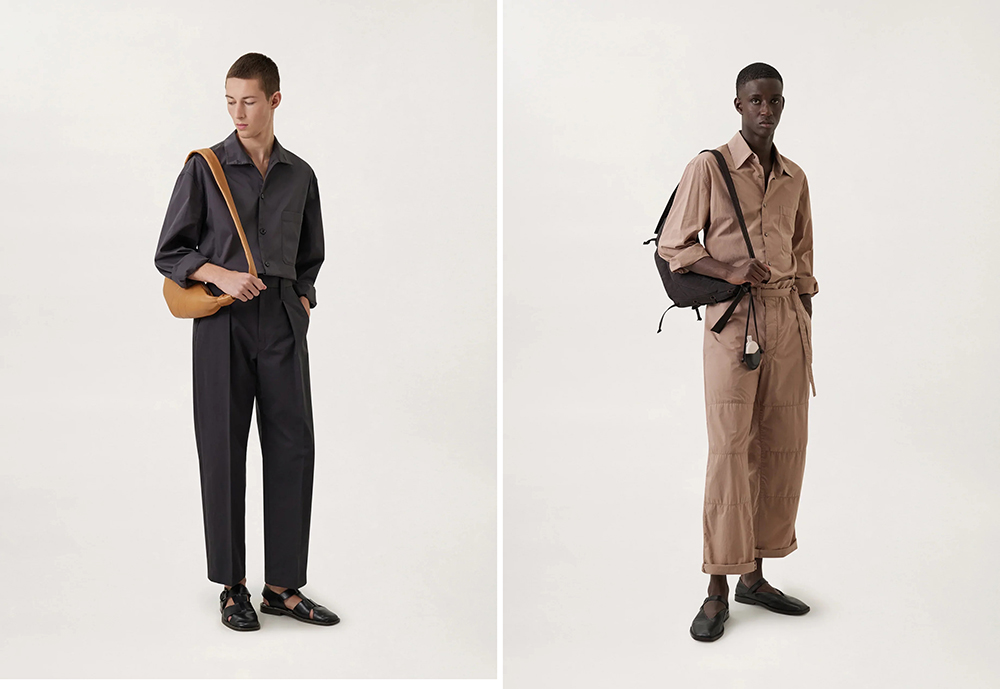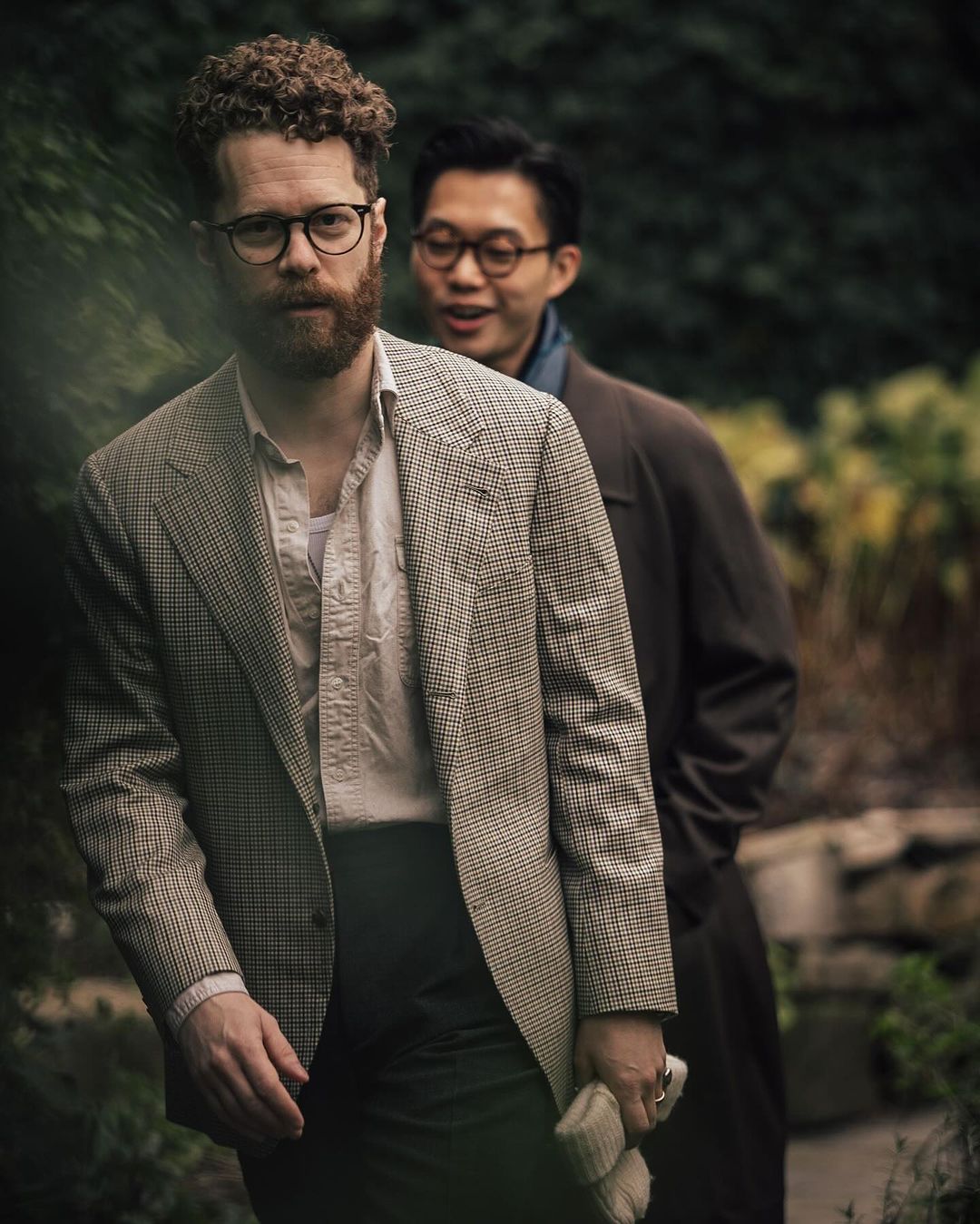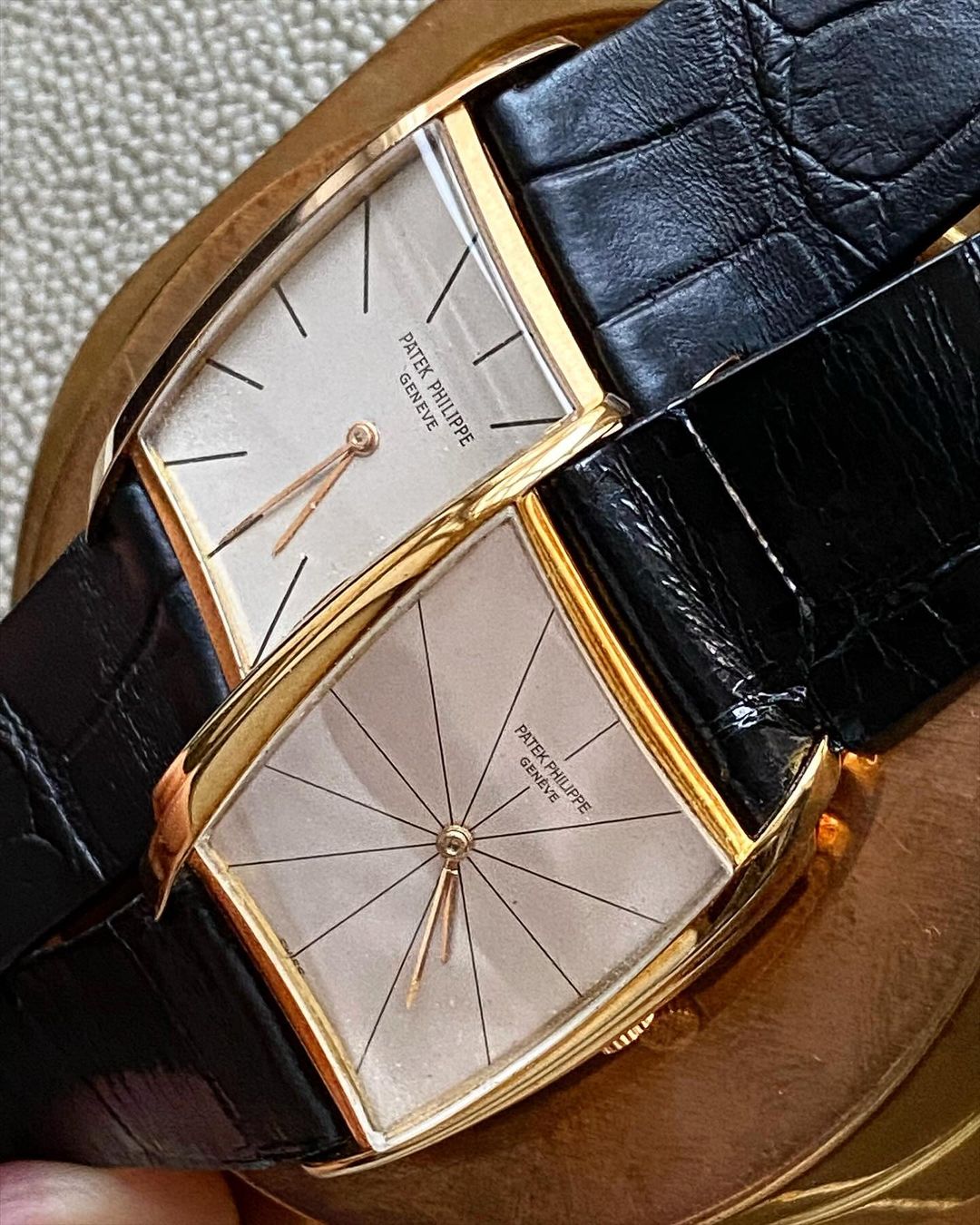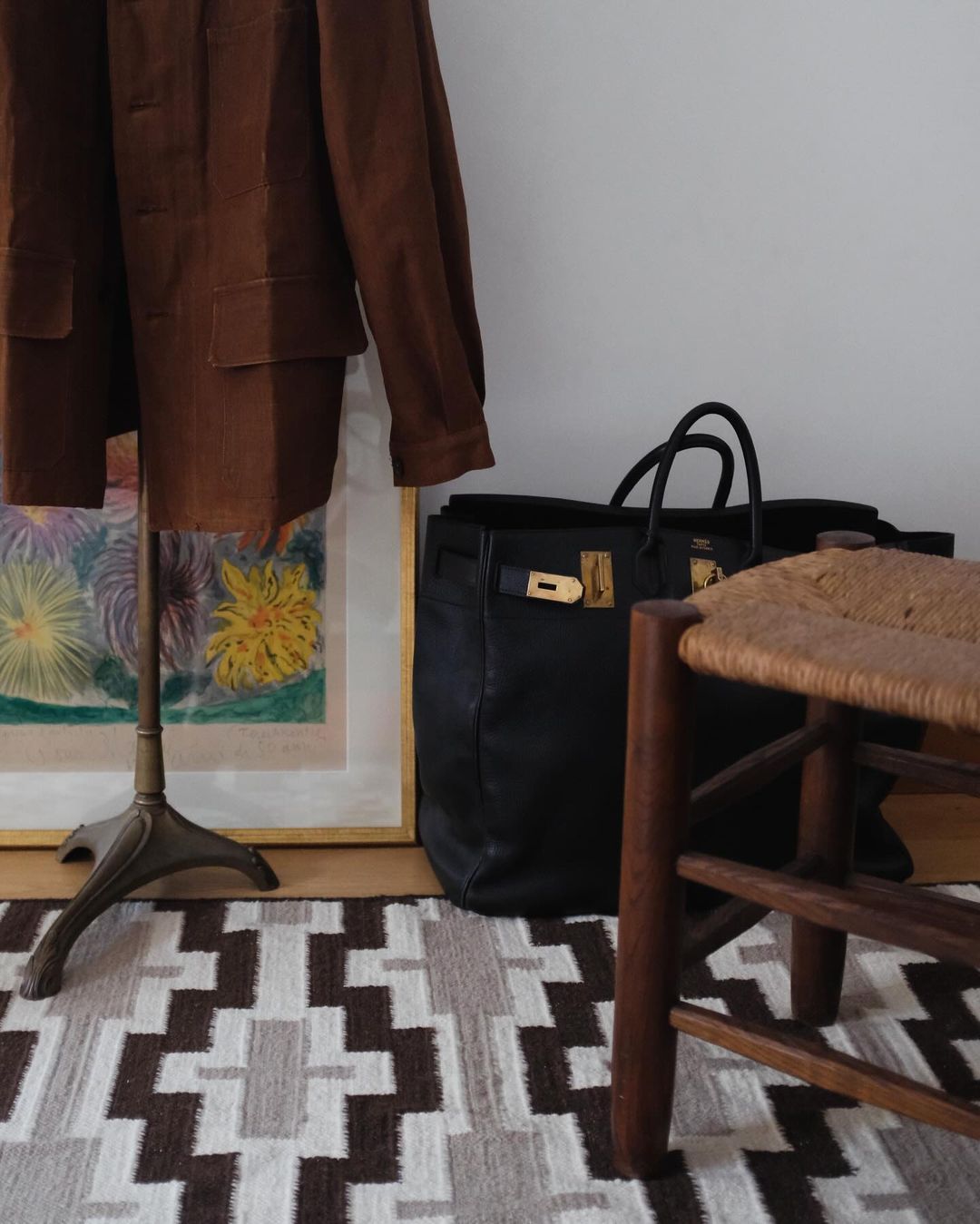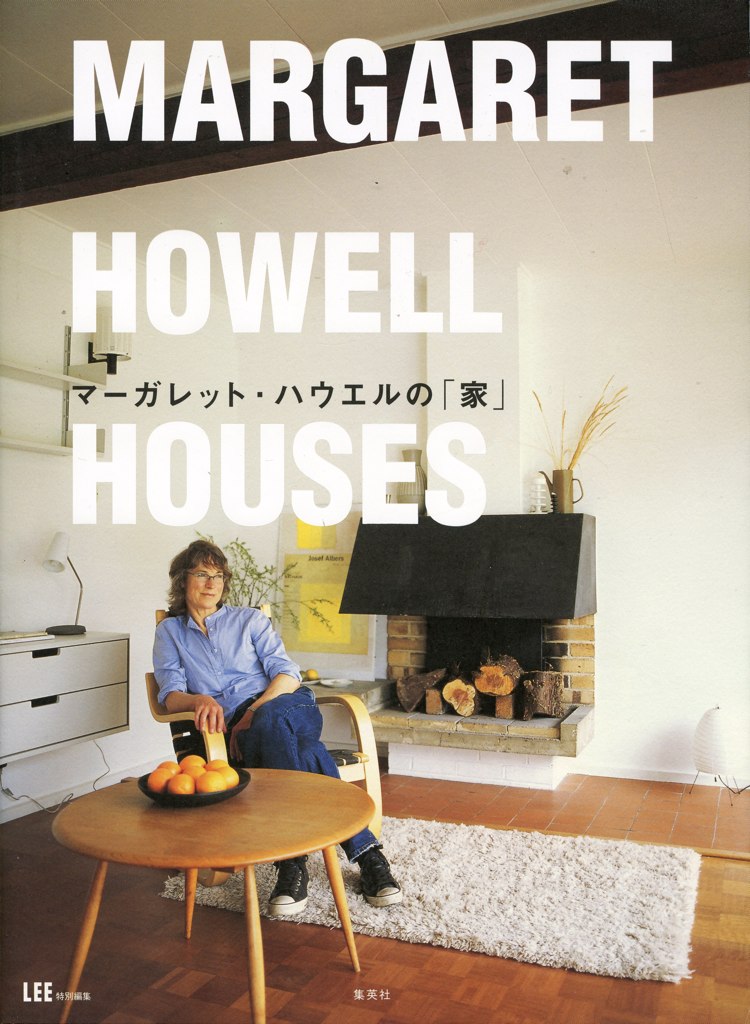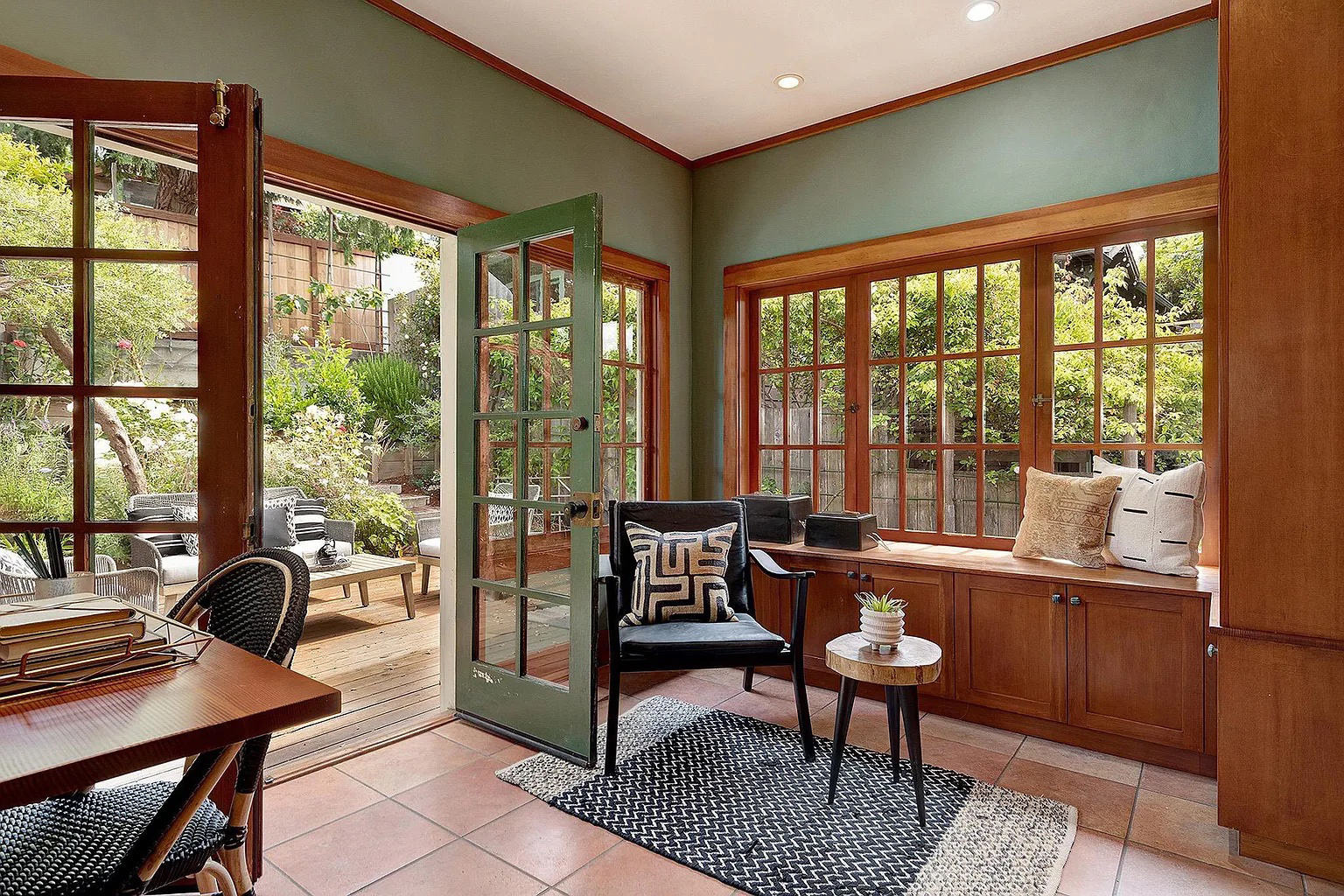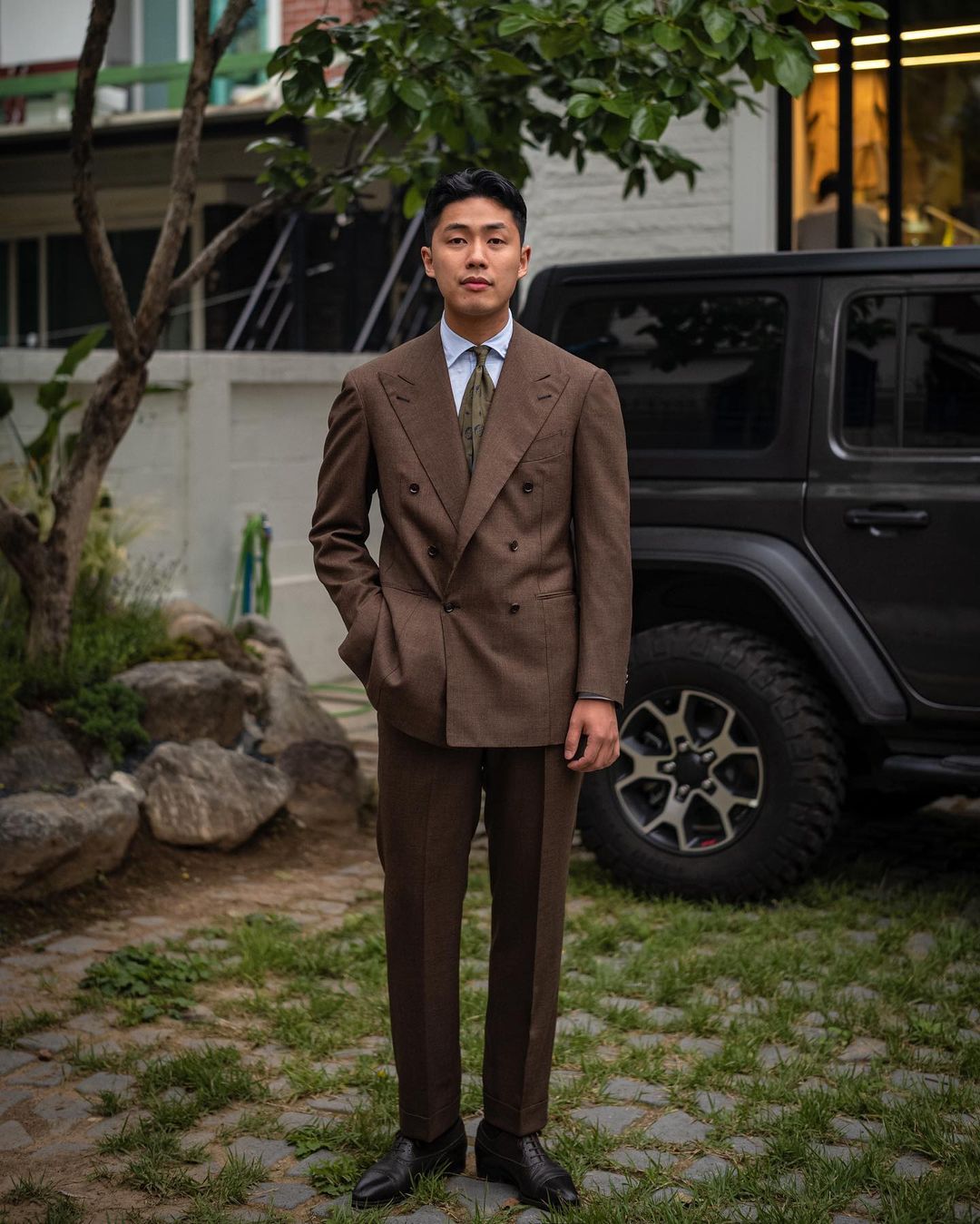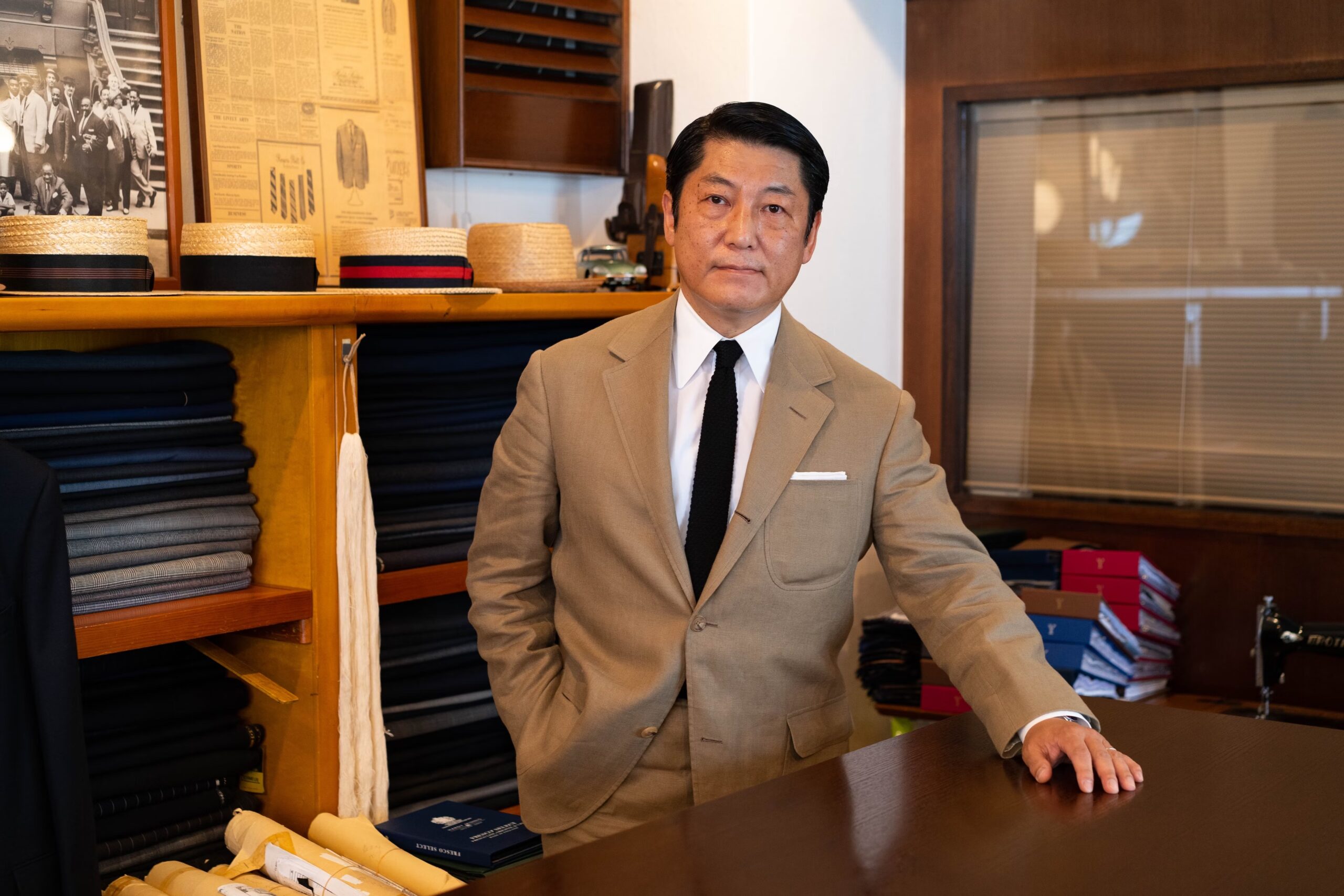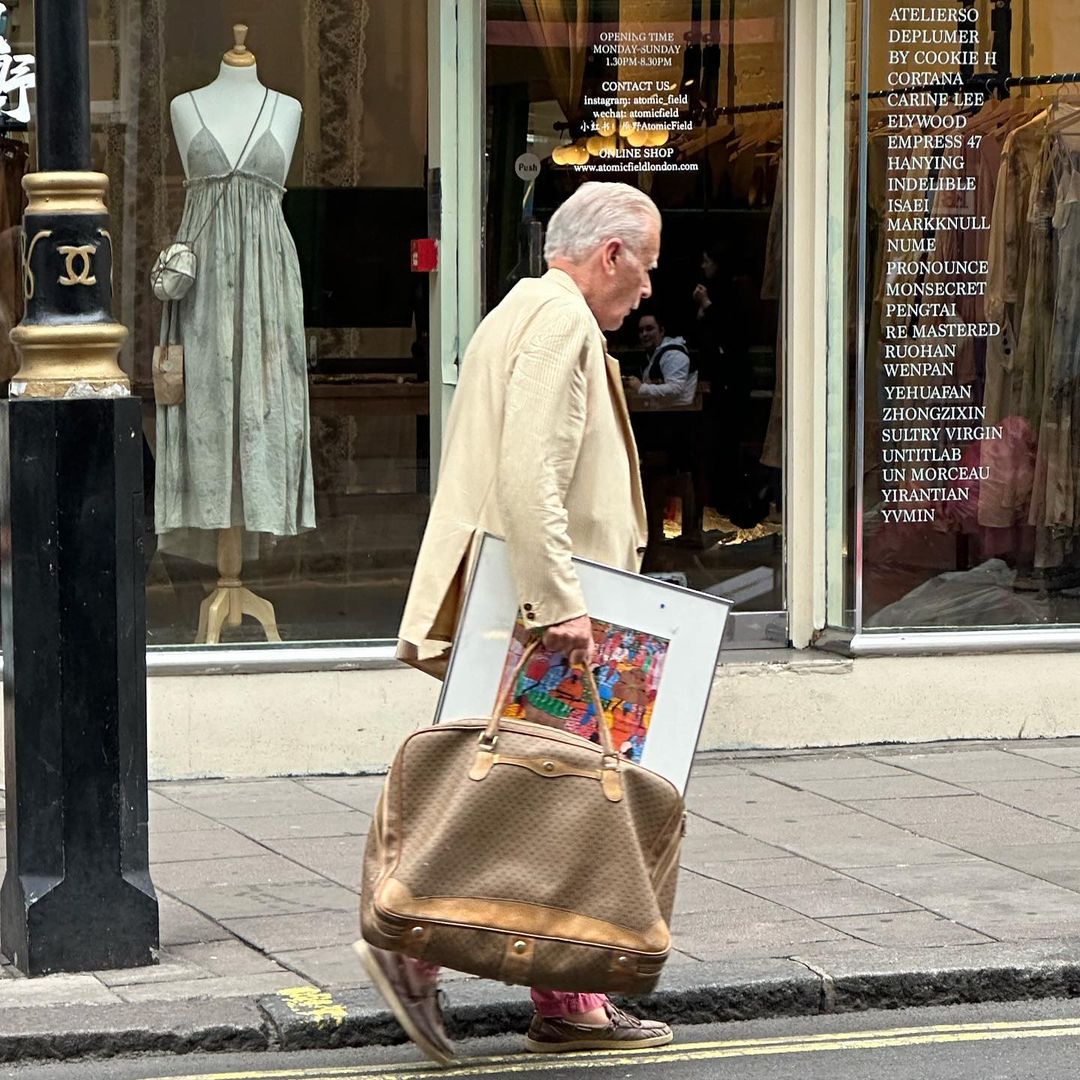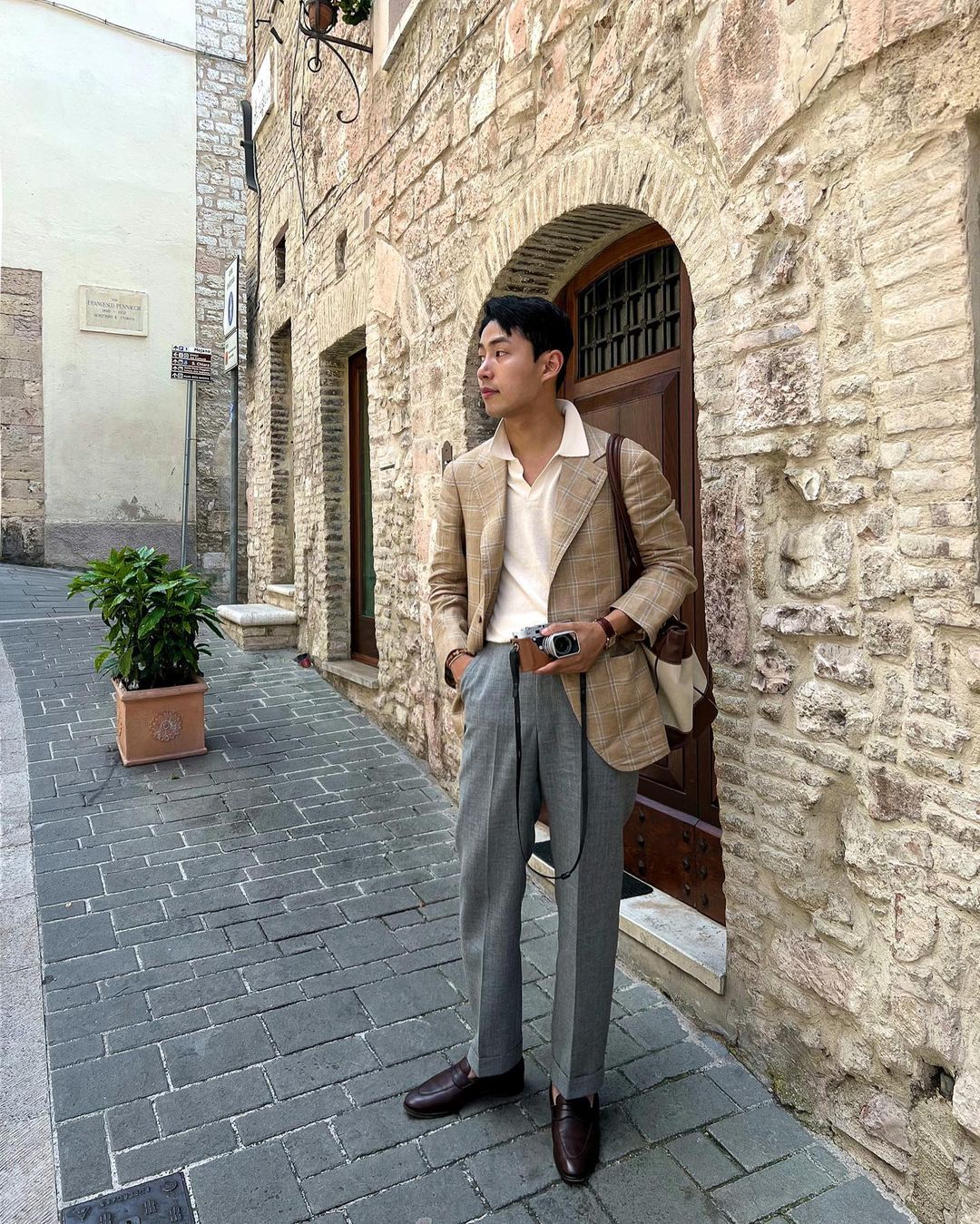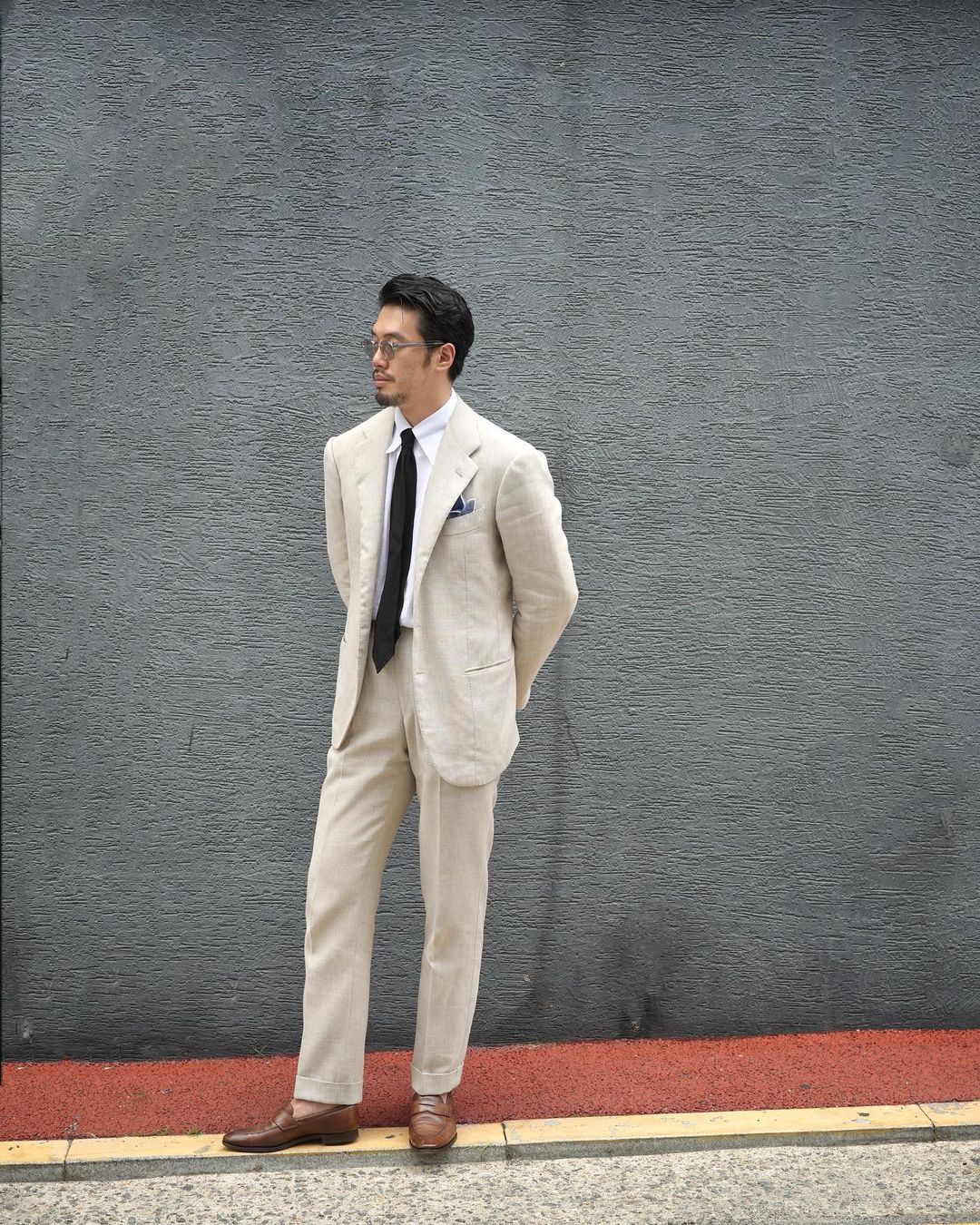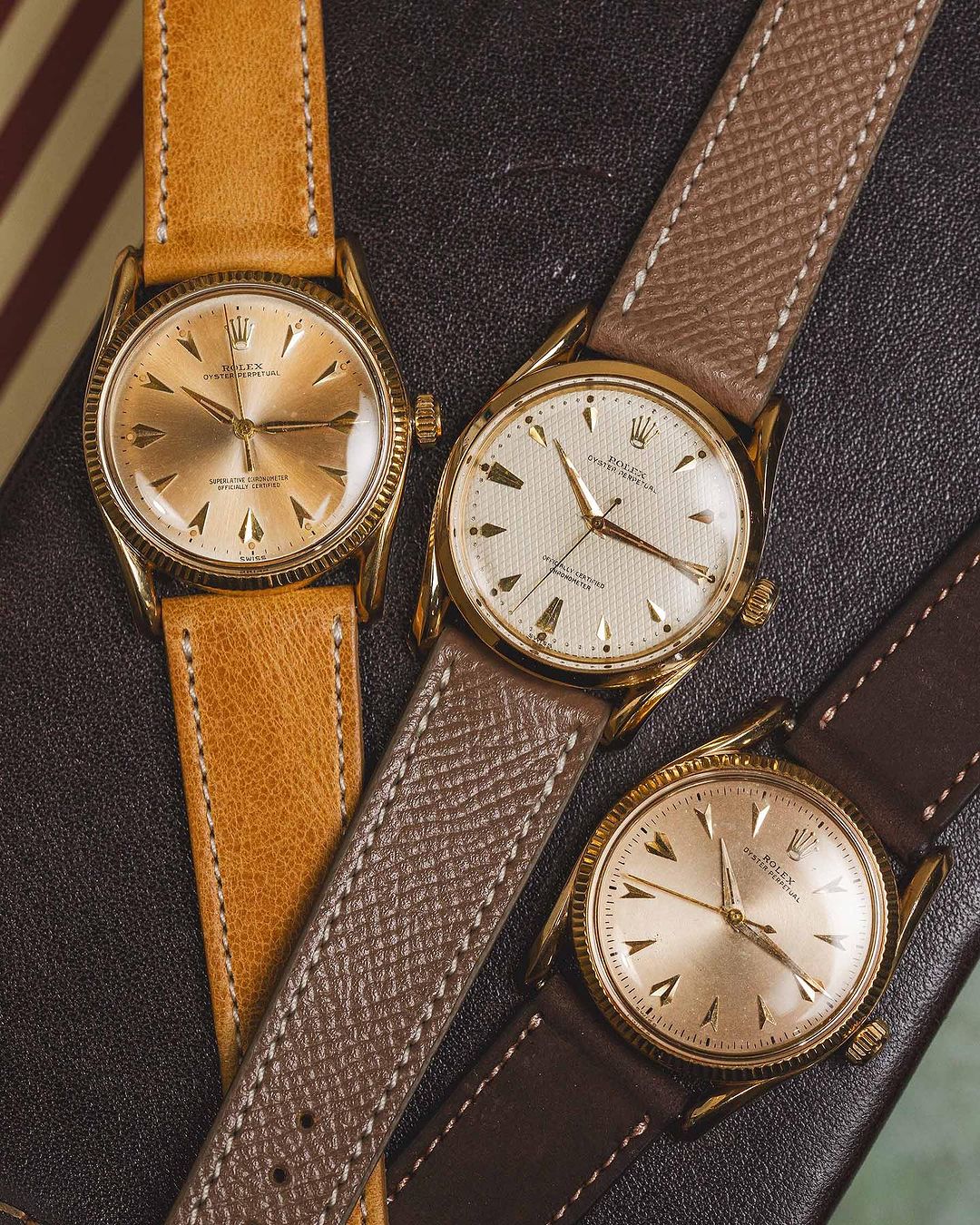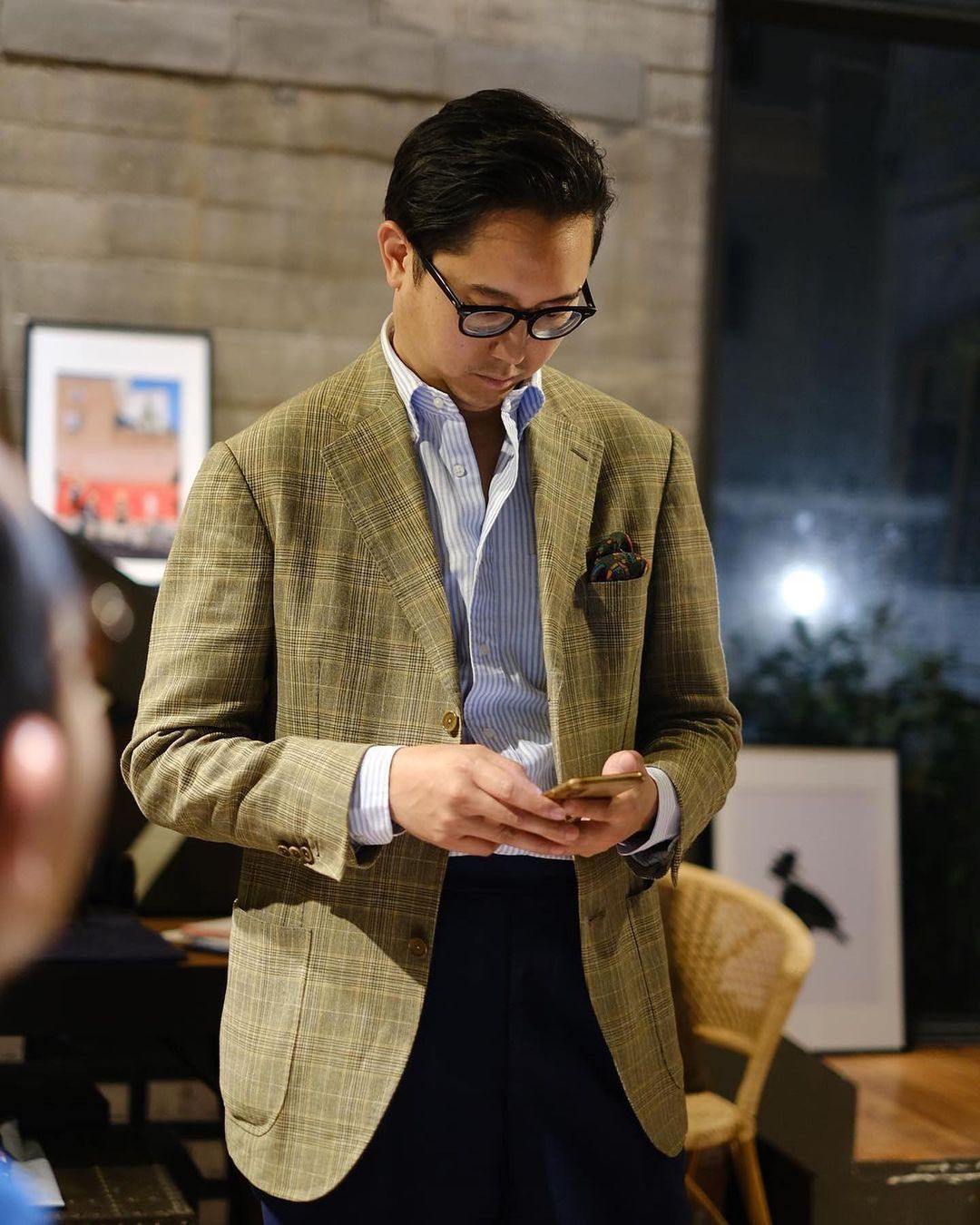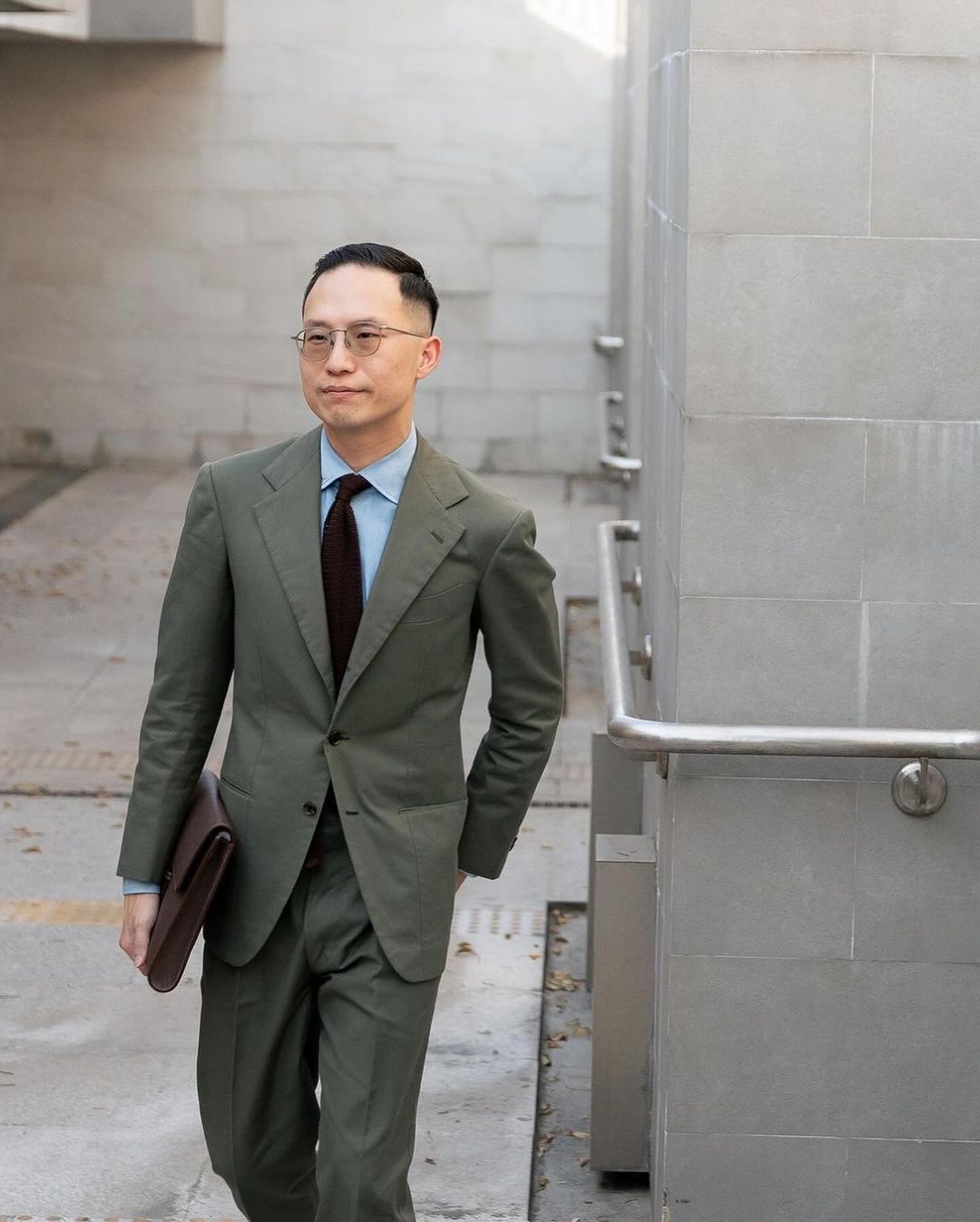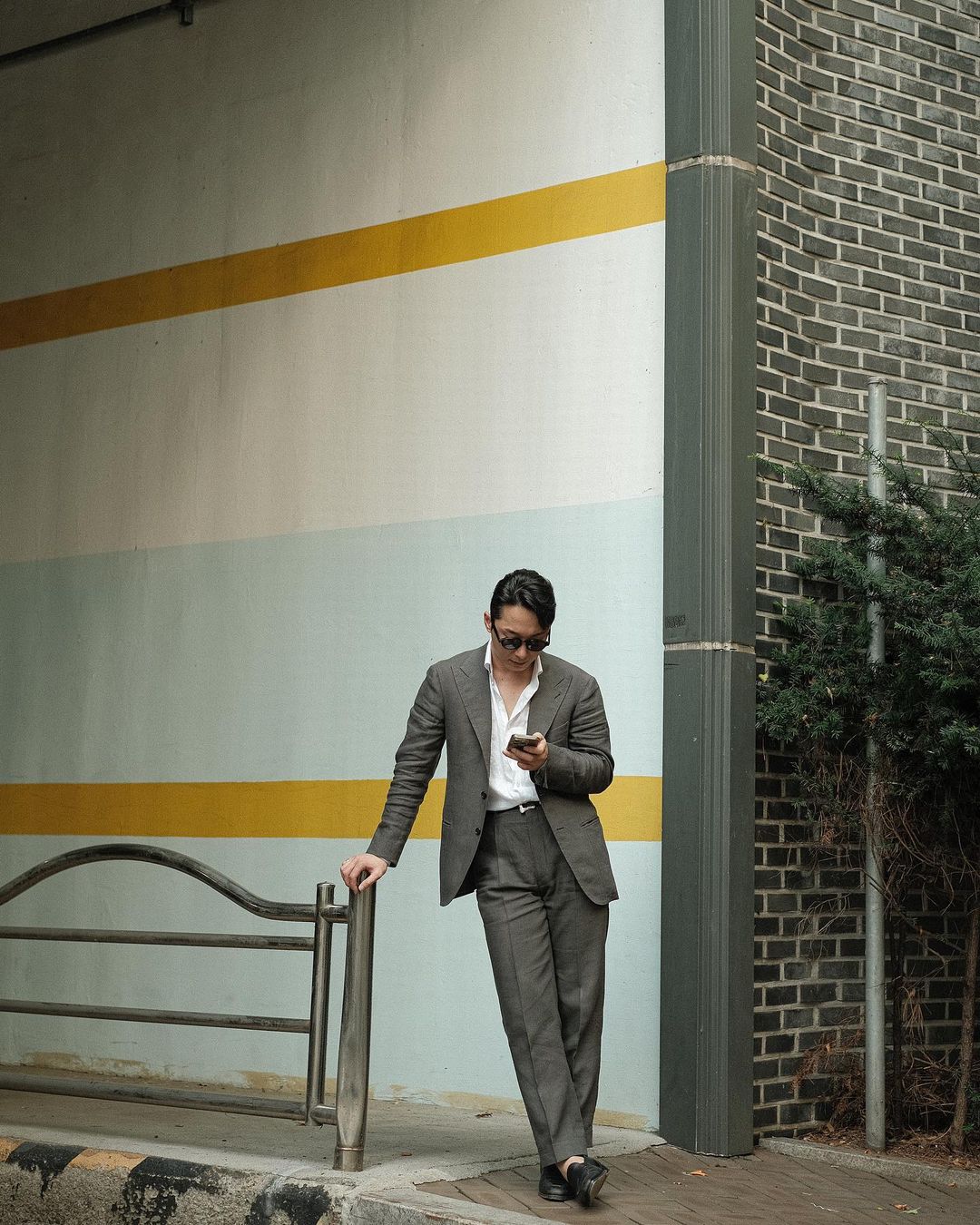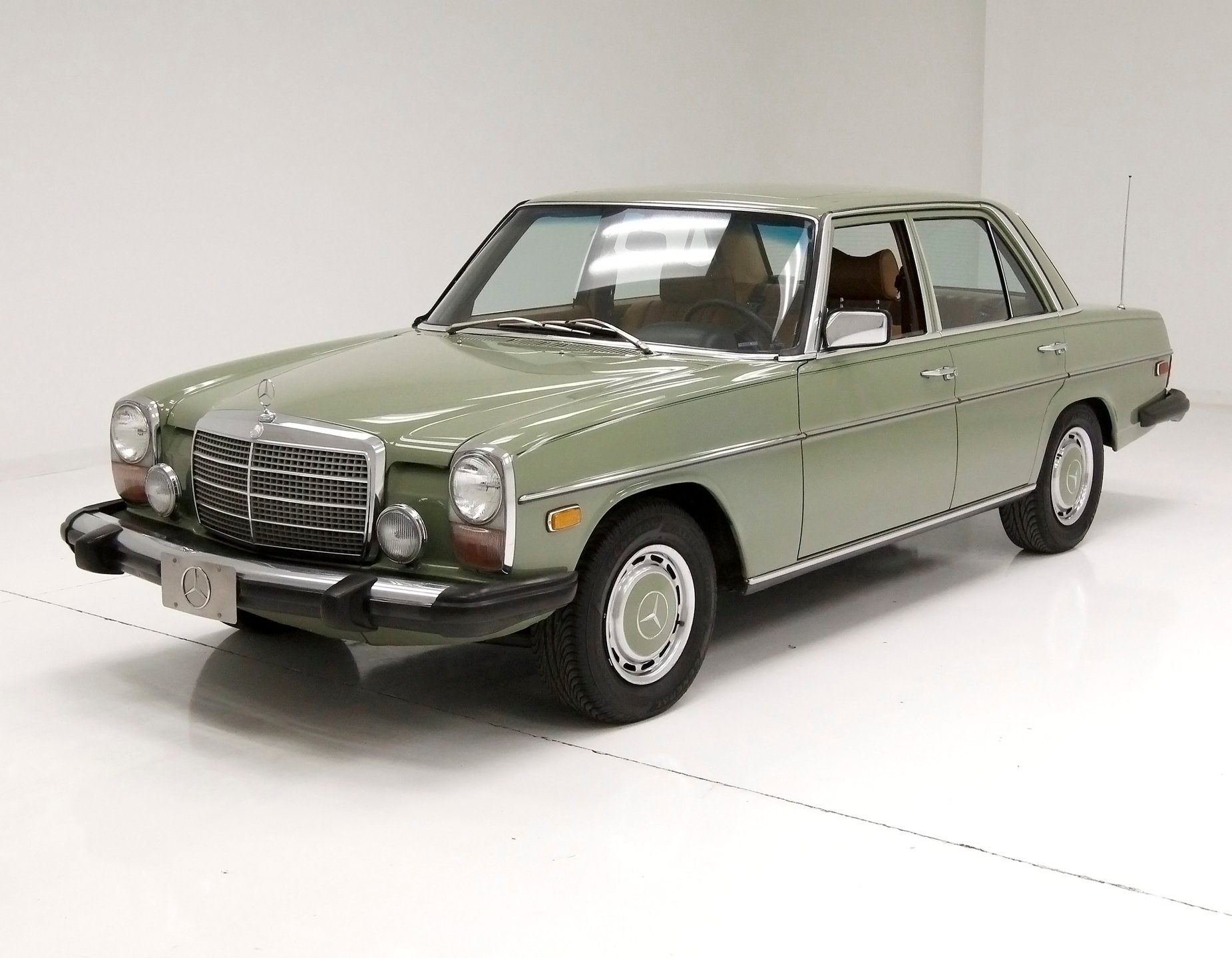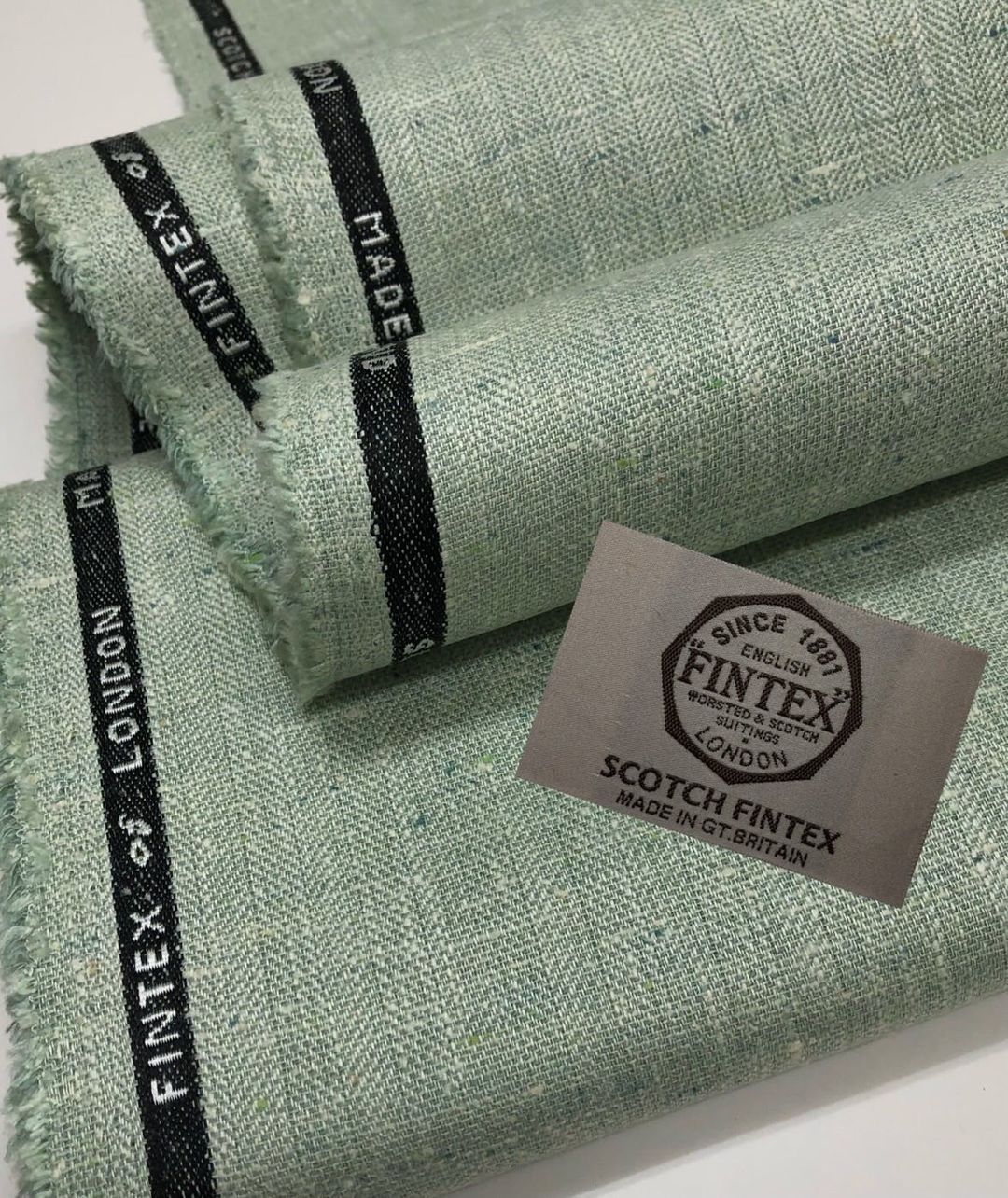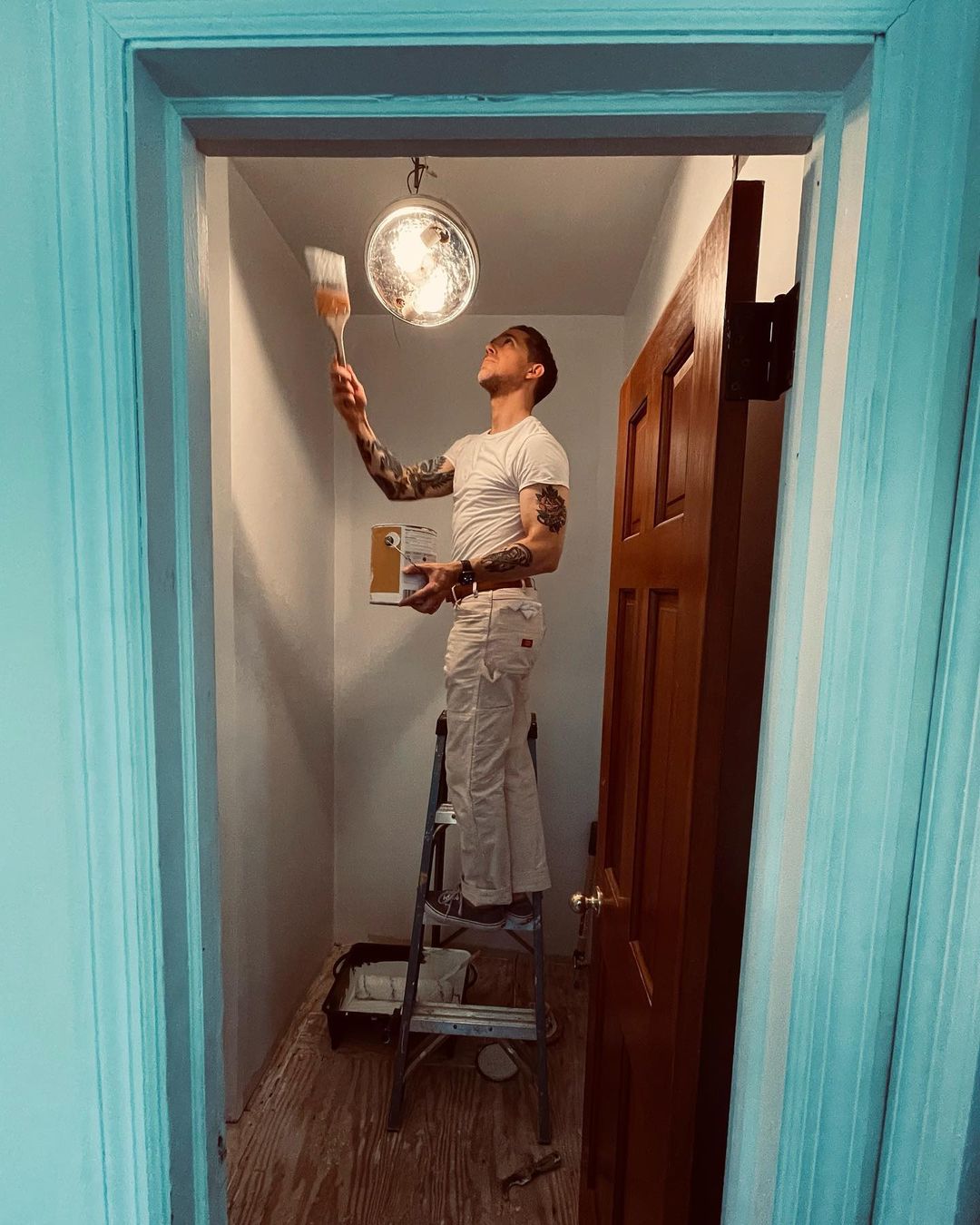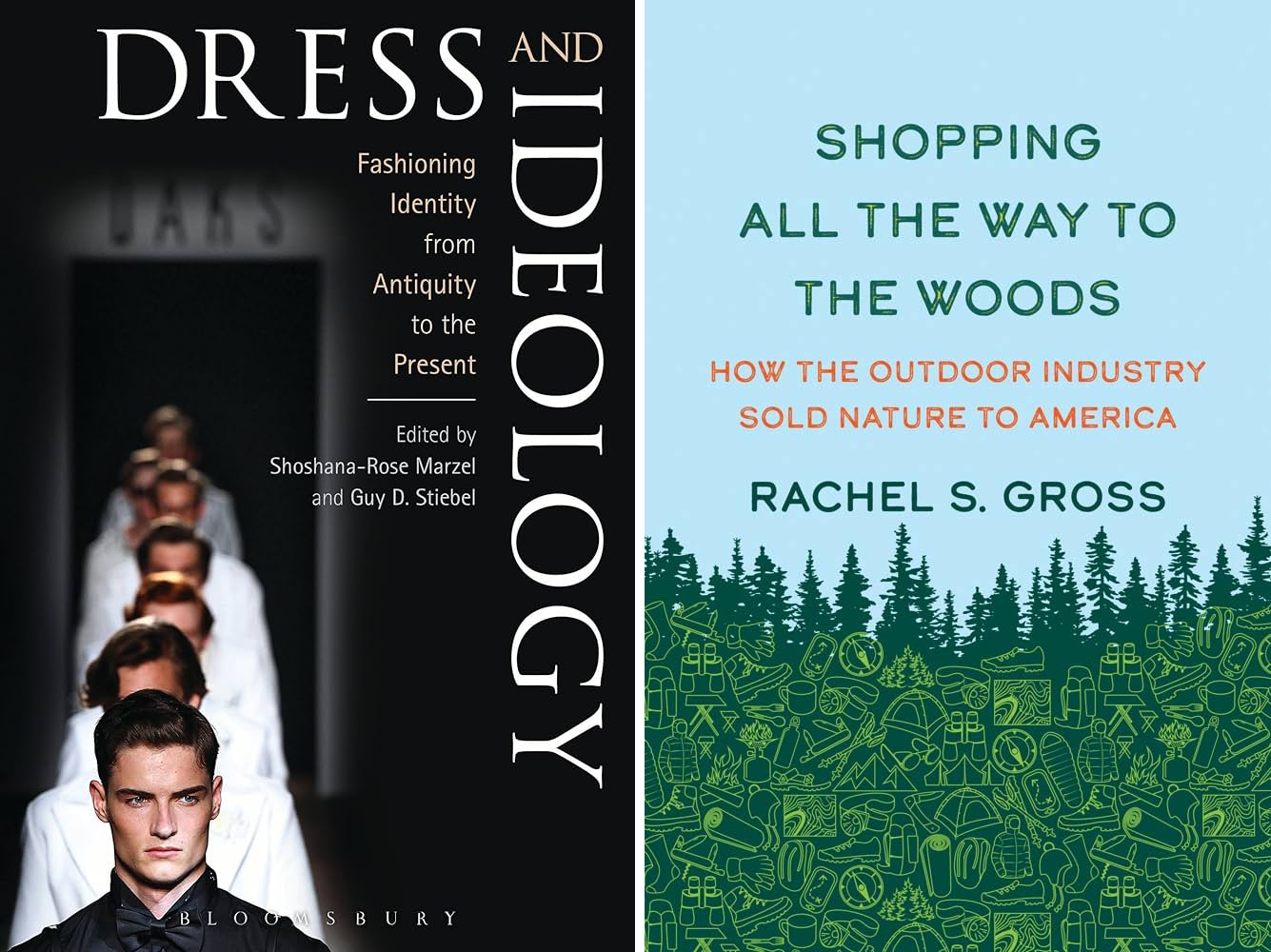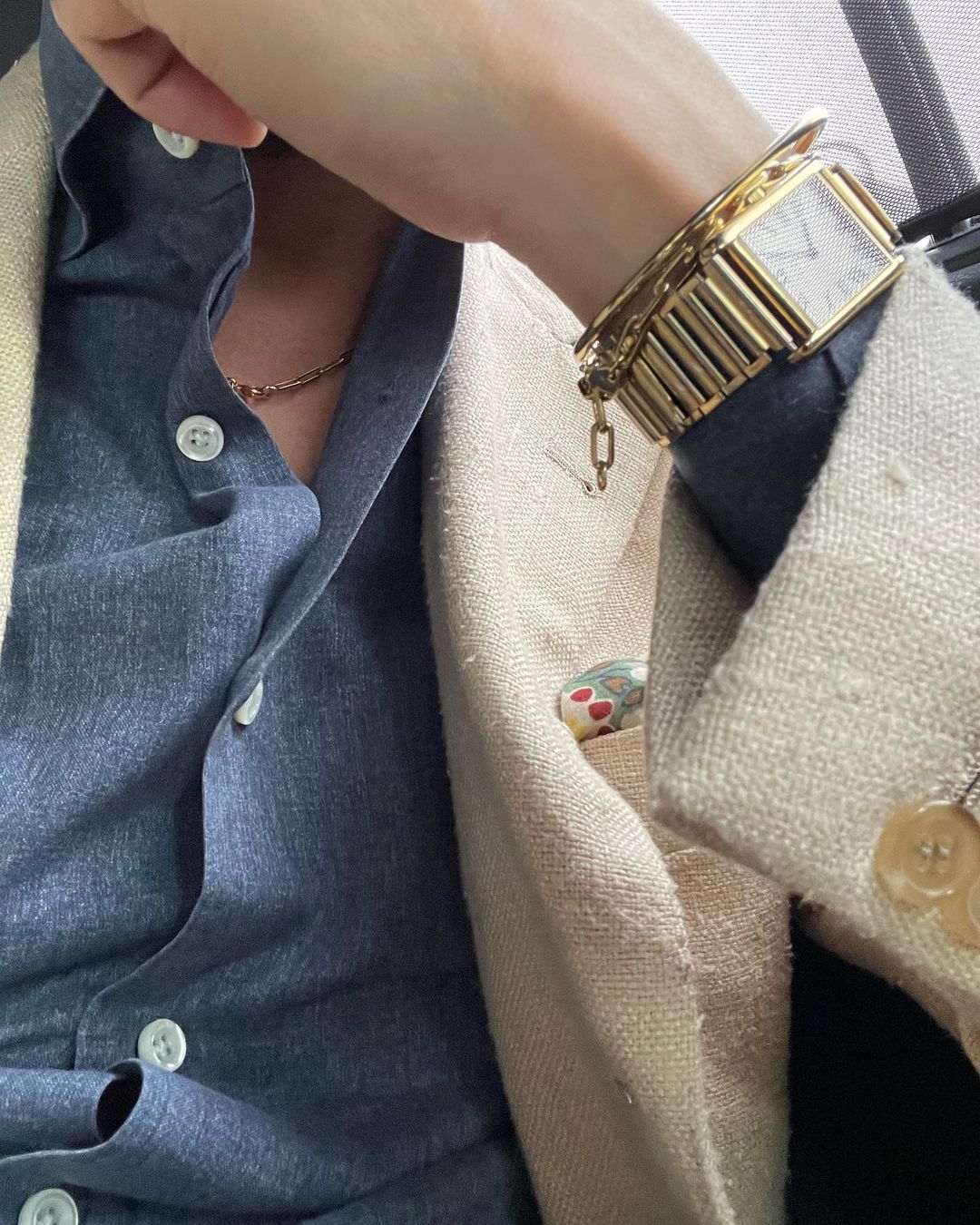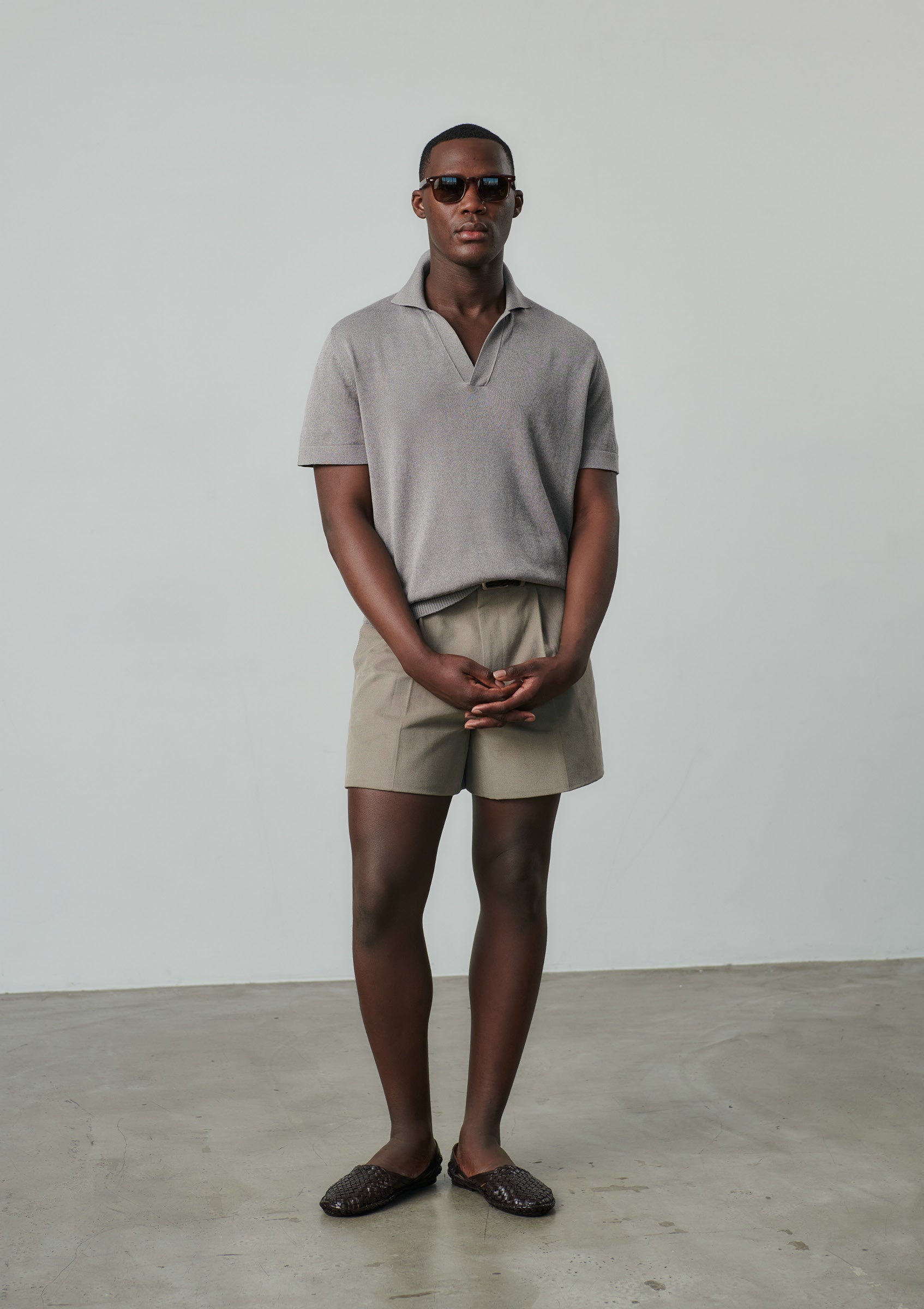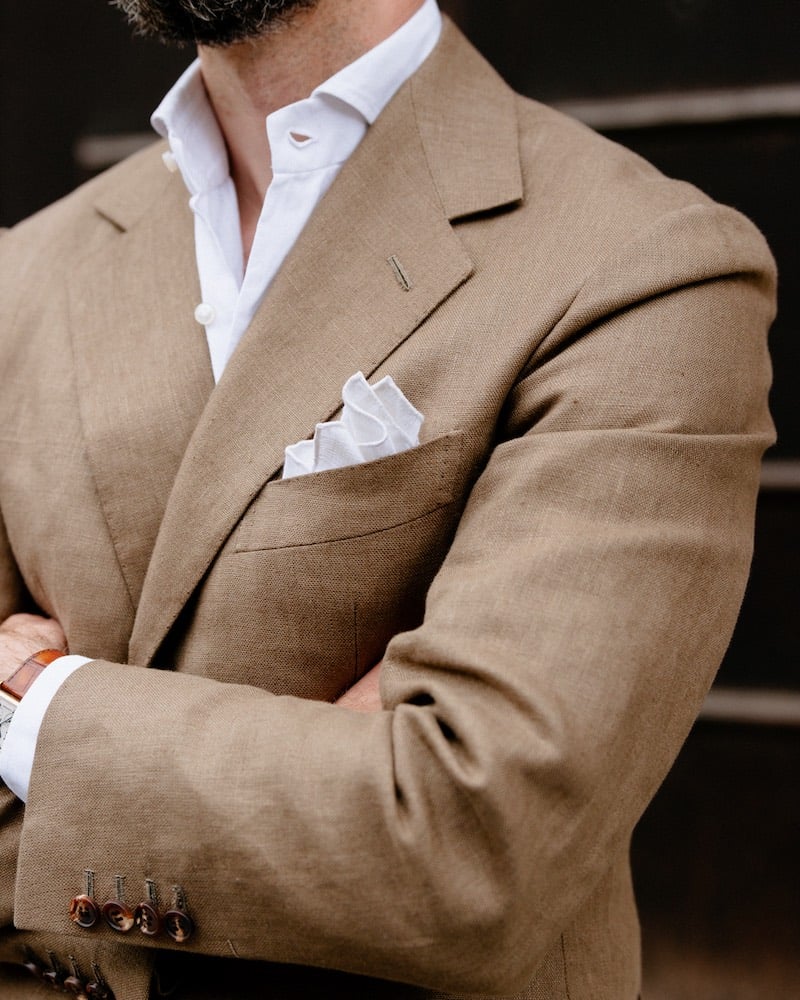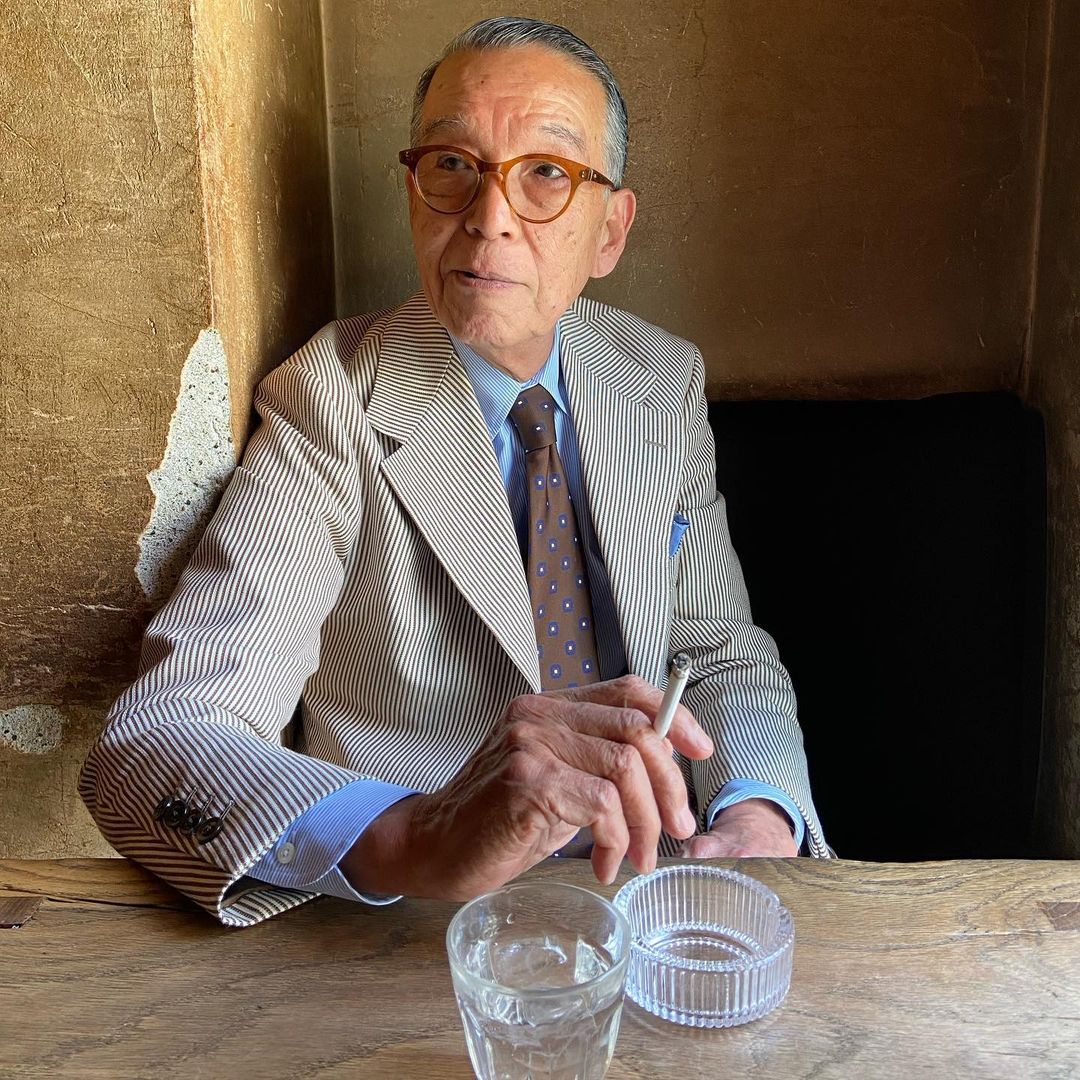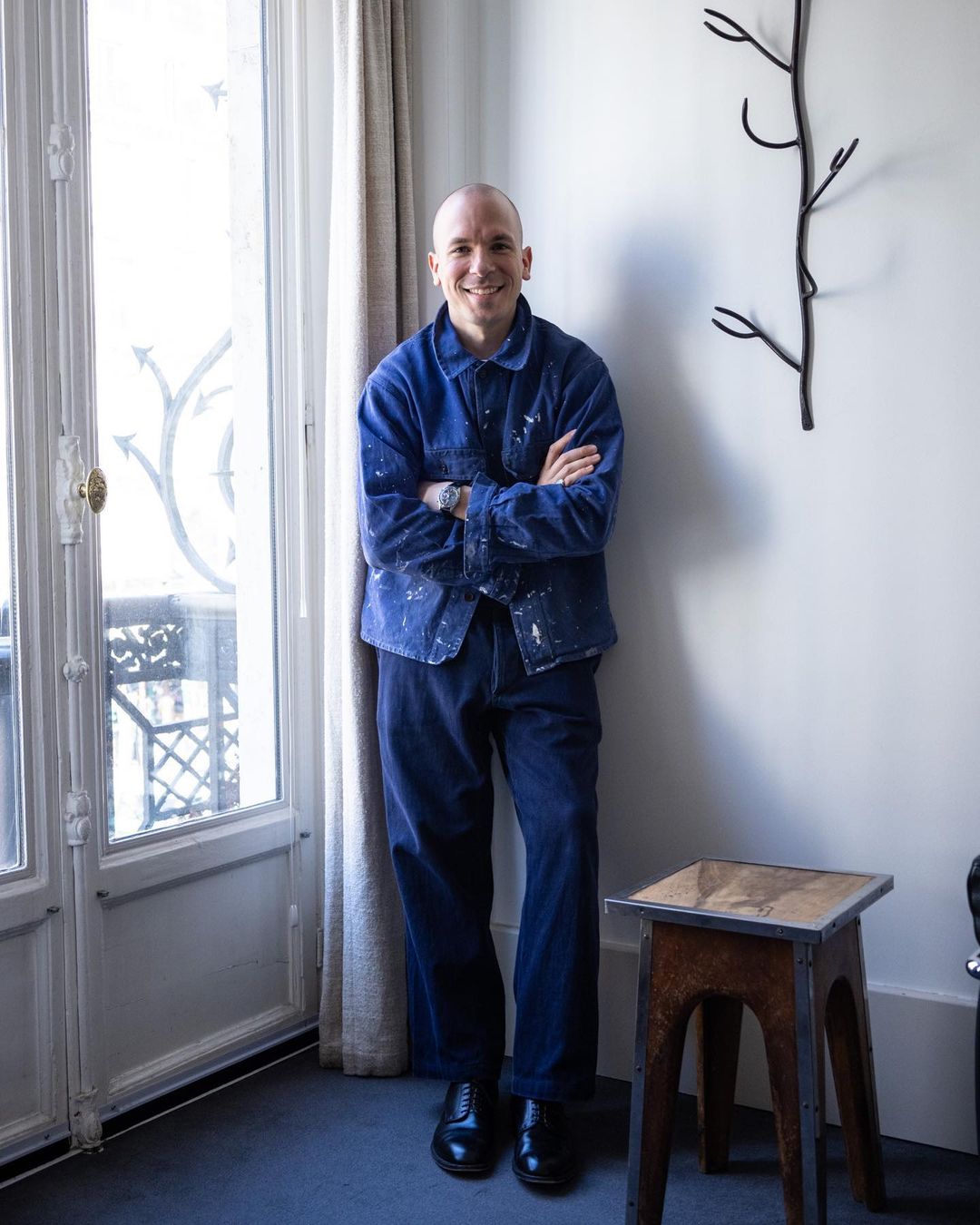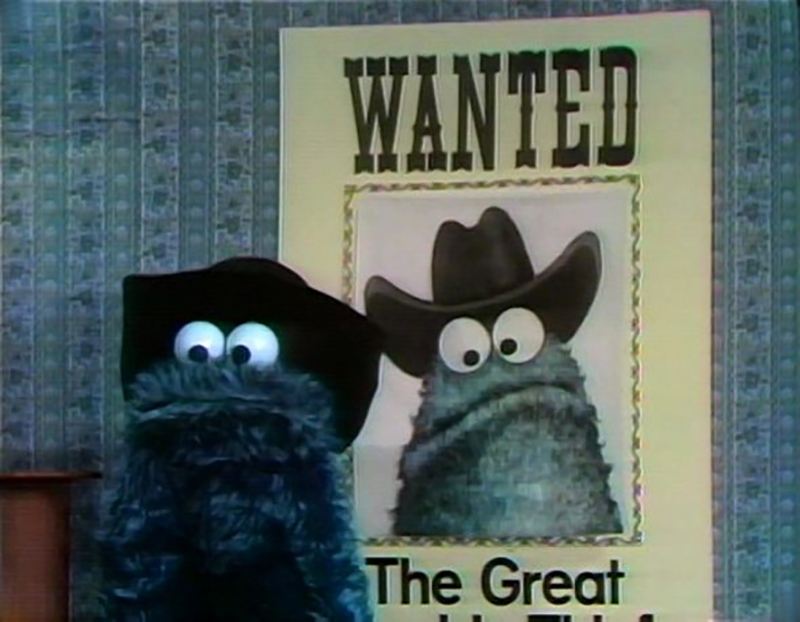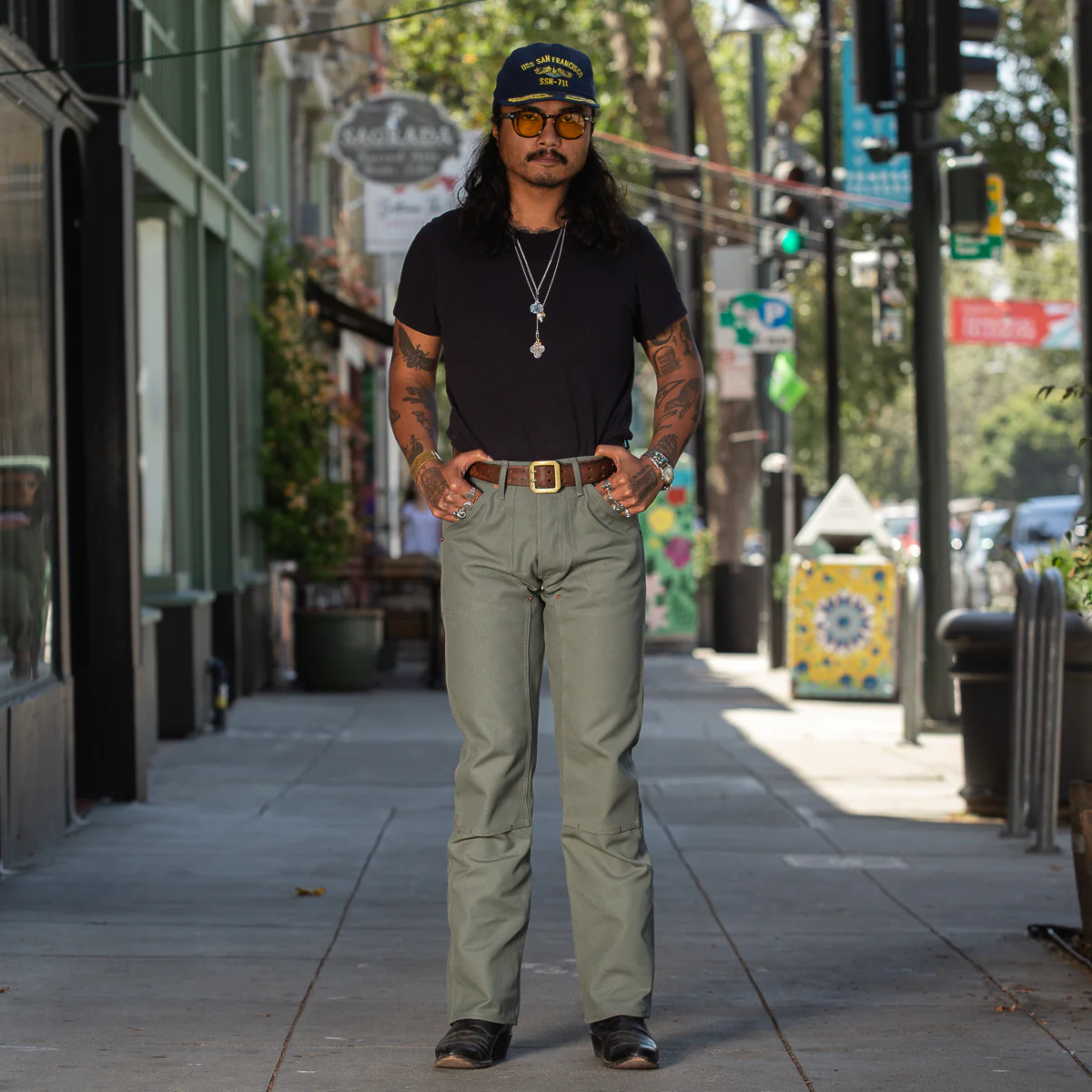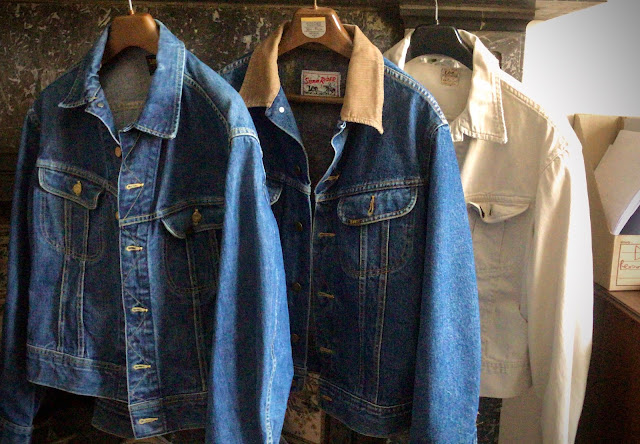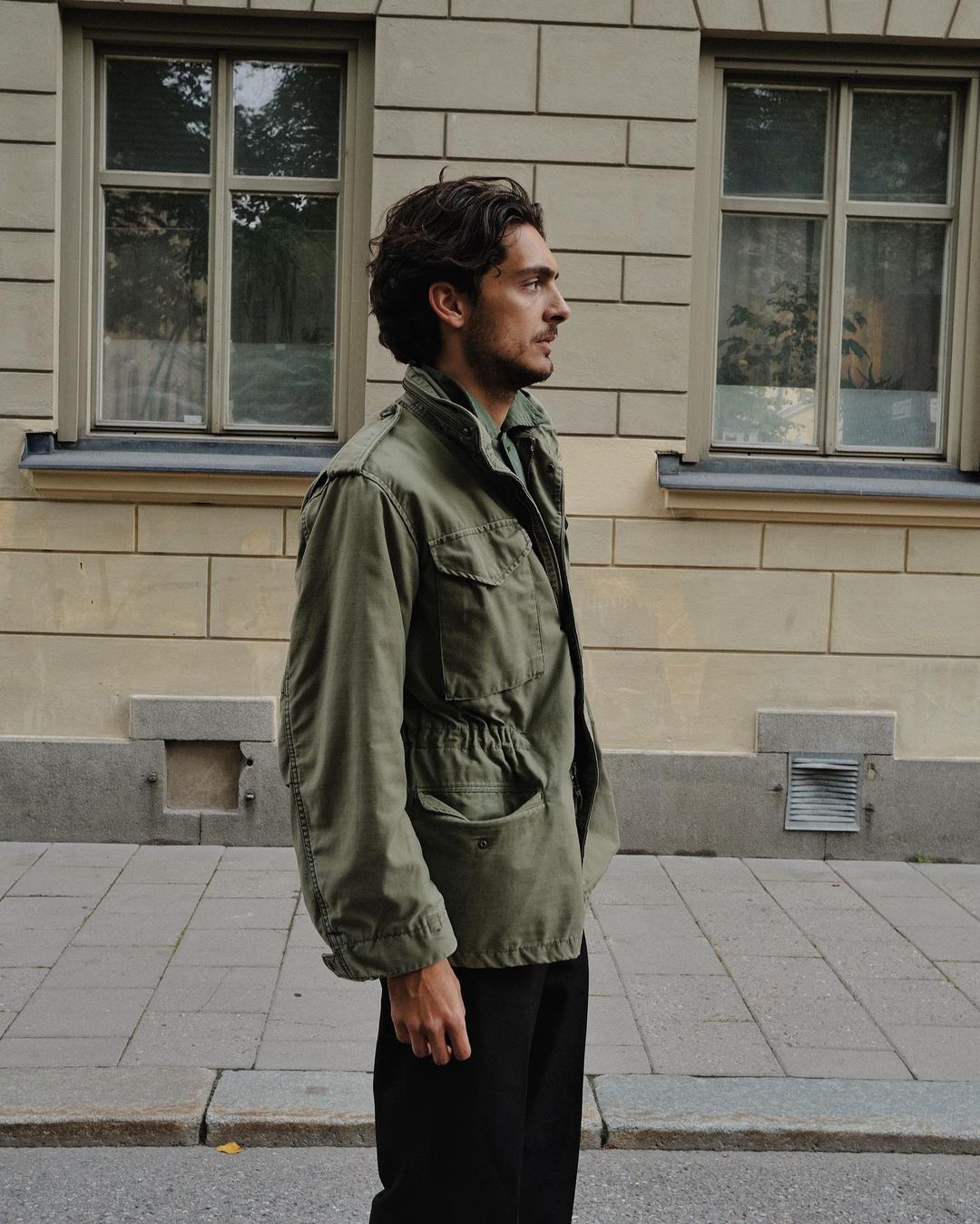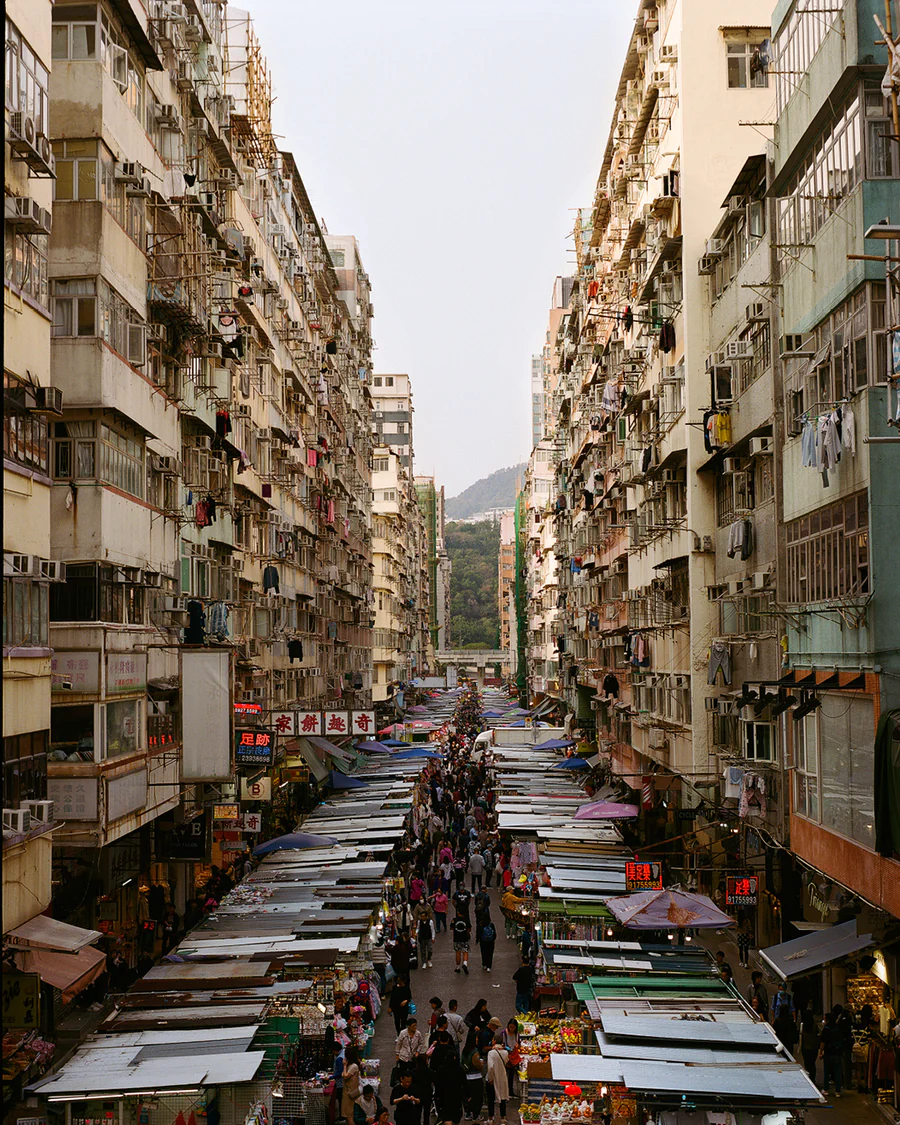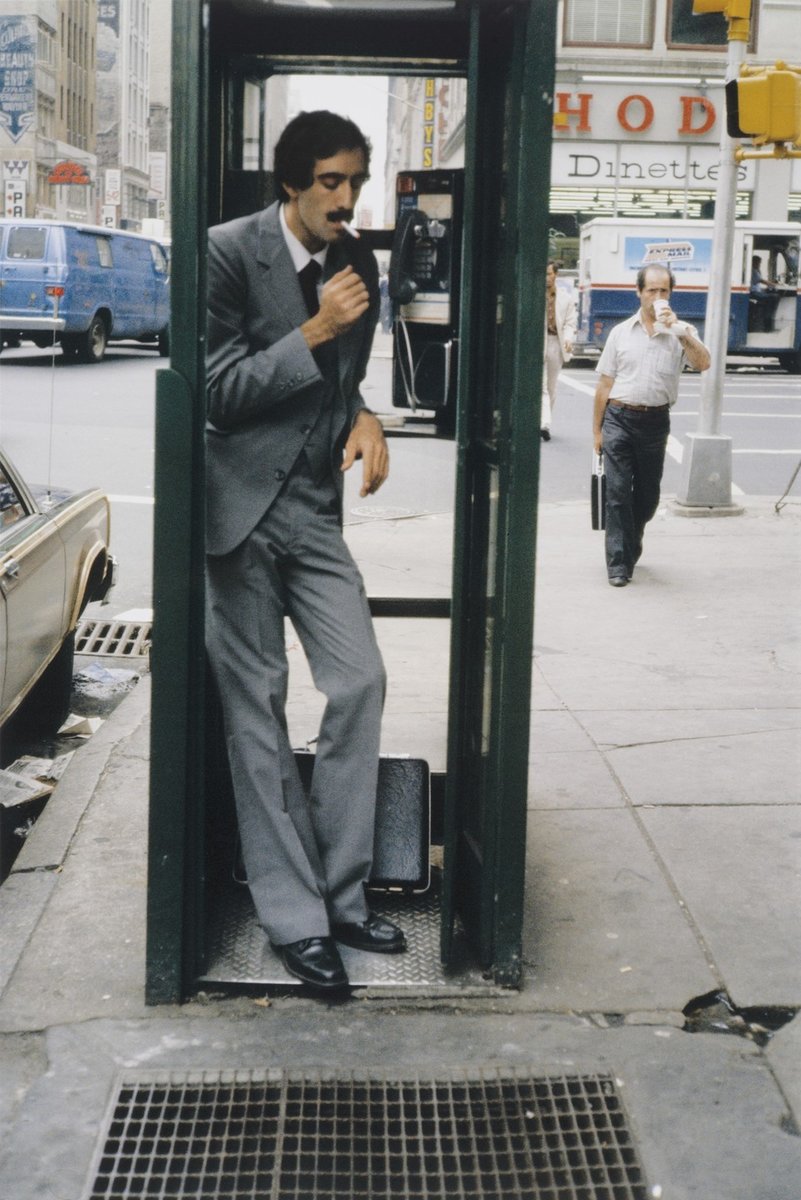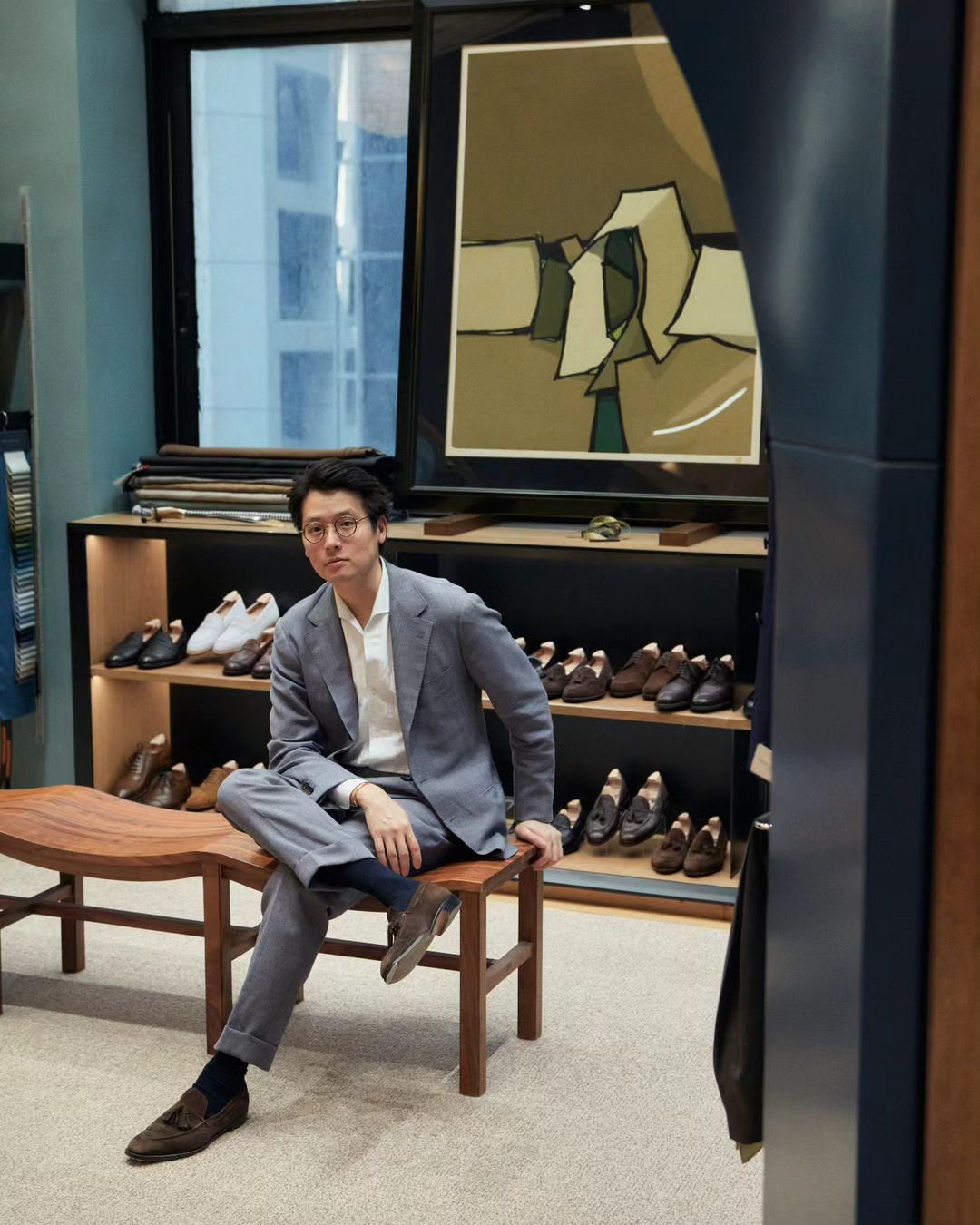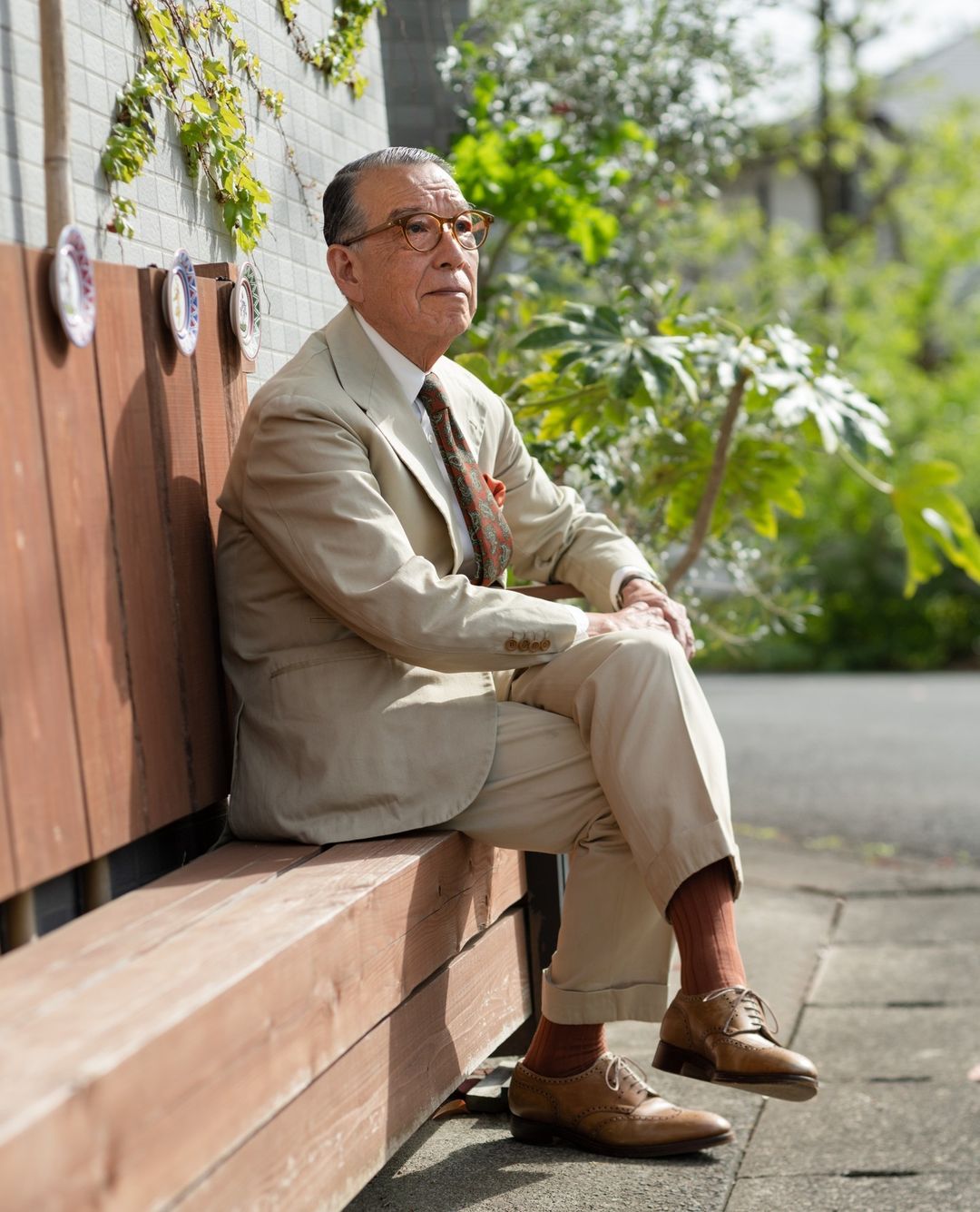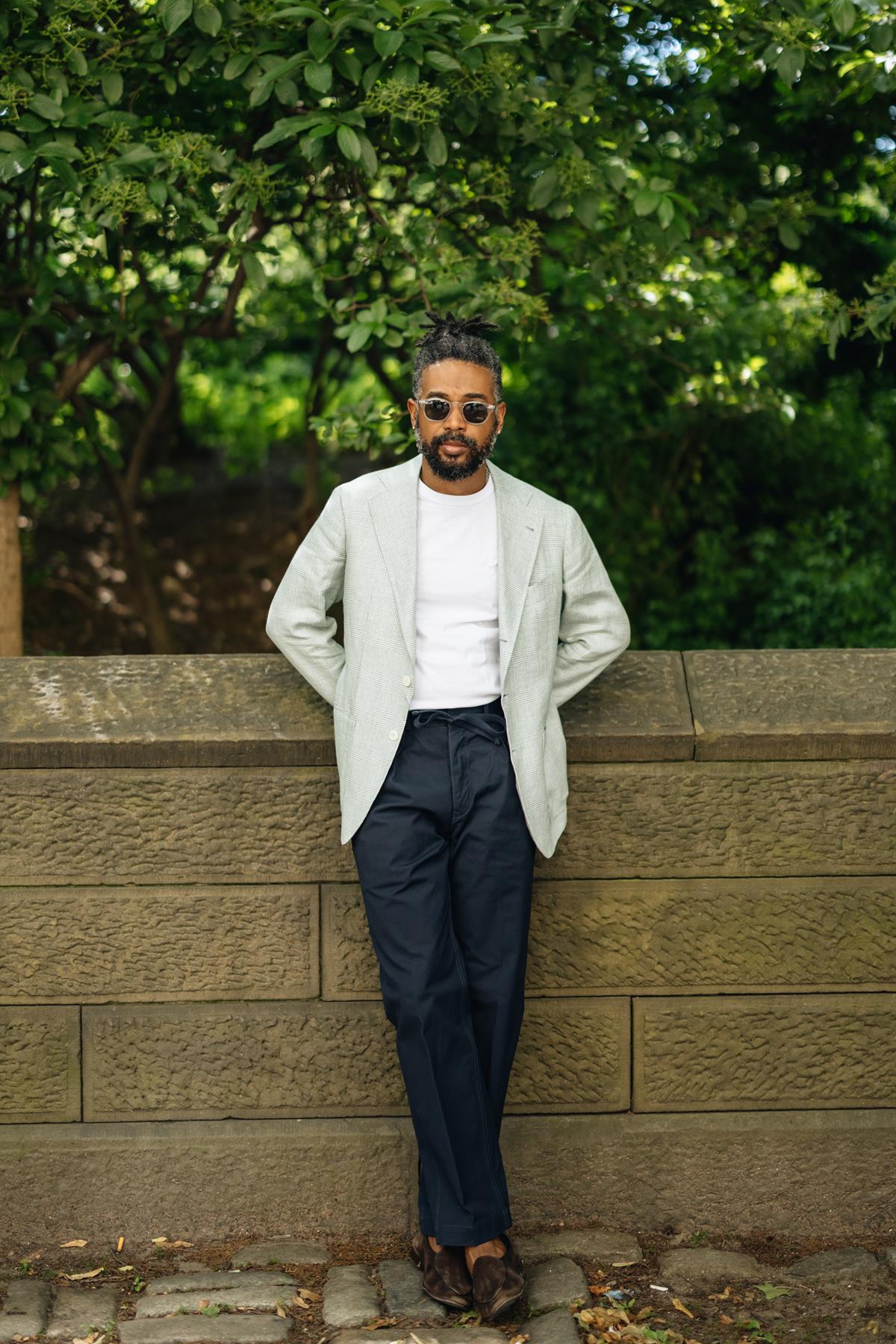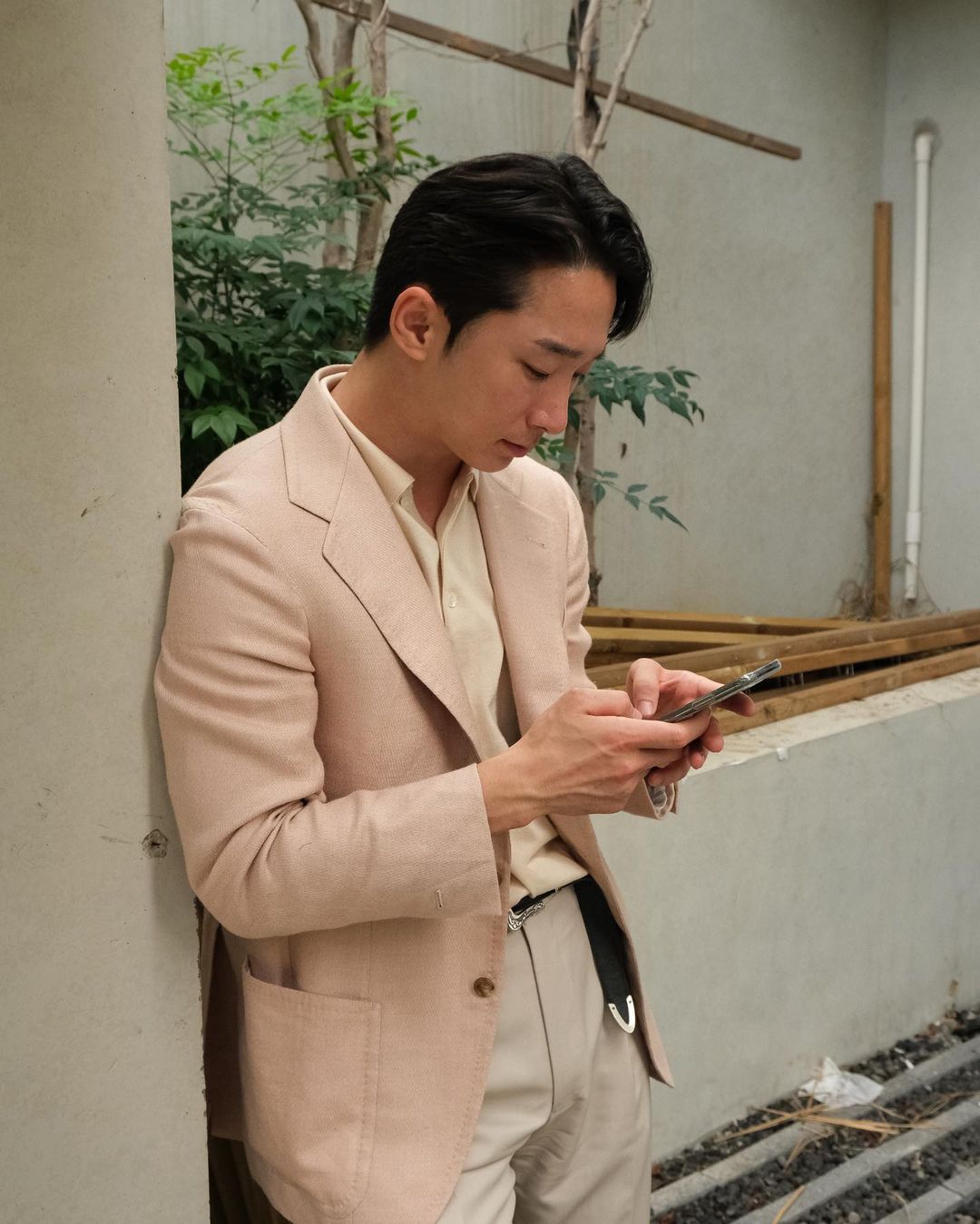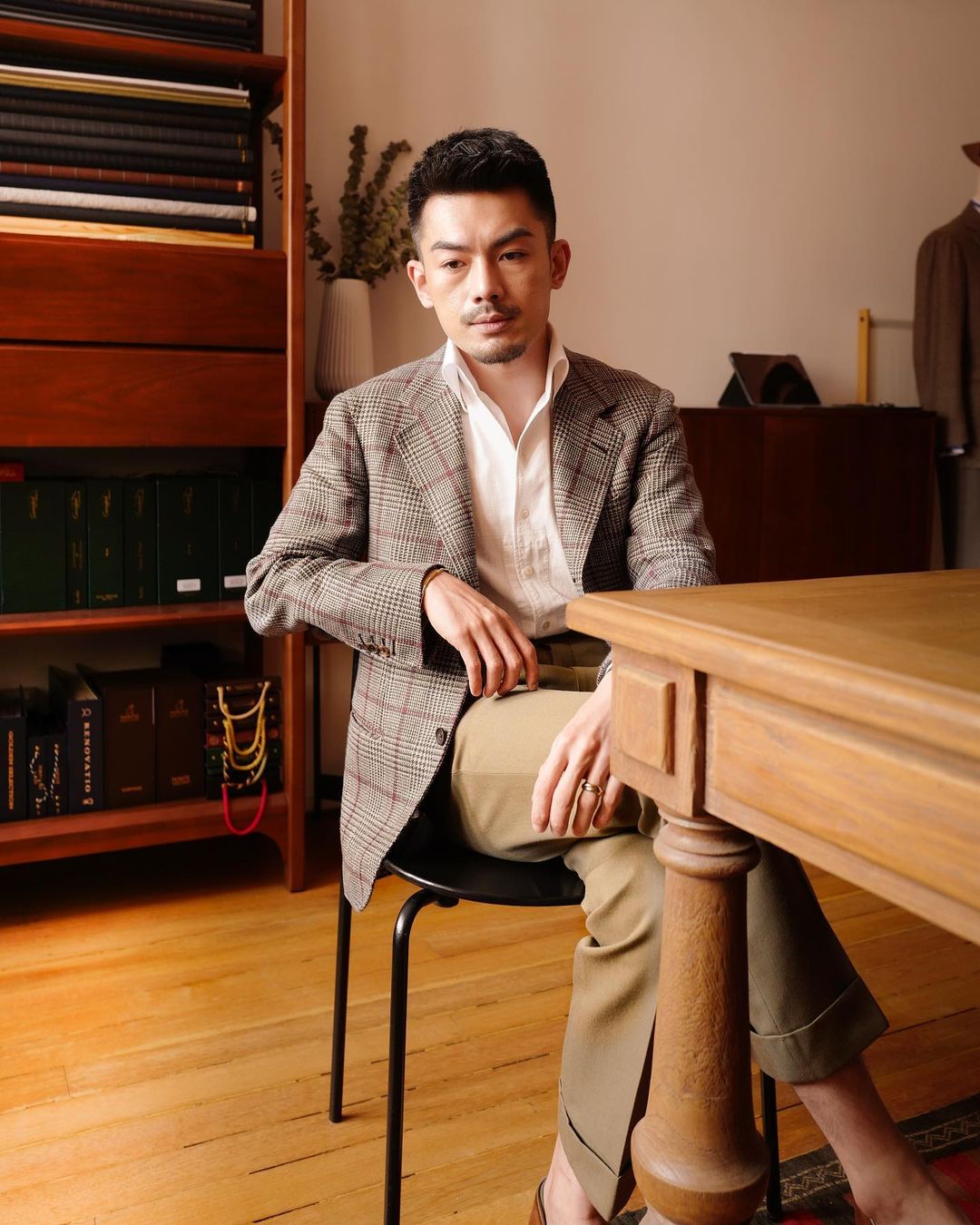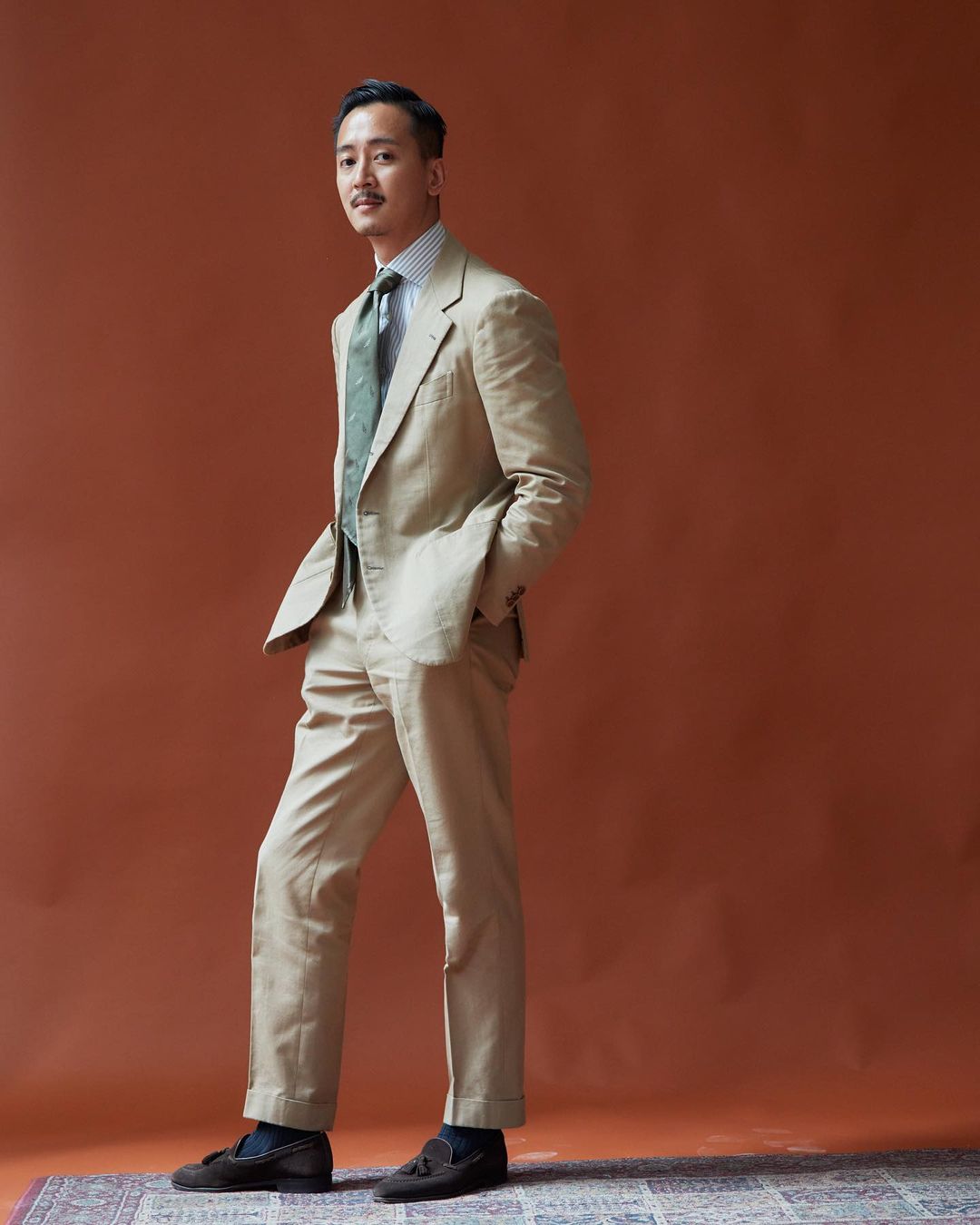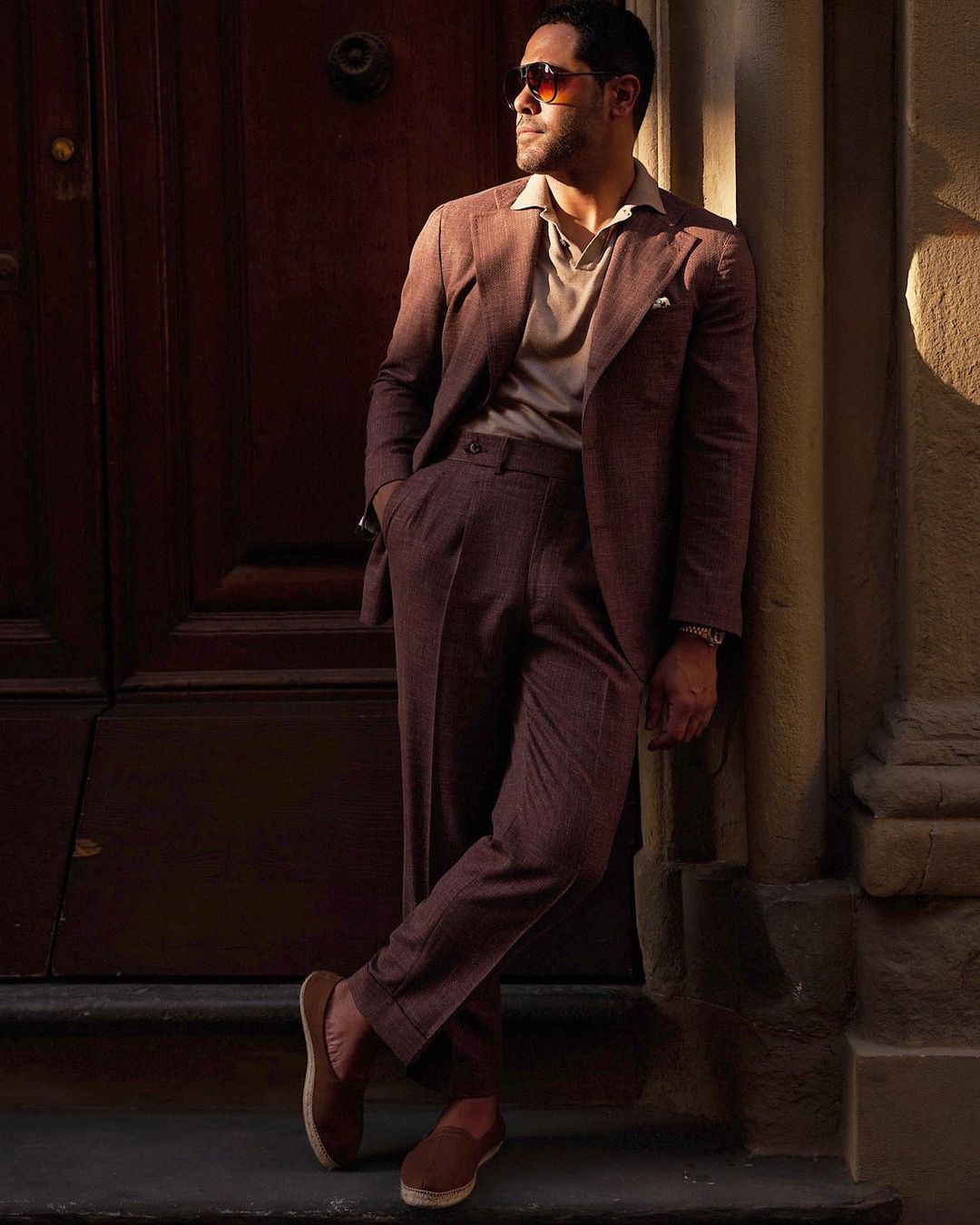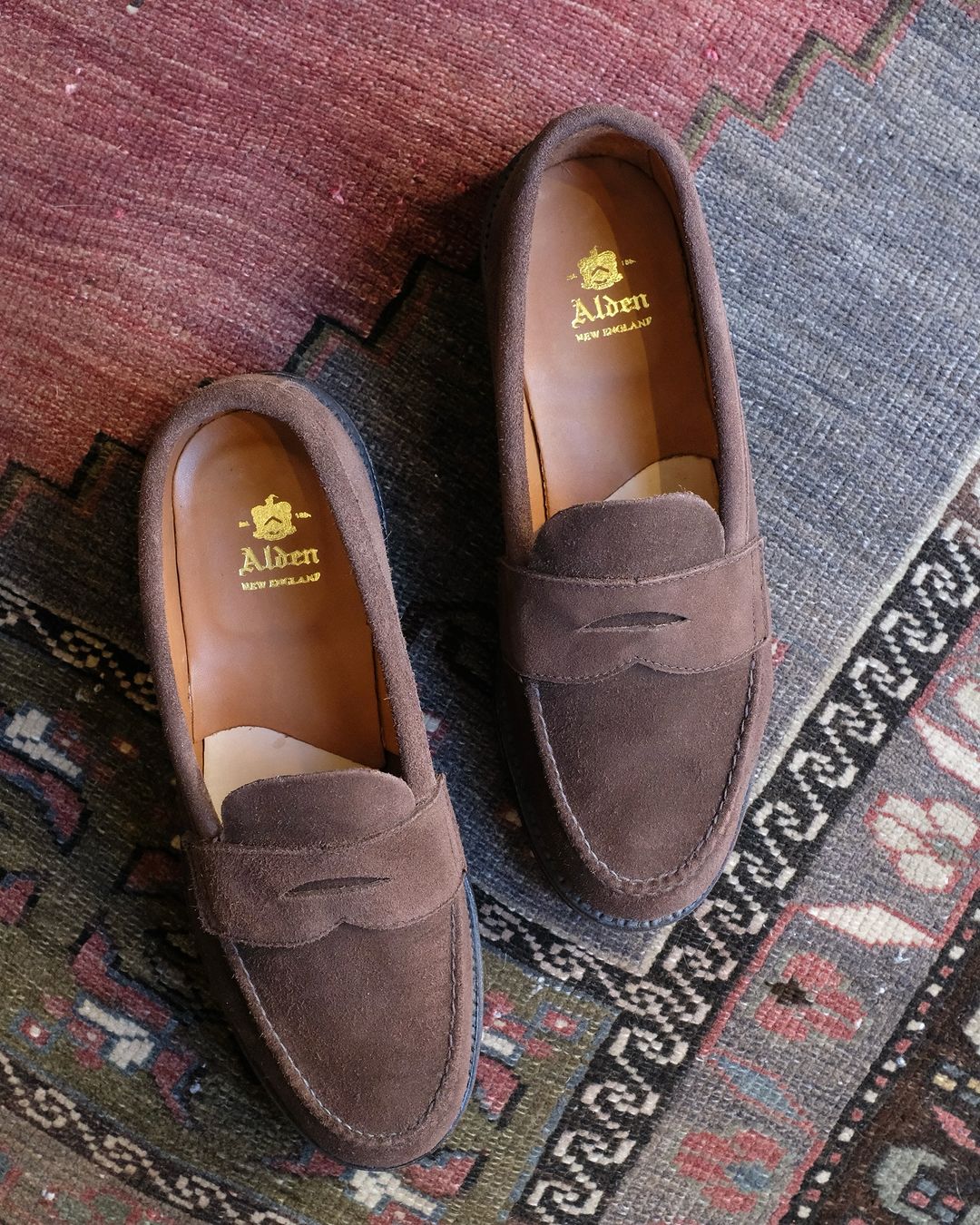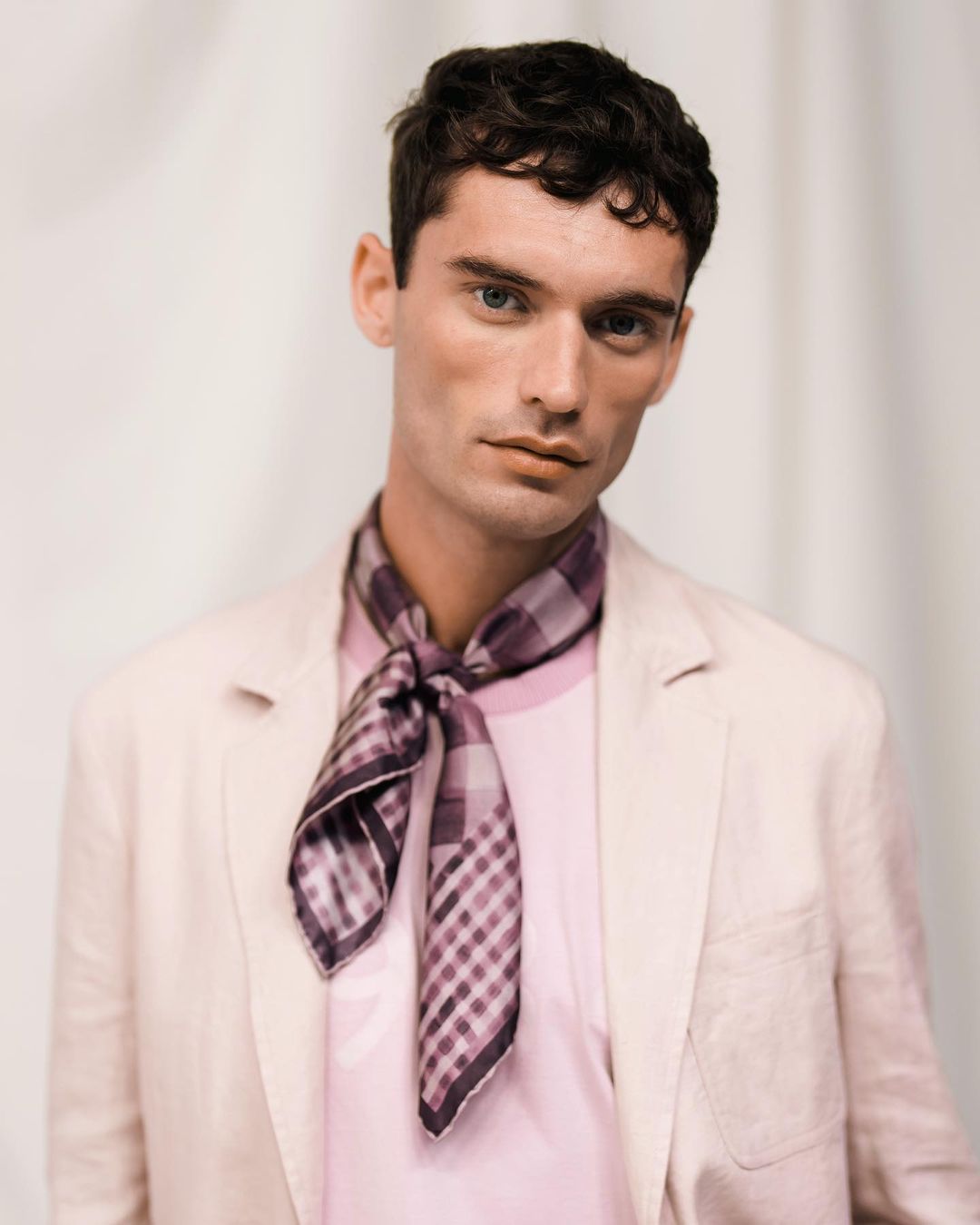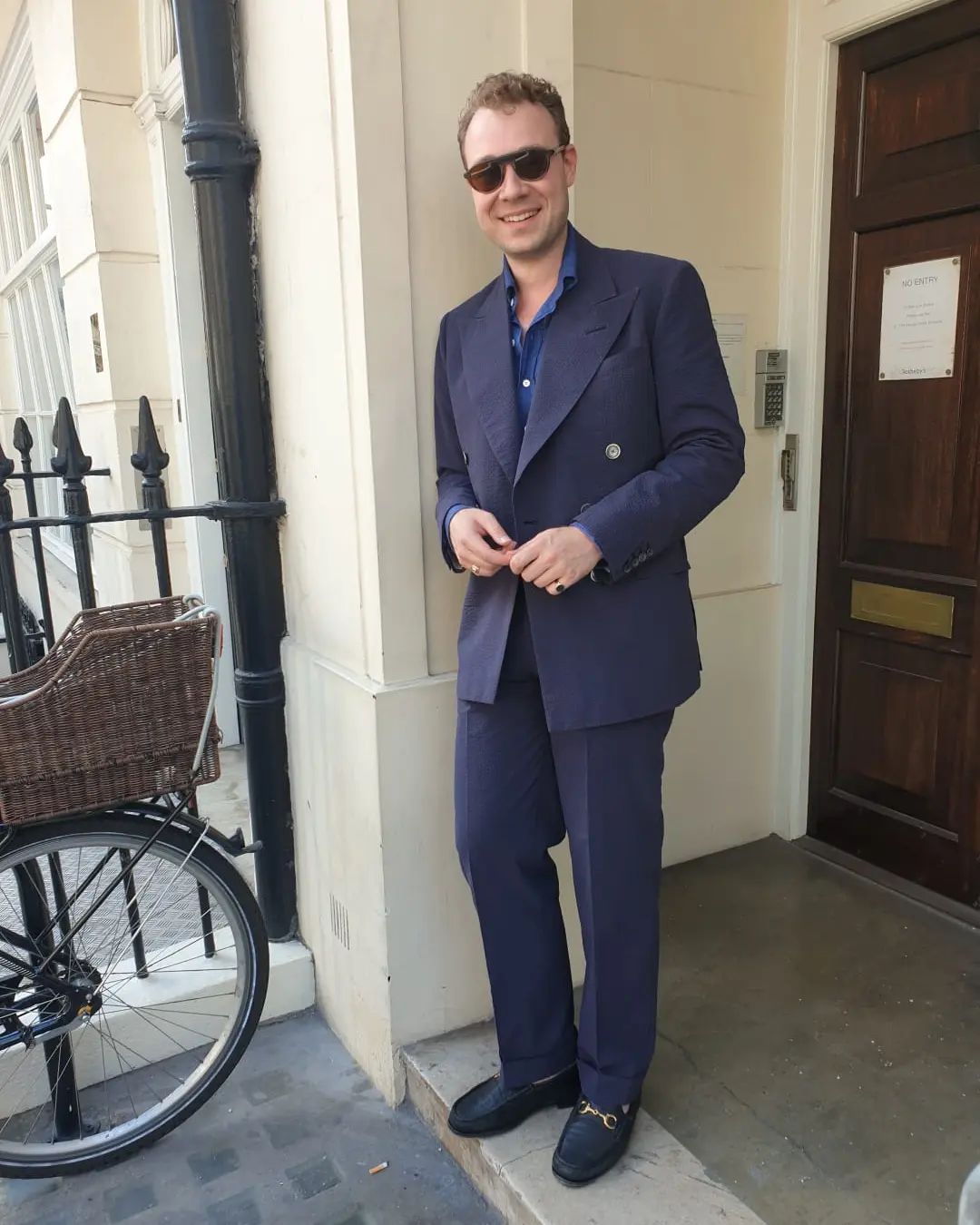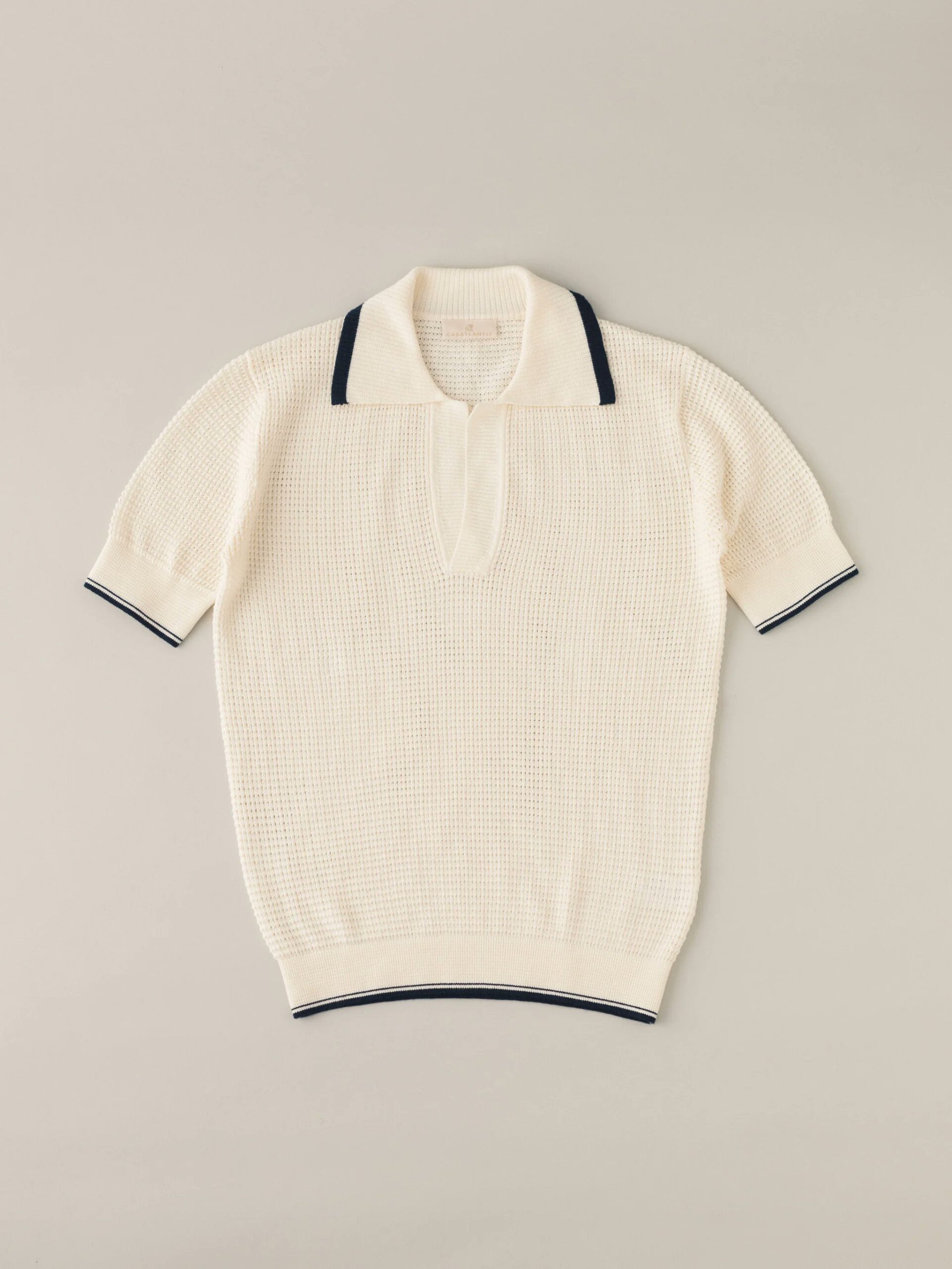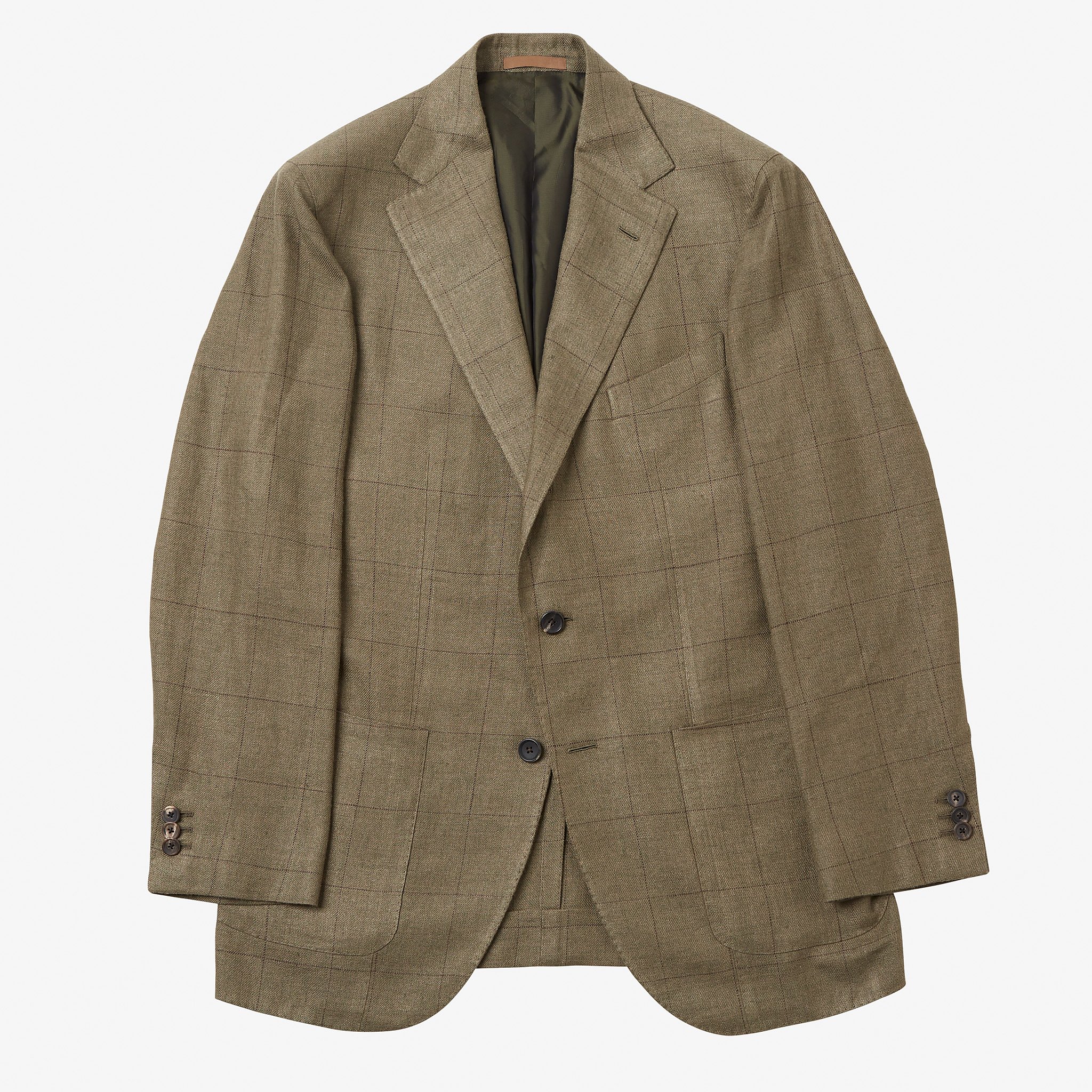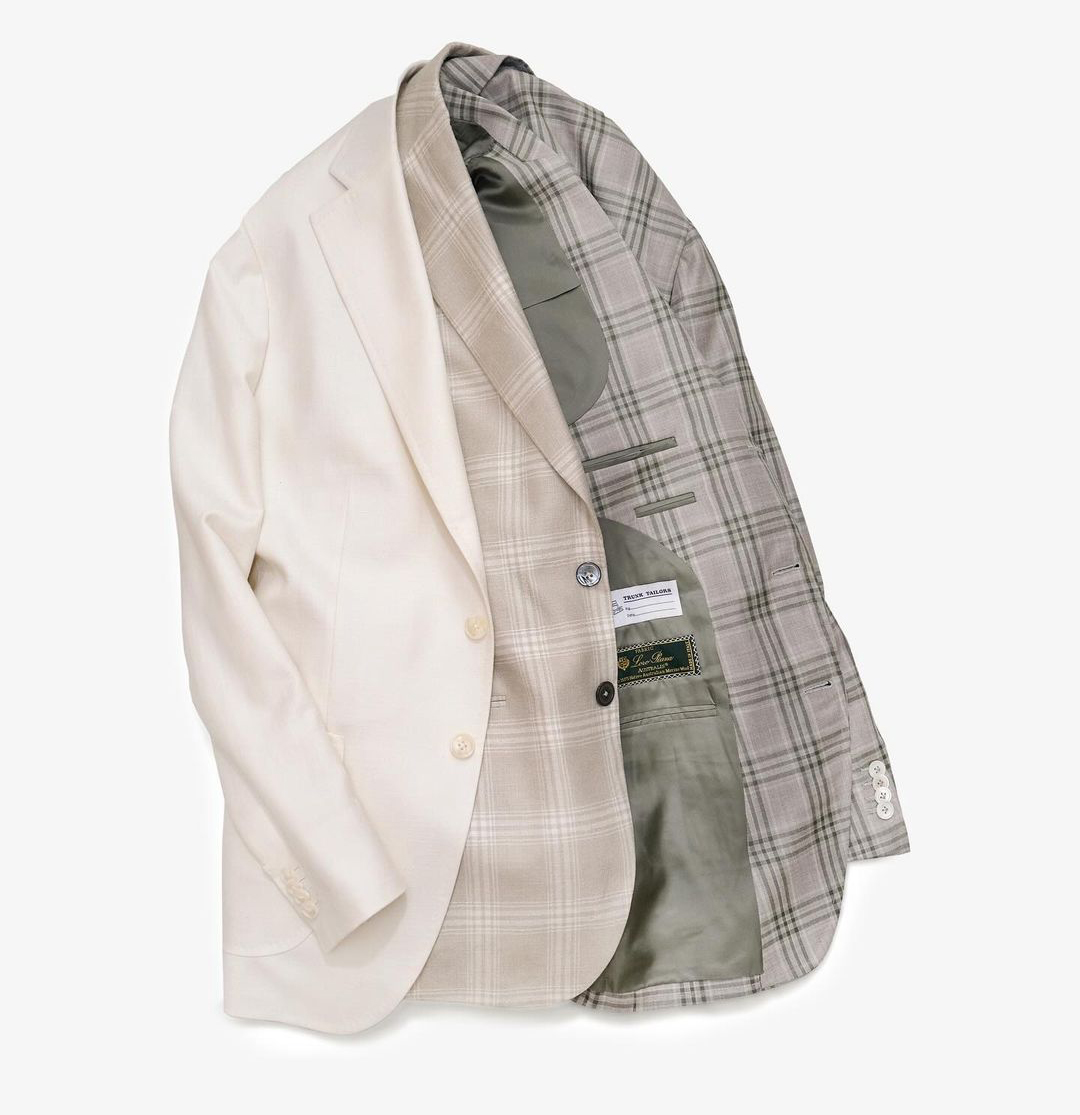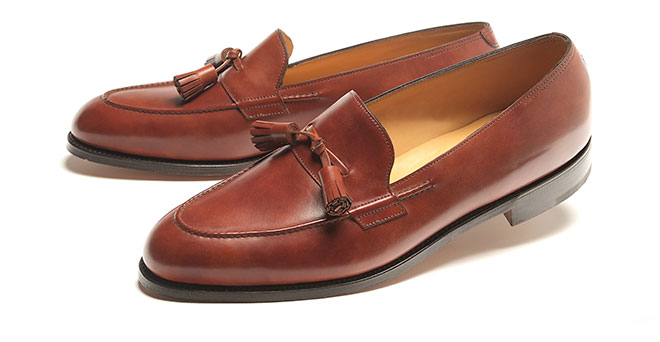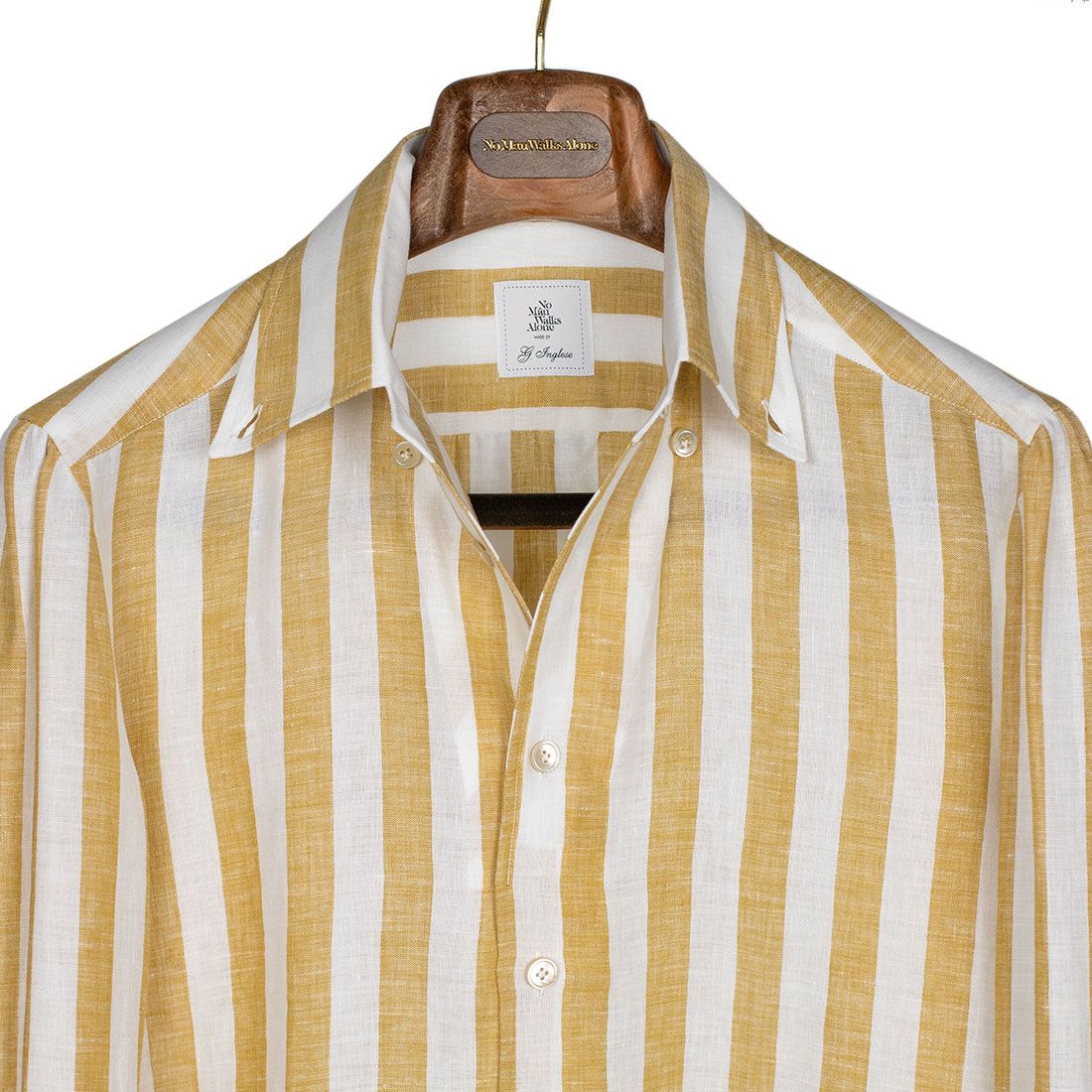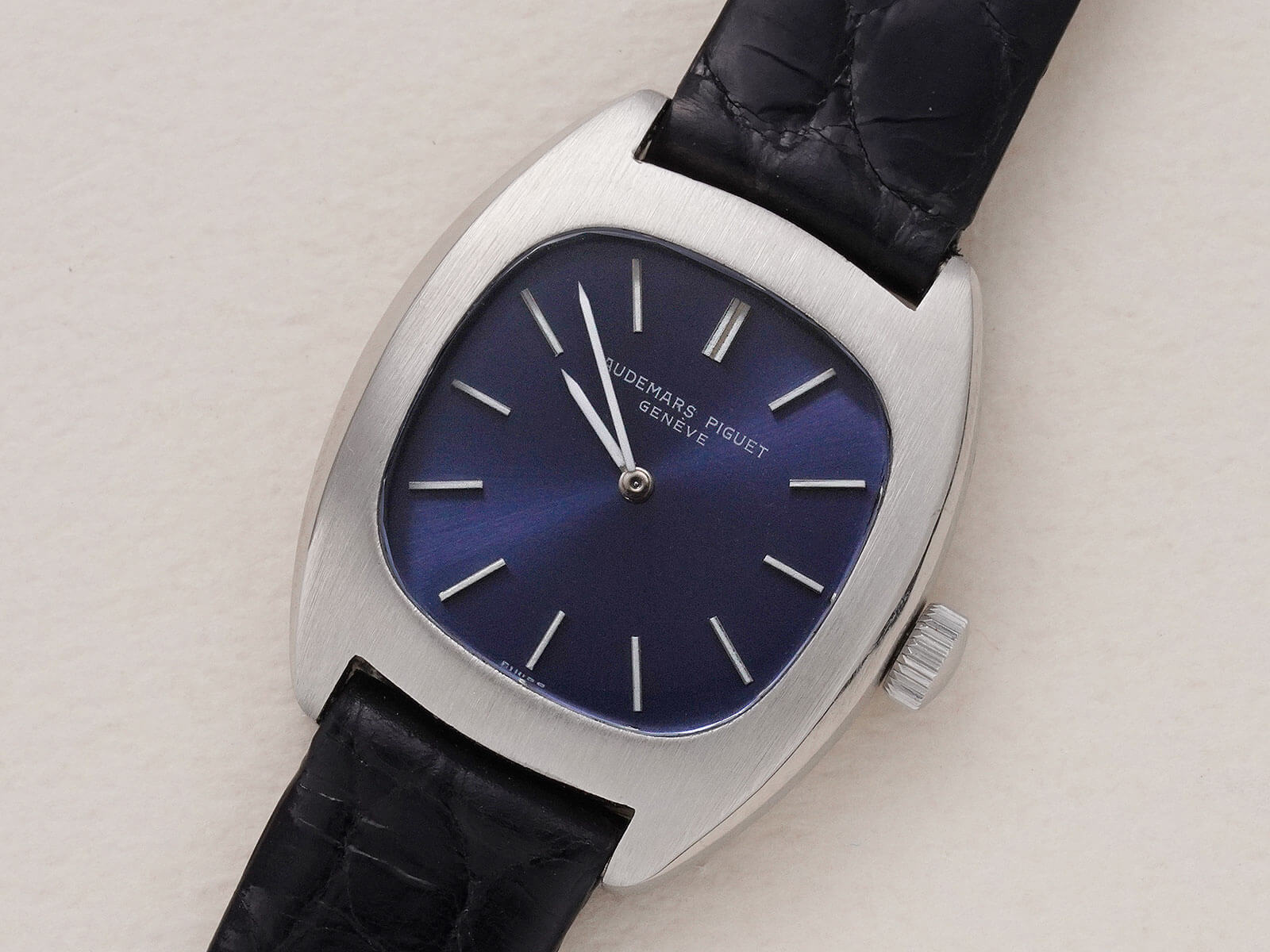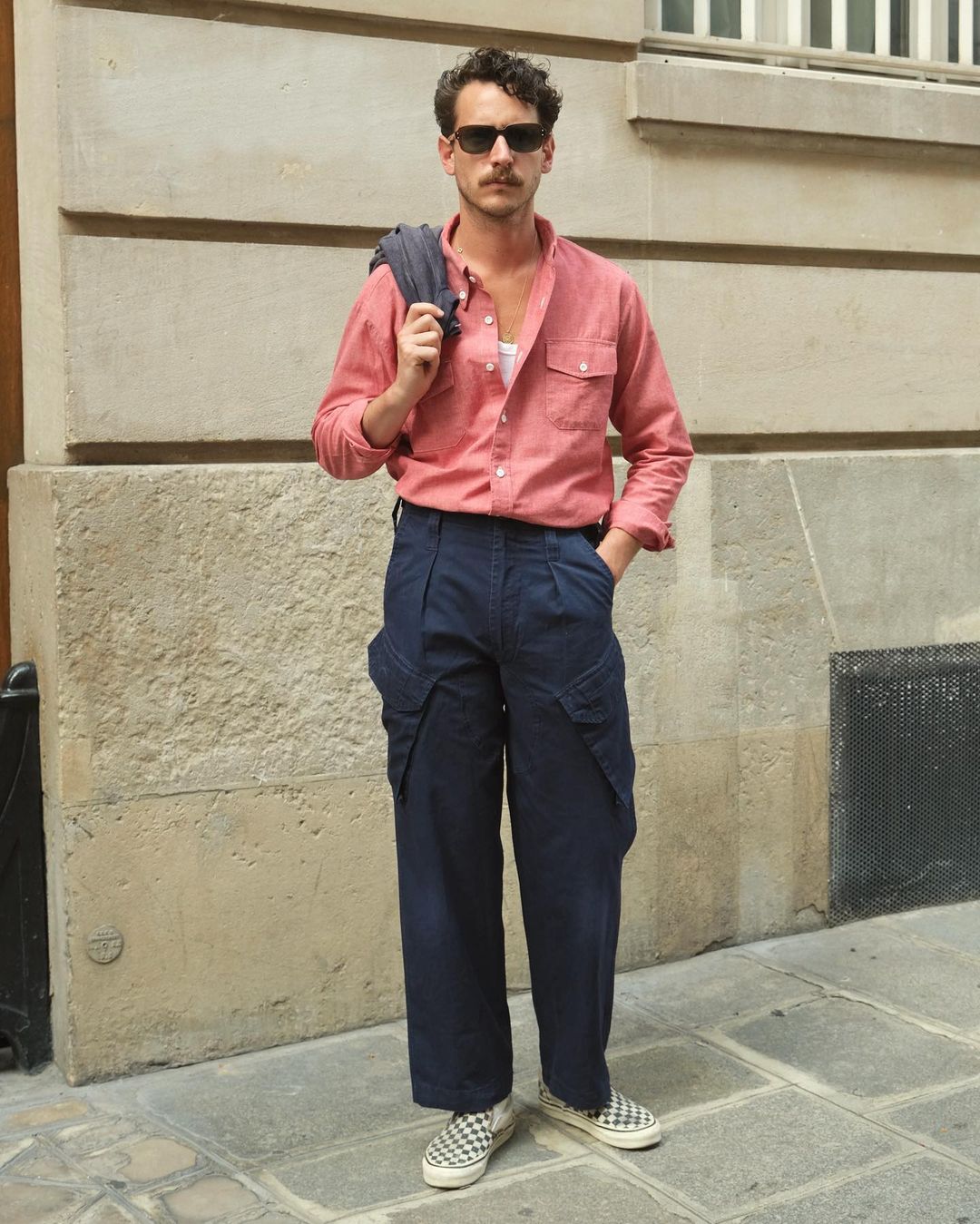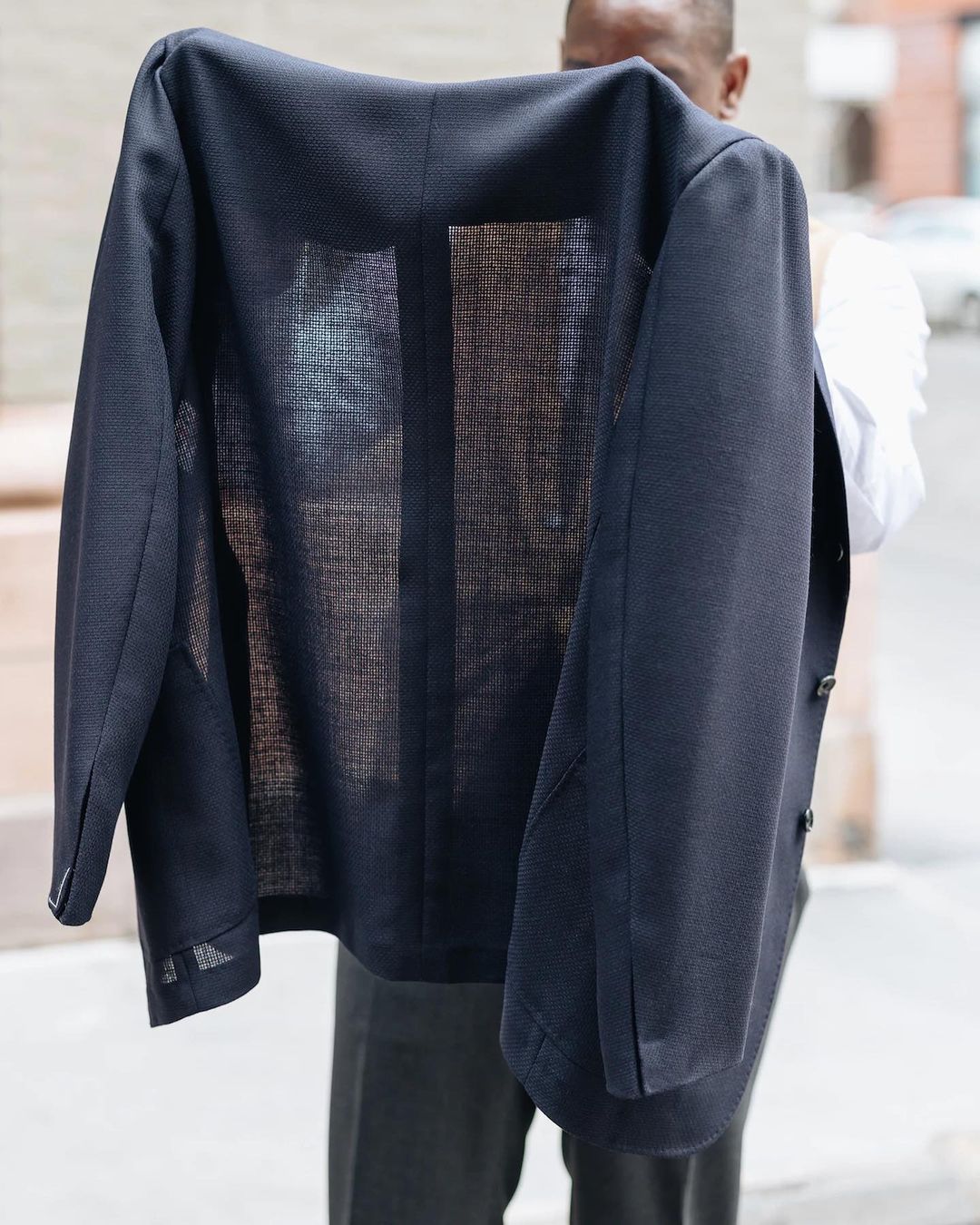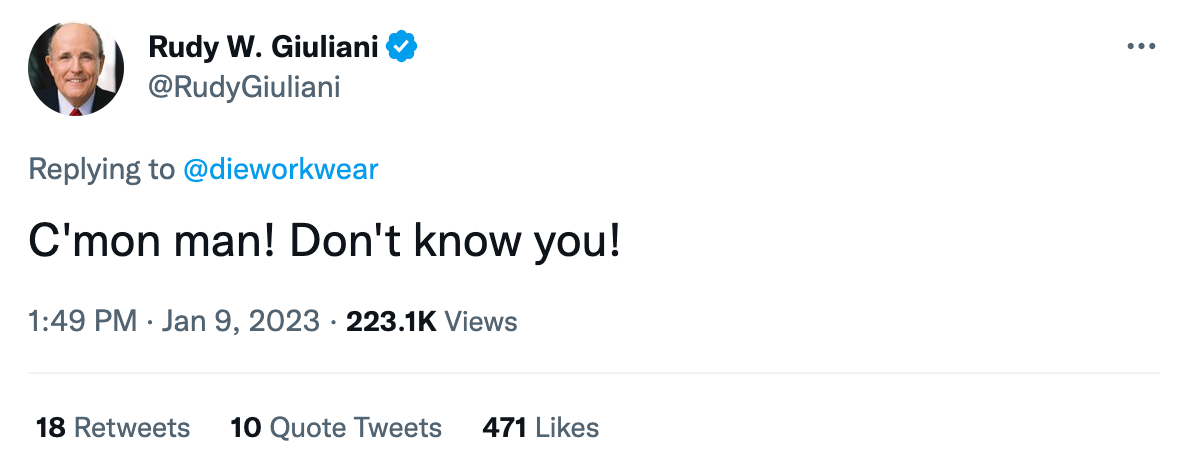
According to superstition, good luck comes to those who wear at least one new article of clothing on Easter Sunday, the official start of spring (style-wise). For years, I wrote spring style guides for various publications, including Put This On, but as menswear has become balkanized into tiny little communities, I’ve found it better to simply talk about what I’m excited to wear in the new season. These “Excited to Wear” posts aren’t meant to be prescriptive—find whatever works for you—but perhaps you will find some inspiration here. Here are ten things I’m excited to wear this spring, along with some miscellanea, including a Spotify playlist at the end to go along with the photos.
Hey, Nice Pants!
Five years ago, John Mayer presented his “theory on pants” in a dimly lit room while playing Qari’s “Pants from Japan” in the background. The gist: while pants are often neglected and considered to play second fiddle to jackets, they’re actually important cultural markers. From the bellbottoms of the 1970s to the baggy jeans of the 1990s to the bone-hugging slim-fits of the early aughts, how we cover our lower limbs reflects the spirit of the times. In this sense, Mayer feels we should respect the power of pantaloons and dress from the bottom up. “I’m saying we pick our pants first,” he explained, “and we pick our pants wisely. By making better decisions in pants—and making pant decisions first—we send the circulation of good taste through the rest of our body. The pants we choose will affect what shoes we wear and, systematically, what we wear on top. Good pants make good outfits.”
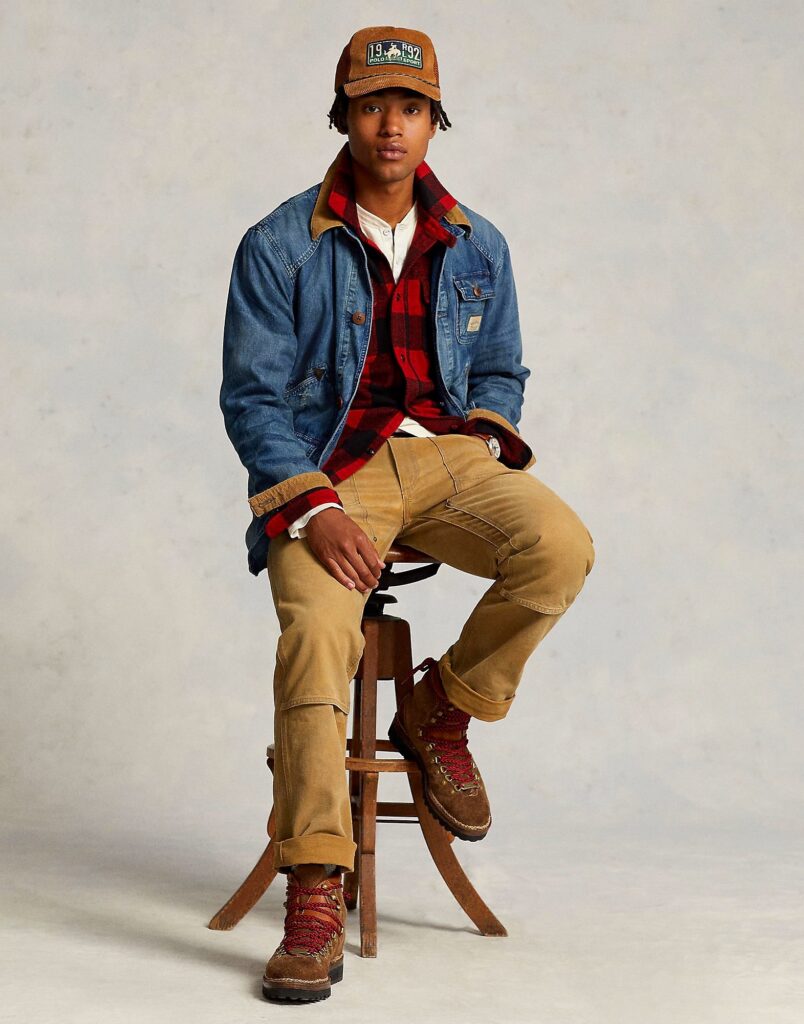
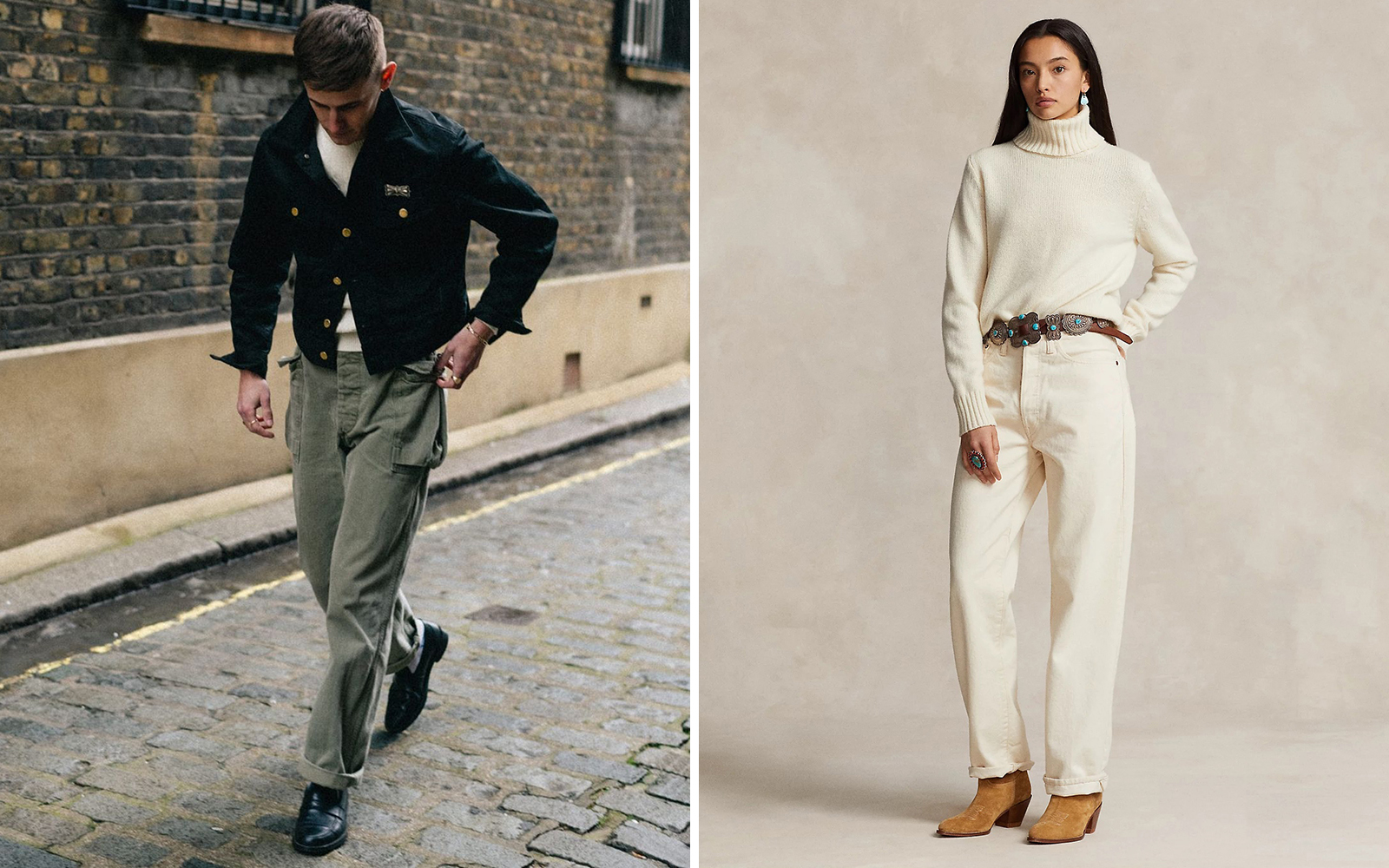
If pants reflect the cultural zeitgeist, then the endless array of leg coverings today must reflect the fact that there are no longer any era-defining trends. Whereas the early aughts shifted from the Americana heritage movement to soft Italian tailoring and then streetwear, there are now a gazillion legitimate aesthetics. As Cathy Horyn acutely observed nearly a decade ago, we live in a “post-trend universe,” where “there is no single trend that demands our attention, much less our allegiance, as so many options are available to us at once.” In this sense, we live in the most exciting Pant Era.
I still think most men could use a pair of slim-straight raw denim jeans (3sixteen’s SL-100x, Orslow’s 105 or 107, and LVC’s 1947 501s are good starting points). And if you wear tailored clothing, you should probably pick up a few pairs of grey trousers in seasonal fabrics, such as tropical wool for summer and wool flannel for winter (check out Spier & Mackay, Rota, and O’Connell’s). However, there are also so many more options beyond these basics.
These days, I’m mostly wearing double-knee carpenter or painter pants. Mine are from Ralph Lauren (sold out on the site but available on eBay). You can find similar styles from Todd Snyder (terrific relaxed fit, made from a plush moleskin, and currently on sale), RRL (cool rusted rivets and paint splatter details), Alex Mill (a nice alternative to standard white jeans), Indigofera (I love how the double-knee stitching integrates with the pocket bags), Carhartt WIP, and Dickies (the best affordable option). These go great with lightweight chambray shirts, flannel button-ups, trucker jackets, chore coats, and work boots. When I met bespoke shoemaker Seiji McCarthy last year, I admired how he looked in a double-breasted Tailor CAID blazer and Bryceland’s P13 fatigues. The full hip, gently tapered cut, paired with expandable pockets, lends a more interesting silhouette than your standard full-cut straight leg. I’ve been thinking about getting a pair in camo (TheDonsClub wears them well).
I also just ordered a pair of white jeans from the Ralph Lauren x Naiomi Glasses collaboration (after buying the same model last season in brown). They have the perfect cut: straight but slouchy, with a medium rise and a fuller leg without being baggy. They go naturally with trucker and bomber jackets, but the slightly higher-waisted, fuller leg cut also works excellently with sport coats. White jeans are great in this regard. Michael Hill once mentioned to me that he thinks white jeans are the easiest way to dress down a sport coat. “The advantage of white over classic blue jeans is that they’re easier to dress up,” he said. “In fact, if you just substitute indigo jeans with white, suddenly an outfit can look a bit smarter. And they work in almost any situation where you’d wear blue jeans—they go with olive, navy, and stone-colored jackets.” These Ralph Lauren ones are particularly good because they’re not super slim or low-rise, allowing them to look more at home with classic tailoring.
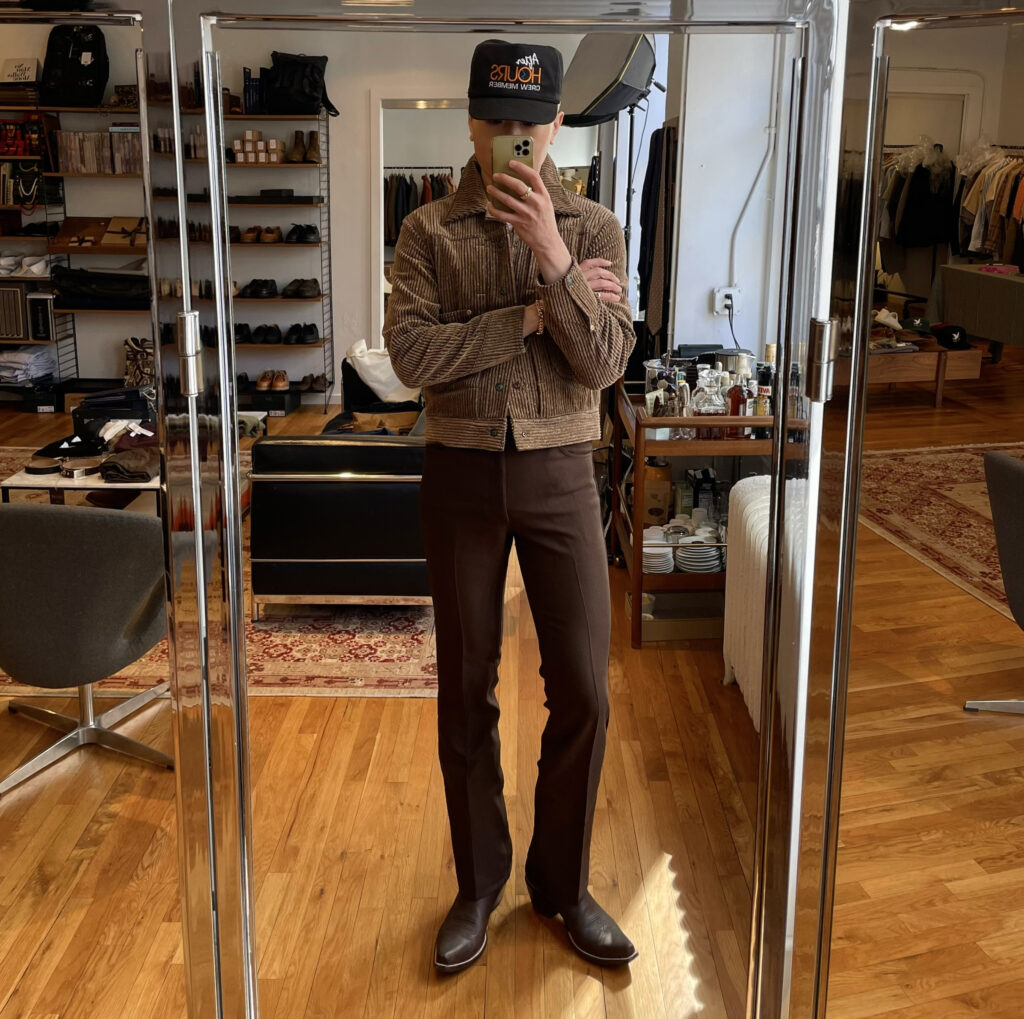
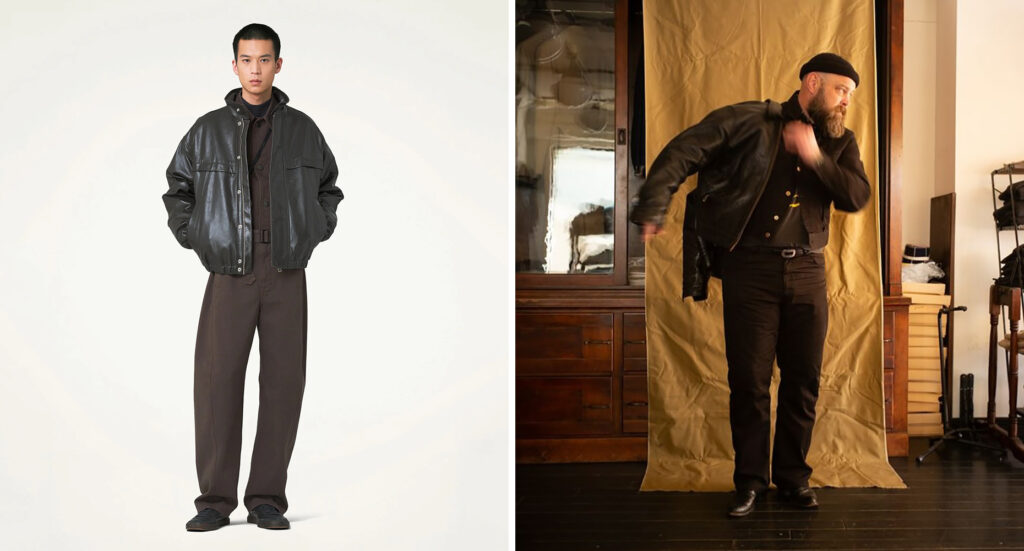
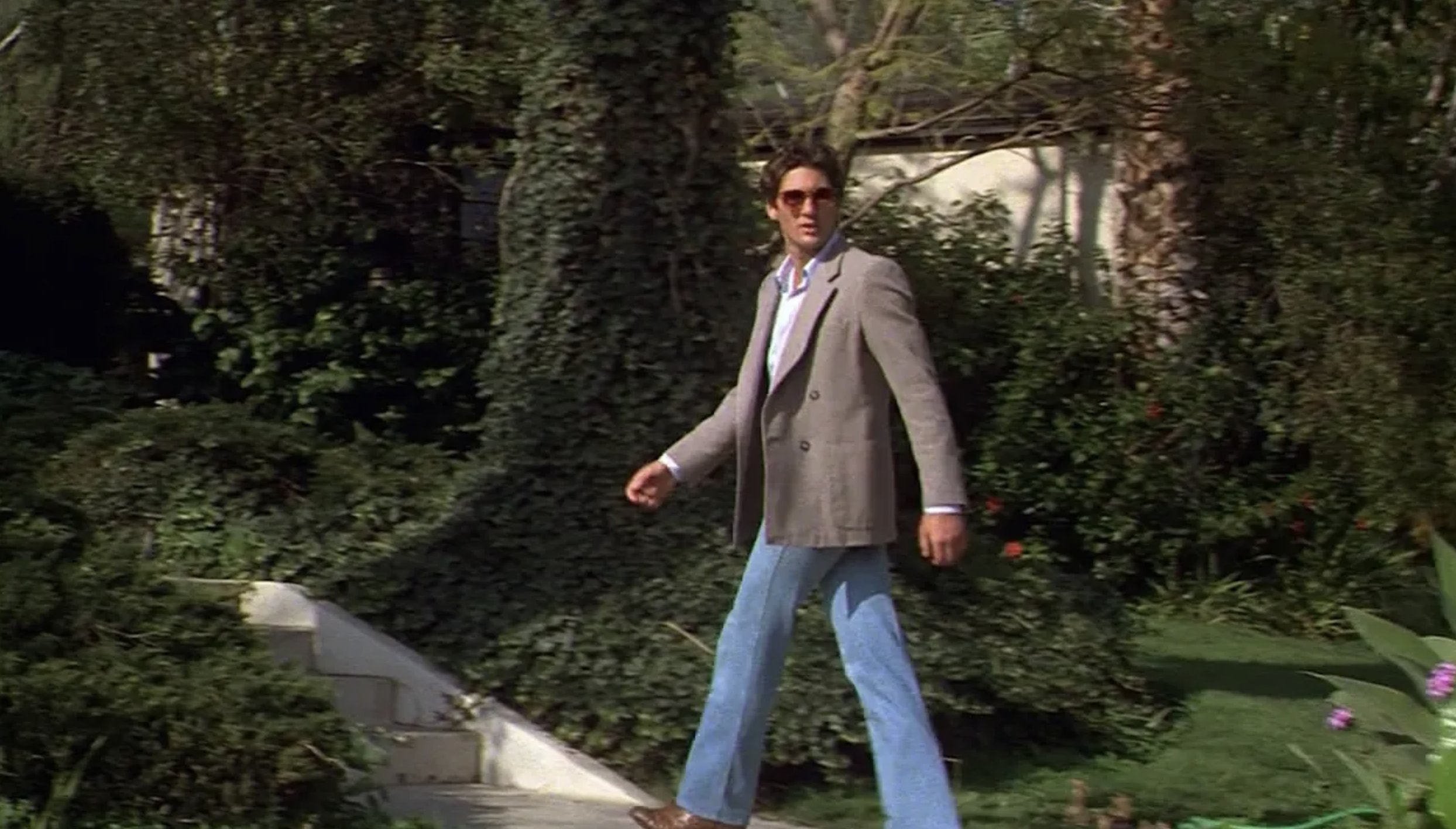
For something more contemporary, nothing beats Lemaire. Their twisted pants are built with a twisted outseam, which brings the fullness from the side of the leg to the center of your shoes. This gives them a charming balloon-shaped silhouette, which pairs nicely with rounded full-bodied knits or silky rayon camp collar shirts. Try them with elegant footwear, such as Stoffa’s slippers or La Botte Gardiane’s side-zip boots (still a favorite footwear style for me after all these years, especially in black). I have a pair of Lemaire twisted trousers in a summer-weight Tencel blend, which I reach for when I want to feel like a sophisticated Belgian artist with a stack of rare architecture magazines.
Finally, Wrangler Wranchers have been a guilty pleasure for me ever since I read about them in a New York Magazine article four years ago. As the author notes, the online photos of them are relentlessly ugly, but in real life, they hug your body in all the right places and have a gently flared leg that sits comfortably over cowboy boots (I’ve been wearing Tecovas’ Cartwright). I like them best in 1970s colors such as black, birch, and dark brown. My friend Willy is wearing a pair above with a Hanes white tee, a Wythe Italian Donegal ranch jacket, an And After That hat, and a pair of Heritage Boot Company cowboy boots. The only thing I hate about Wranchers is that they’re made from pure polyester, which means they’re terrible for the environment and will eventually languish in some landfill for the next 500 years.
For something more environmentally friendly, Wrangler also has their Wrancher model in stretch denim and their famous 13mwz Cowboy cut in pure cotton. For something a little higher end, I’ve been eyeing Barbanera’s new ‘70s cut jeans, Husbands Paris, and Bryceland’s new 893 bootcut (coming this summer in black sateen and blue denim). Like the Wranchers, I think all these would look great with a Western denim shirt, rayon shirt, vintage-styled tee, Lee 101J jacket, black leather double rider or trucker, or a classically cut sport coat. And, of course, ’70s-styled eyewear frames from brands like Moscot, Caddis, Dunhill, Bottega Veneta, and Jacques Marie Mage. For some excellent 1970s-style inspiration, check out this TikTok.
Options: Ralph Lauren carpenter pants, Todd Snyder carpenter pants, RRL paint-splattered carpenter pants, Alex Mill denim painter pants, Indigofera Wendell, Carhartt WIP double knee pants, Dickie’s painter pants (nice shot of the fit at Wooden Sleepers), Bryceland’s P13 fatigues, Eastlogue raw edge fatigues, Polo Ralph Lauren x Naiomi Glasses jeans in white and brown, Lemaire twisted pants, Wrangler Wranchers in polyester and stretch denim, Wrangler Cowboy Cut jeans, Barbanera 70s cut jeans, Husbands Paris, and Bryceland’s 893 bootcut (coming soon).

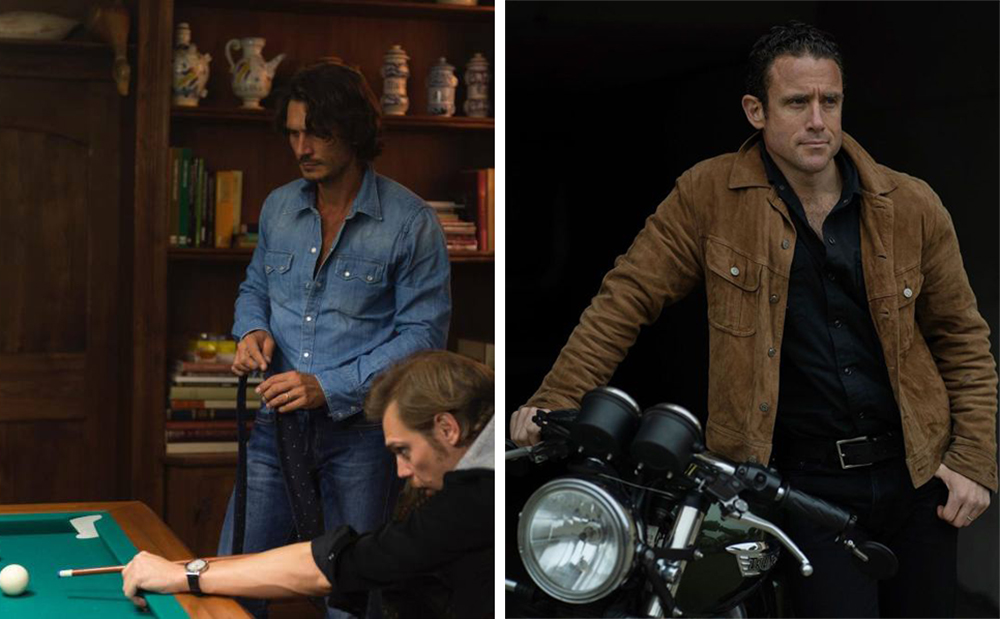
The Other Button Down
A few months ago, I realized I’d outgrown my Wrangler Western denim shirt, so I ordered another in a size up. I was pleasantly surprised to find the quality had slightly improved. The interior side seams and hem, which used to be poorly finished with a serger, are now neatly topstitched. The interior collar features a faux selvedge stripe (corny, but I appreciate the attention to detail). More importantly, the fabric is lighter and more breathable, making it better for summer. Plus, it’s only $40—a great value.
Western shirts have become staples in my wardrobe in the last few years. I love them for how they represent a mythologized American character rooted in a supposed classless society where, in the words of historian Carl Bridenbaugh, “any man might own land, and all must work with their hands.” Western shirts are a natural accompaniment to workwear, sitting comfortably alongside trucker jackets, jeans, five-pocket cords, canvas work pants, and any work boot. At the same time, they’re a great way to dress down rugged tailoring—cotton suits for summer and tweed jackets for winter. Plus, when you fasten those pearl snap buttons inside your compact urban apartment, you can sing that Beyonce line: “This ain’t Texas. Hoo!”
This spring, I’m looking forward to wearing this denim Wrangler Western shirt, a Tencel Wythe Western shirt, and some custom silk Western shirts I have coming from Post Romantic (an advertiser on this site). Post Romantic is a New York-based company that works with a small network of tailoring workshops in the Punjab area of India. I learned about the company through my friend (and now podcast co-host) Peter Zottolo, who ordered a 1970s-styled silk shirt with long collar points. I was impressed with the value proposition: a fully custom-made shirt made from pure matte silk for $115. So I bought a cream silk shirt made to look like something I saw from Umit Benan. It turned out so well that I ordered several silk Western shirts in various colors. Post Romantic can be a great option if you’re interested in playing around with some unique custom styles without spending too much money.
Options: Wrangler Western denim shirt (get the lake wash), Wythe Western shirts, Post Romantic (the shirt Peter designed is also now on the site), Kapital (I love the slanted pockets), Levis Barstow, RRL chambray (more breathable than midweight denim), Berg & Berg, Hamilton, Bryceland’s sawtooth chambray, Babanera (note the waist is very tapered), Imogene + Willie, After Pray (very retro), The Letters (Tencel and smile pockets!), Todd Snyder, and Taylor Stitch. Proper Cloth also offers men’s dress shirts, which can be made either on their pre-designed block pattern or through their made-to-measure program. The nice thing about their washed denim Western shirt is that you get the benefits of custom tailoring (i.e., a superior fit) along with the finishing of ready-to-wear (i.e., an enzyme wash for that lived-in feel).

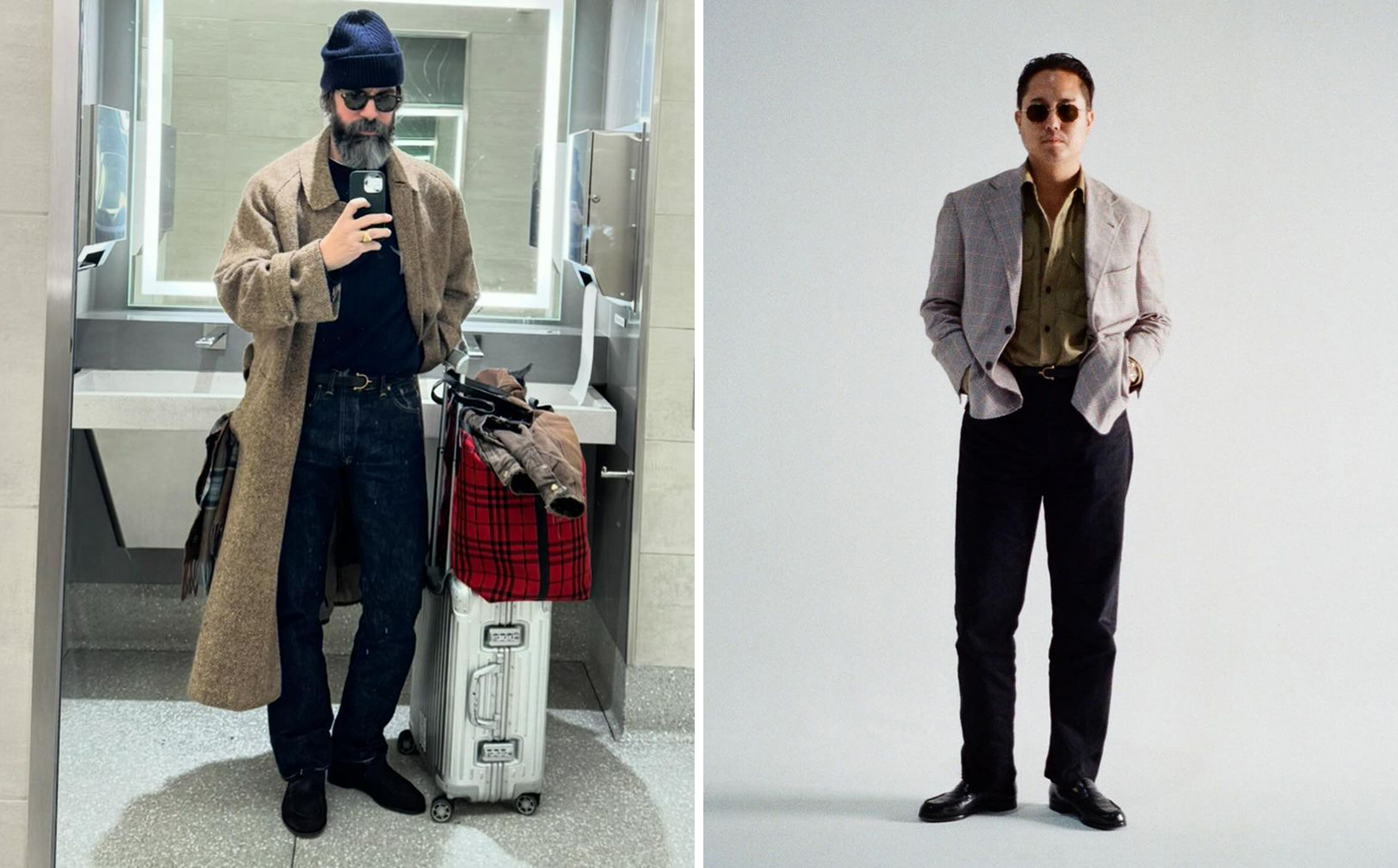
That Belt Everyone is Wearing
Tory Leather belts tick many boxes on the menswear Bingo card: made in the USA, one-inch width, sturdy bridle leather construction, and equestrian-styled spur buckle. They go well with Westernwear and high-waisted, full-legged trousers (two aesthetics having a moment). Most of all, they’re refreshingly affordable at $50. Perhaps for these reasons, I’ve been spotting them everywhere, from Aaron Levine and Sirapol Ridhiprasart’s fit pics to Aime Leon Dore’s lookbooks. I recently picked one up in black from HorseSmarts, one of the cheaper retailers online. They took a while to ship (about two weeks for the item to arrive), but it was fine. My only issue: Tory’s English Spur belt runs about an inch shorter than my other belts. Whereas you typically order belts one size larger than your trouser size (so a size 32 belt for a size 30 waist), I wish I sized up twice (so a size 34 for the belt). Nonetheless, it’s a fun accessory and can be an easy way to introduce a slightly rustic element to casual outfits without spending too much money.
Options: Horsesmarts, French General Store, Dover Saddlery, and Aime Leon Dore


Indian Fabric Shorts
About four years ago, I was straining my ear over a crackling telephone line, trying to hear my friend Agyesh explain a new project he was working on at Stoffa. He told me about traditional Indian fabrics—introducing me to words like Chindi and Kantha—which involved production processes that seemed new but also familiar. For instance, Kantha is something like the Indian version of Japanese boro. Fabric scraps are layered on each other and then backed with cotton muslin for structure. The materials are then attached using rows of running stitches, which form radial lines that look like ripples moving through water.
Since then, I’ve noticed more companies using traditional Indian textiles: Kartik Research, Harago, Kardo, and 11.11 among them. These companies are interesting because they rely on labor-intensive processes that are no longer possible in most areas of Western Europe and North America because of something economists call Baumol’s cost disease. In the UK, David Evans was one of the last English textile companies to still print silks by hand until their closure in 2002 (their archival fabric books were later auctioned off, some landing at Drake’s). Such labor-intensive textiles are no longer cost-effective because of productivity growth in other sectors. But in South Asia, you can still find traditional textiles that are hand-spun, hand-loomed, hand-dyed, hand-printed, and hand-embroidered.
There are some downsides. Artisanal fabrics made with so much handwork are often unstable in some way. The handsewn stitching can shrink at different rates, causing the fabric to pucker; vegetable dyes may not be colorfast, so they fade quickly and in uneven ways. You can minimize some of this by dry cleaning (rather than putting the item through a wet mechanical wash) or take your chances washing the garment by hand (gentler than the laundry machine). Last year, I bought some shorts from Kartik Researcher and Harago. I wore them around the house on hot summer days with camp collar shirts, guayaberas, band t-shirts, and slip-on shoes. I love how they sit somewhere between the boho-chic aesthetic of Bode and the creative upcycling of By Walid. Imagine wearing something like these Kartik Research or Harago shorts with a Portuguese Flannel gauze or Smock seersucker shirt layered open over a white t-shirt, then paired with Chamula’s huaraches or Sabah’s loafers. It would be the perfect outfit for listening to Alice Coltrane, Yusef Lateef, or the new André 3000 album.
Options: Kartik Research (available at Mr. Porter, SSENSE, and END), Harago (available at Canoe Club, Matches, SSENSE, and Saks Fifth Avenue), and Kardo (available at No Man Walks Alone, Mr. Porter, Stag Provisions, Kapok, and Bergdorf Goodman). Also, while 11.11 doesn’t currently stock shorts, they’re a great label for this sort of aesthetic.
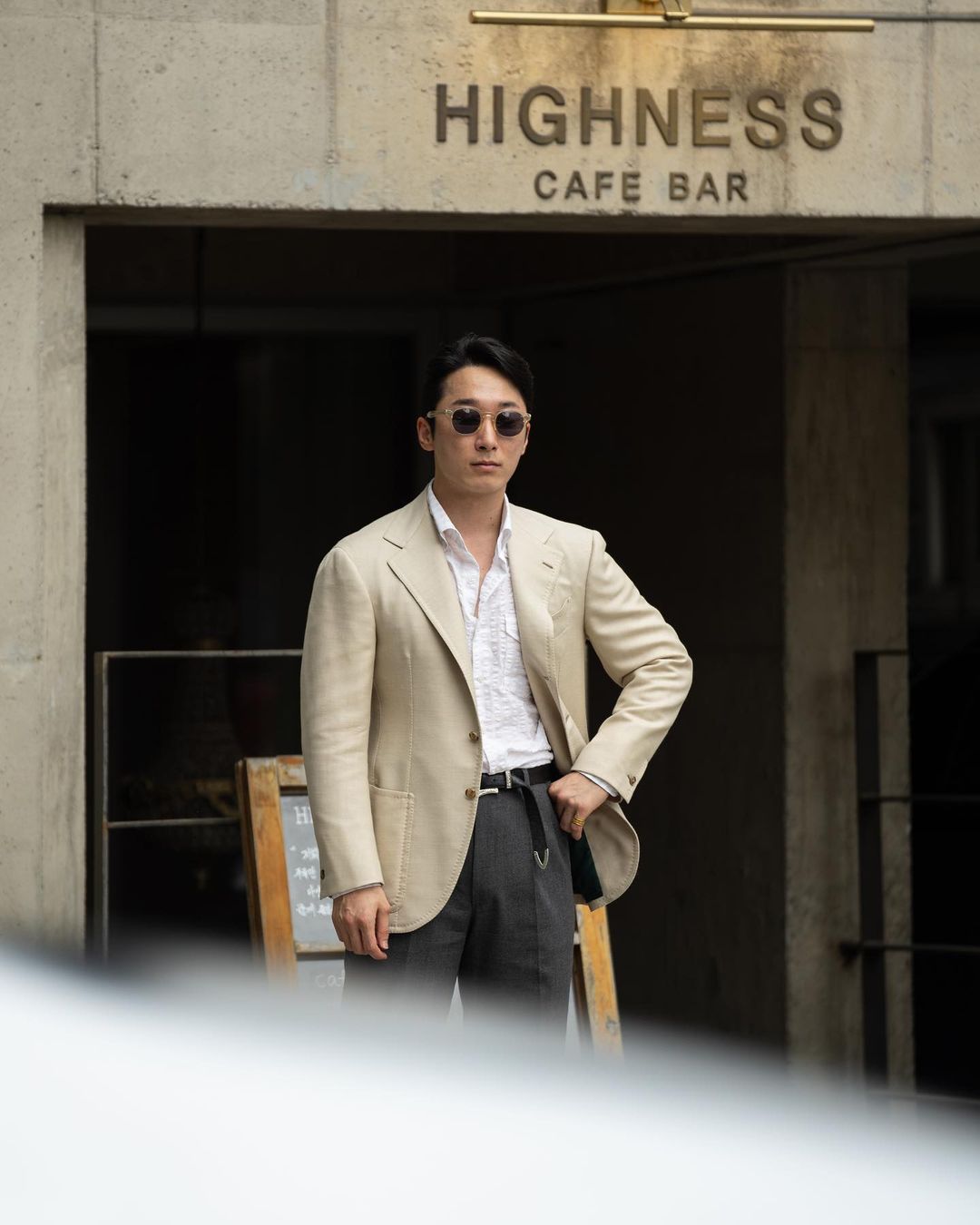
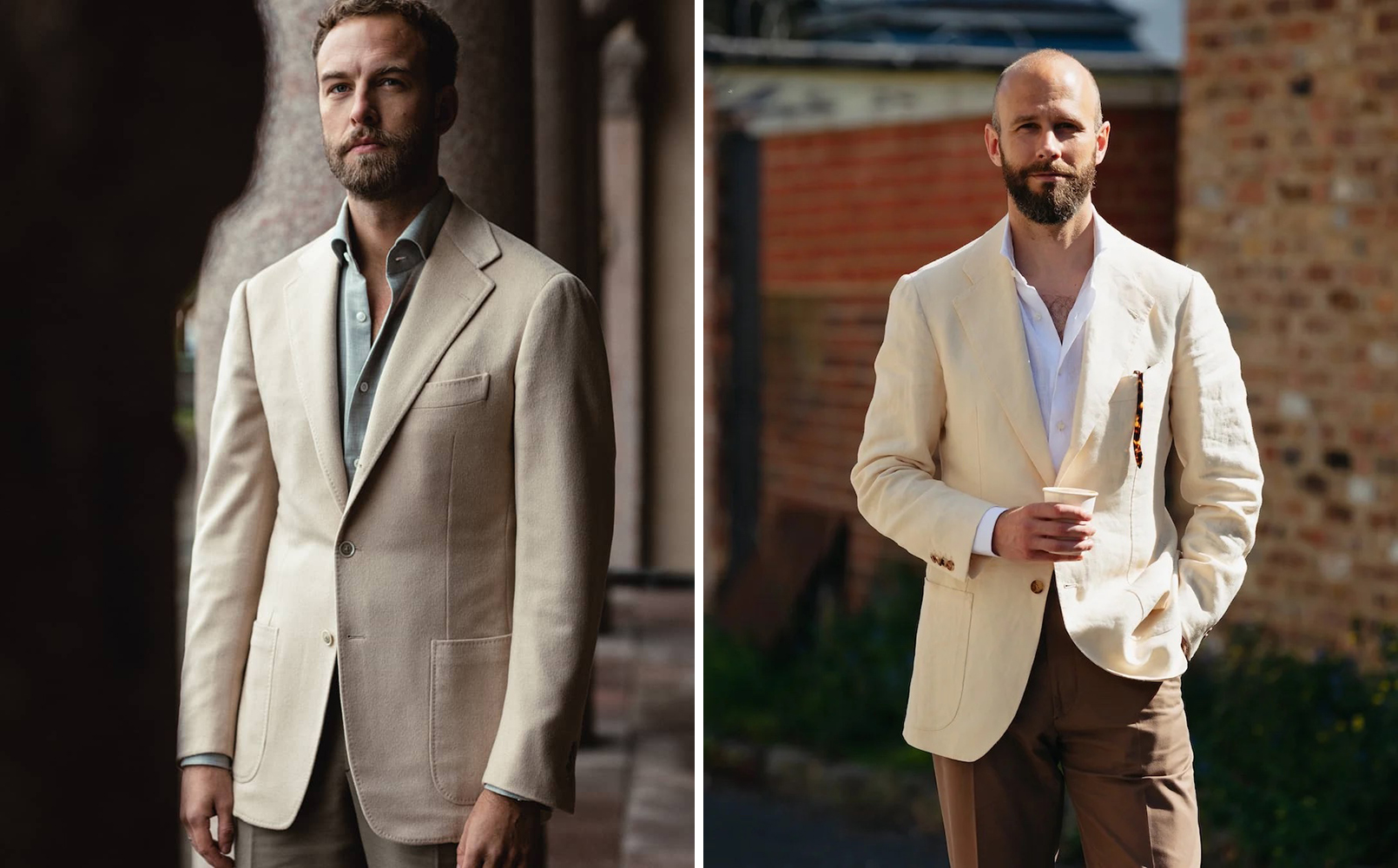
Northern Lights
Ever since Beau Brummell put on a dark coat with full-length trousers and a neatly tied cravat, the template for classic male dress has been some variation of a dark jacket (often navy) worn with light-colored trousers (typically grey or tan), and a white shirt (sometimes light blue). This formula has existed for so long that most men should build a wardrobe around it, as straying too far can result in outfits that feel uncomfortable to the eye. However, spring and summer are great seasons to experiment with what some call “Northern Lights,” which is an inversion of that standard formula.
Last year, I gave Sartoria Solito a cut length of cream-colored linen to be made into a sport coat. With luck, it should be ready next month—just in time for the warmer season. I was inspired by a photo of George Wang wearing a cream linen jacket with navy trousers; and a conversation I had with Mark Cho, who told me that he finds cream linen jackets extremely useful in the warmer seasons. Like me, he finds linen to be easier to wear as a suit, as you don’t have to worry about whether the rumpled texture of the jacket matches your trousers. The exception for him is a cream-linen suit he commissioned from Liverano & Liverano, which he often breaks into separates. “Cream is already such an unusual color for a sport coat,” he told me, “that I don’t think about how the wrinkles work with the pants.” I suspect cream linen jackets are easier to wear when they have a slightly warmer, yellowish hue—something like the color of eggnog. I suppose I will find out soon.
When wearing a light-colored jacket, the challenge is always finding the right pair of trousers. There are three easy solutions. The first is to try mid- or dark grey trousers, which should already be in your wardrobe. The second is to try trousers in the same color family as your jacket but a few shades darker. For cream or tan jackets, that means dark brown trousers; for a light blue jacket, that means navy pants. In this way, you introduce harmony while retaining contrast. Alternatively, you can always try white trousers, although some white fabrics can be a bit sheer. When paired with a slightly darker shirt, such as light blue, those can be an easy backdrop for your jacket, as they stay within the Brumellian formula of having a coat darker than your trousers.
Options: Armoury tan cross-ply and light blue wool-linen-silk; No Man Walks Alone x Sartoria Carrara tan gun club; Besnard cream herringbone silk and undyed silk; Spier & Mackay in cream linen, oatmeal silk, and Tiffany blue wool-silk; Natalino in checked tan silk, checked tan wool-linen, and checked tan linen-cotton; The Anthology in textured cream wool and ivory cashmere blend; and Cavour in checked tan wool-linen, mint green wool-linen-silk, and tan checked wool-linen
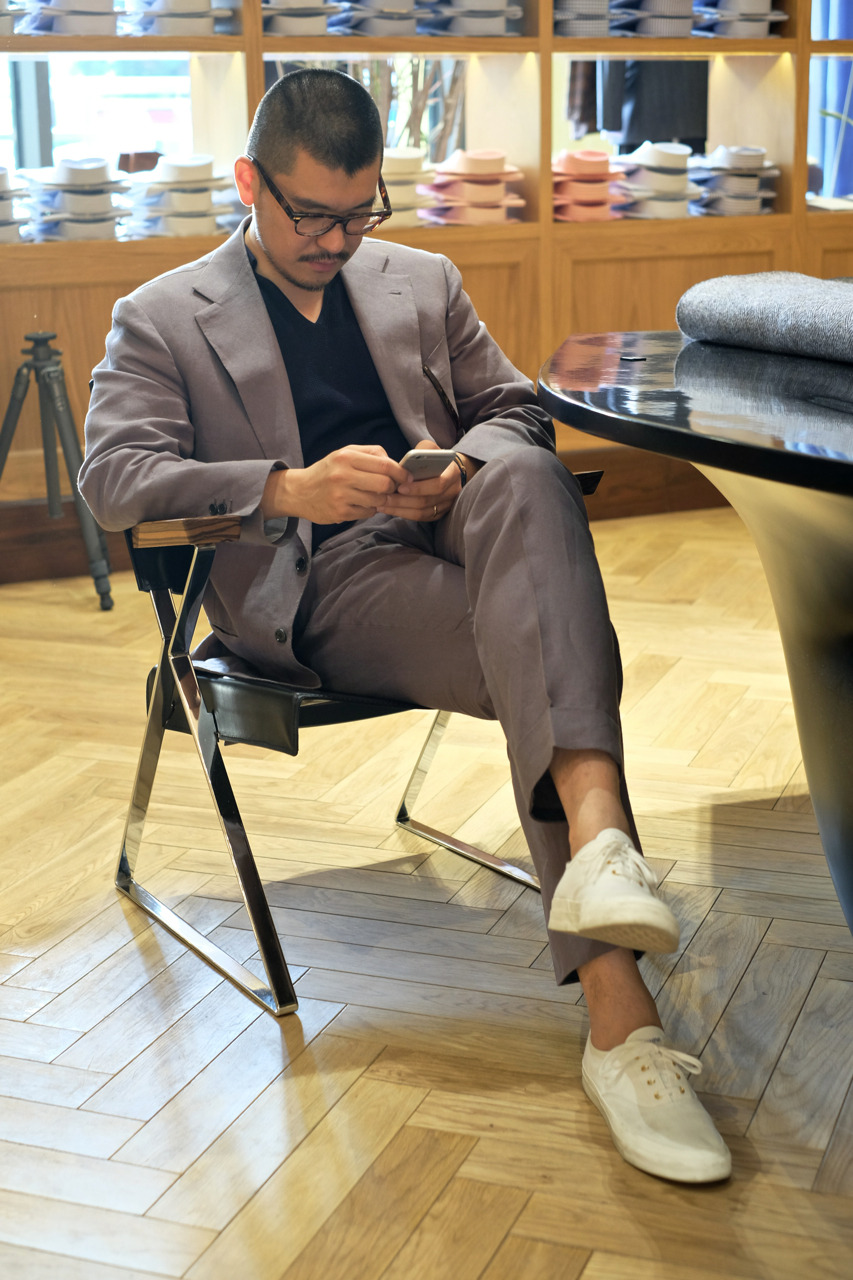
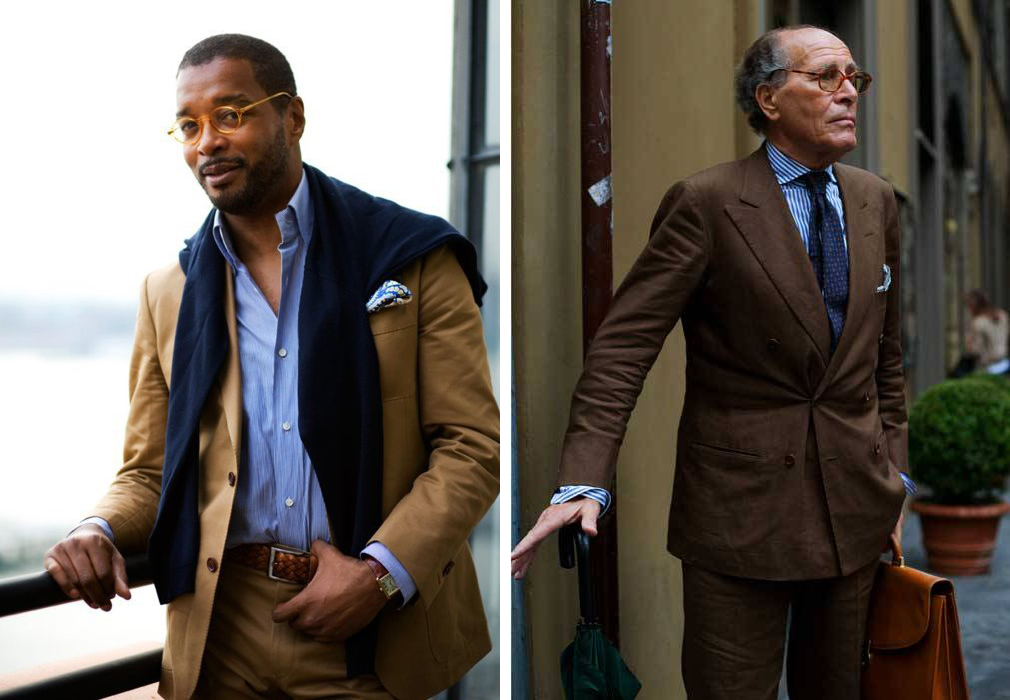
Rumpled Linen Suits
Before Samuel Slater broke English law by immigrating to the United States with the working plans for a drawing frame secretly sewn into the lining of his coat pocket, and Eli Whitney invented the cotton gin the same year—both technologies that triggered the explosion of US industrial cotton production in the 19th century—many Americans covered their backs, beds, and tables with homespun linen. To thumb through the private diaries of American women in the 18th century is to hear voices talk about how much work it took to produce such cloth. Ruth Henshaw and Elizabeth Wildes described “combing, spinning, and twisting linen; making harnesses, spooling, winding, warping, ‘pulling in’ and ‘getting out’ their webs of linen; then bleaching, boiling, scouring, dyeing and dressing the finished cloth.” So, it’s no surprise that handmade linen was a source of pride for a woman’s family and nation. In the Republic’s early days, some of the Founding Fathers imagined a future centered on the Jeffersonian conception of the farmer (who he regarded as “the chosen people”), where rural production ensured the nation’s independence from the bleakness of industrialization seen in Europe. The United States would export raw materials, leaving complex manufacturing to others.
As history has played out, the best linen in the world now hails not from the United States but from Western Europe—principally Britain, Italy, and Belgium. British linen tends to be stiffer, Italian linen a bit softer, and Belgian linen somewhere between the two. I think of linen as the cloth for spring and summer. In heavier weights, linen rumples more than it wrinkles. When made into a perfectly cut suit, it exudes a sense of effortlessness that has defined ideal male dress since Beau Brummell conceived of the “dandy’s pose” (which Baldassare Castiglione’s more neatly expressed in his writing about sprezzatura, or the art of doing something well while concealing one’s effort). A linen suit is among the most casual forms of tailoring, allowing it to sit comfortably alongside t-shirts and canvas espadrilles. I once even wore a linen suit over pajamas to get ice cream late at night.
This season, I’m looking forward to wearing a cigar linen suit. By cigar linen, I mean a fabric whose color approximates the outside of a cigar—a medium shade of tobacco brown with a subtle touch of red or gold. The color is unique but not wild, and it has a more leisurely feel than navy. I had one made about ten years ago on some advice from a friend and have since worn it so often that I recently commissioned a double-breasted linen suit made from a darker shade of brown (largely inspired by the photo of the man on the right, seen above). I recommend checking out Harrison of Edinburgh’s linens if you use custom tailors. Mersolair is a soft linen, available in two weights and a wide variety of patterns, while the W. Bill collection (my favorite) is starchier, allowing it to hold its shape. Cream, brown, and even grey are all good colors. I’m already thinking about getting another linen suit in the color of dried bay leaves.
Options: The Armoury suits in sand, chocolate brown, and seafoam green (the last one looks spectacular); Natalino in mid-brown and navy (matching trousers available elsewhere on the site); Cavour in tobacco brown; Spier & Mackay in pearl grey herringbone; Stoffa in sand, ivory, and chocolate brown; The Anthology in tan and dark brown sueded linen, cream, and sage; and Todd Snyder in safari tan, coral, light sage (this color looks great), and even black (!!). Finally, while they do made-to-measure and not ready-to-wear, Saman Amel has some great linen inspiration on their site (this looks especially nice)
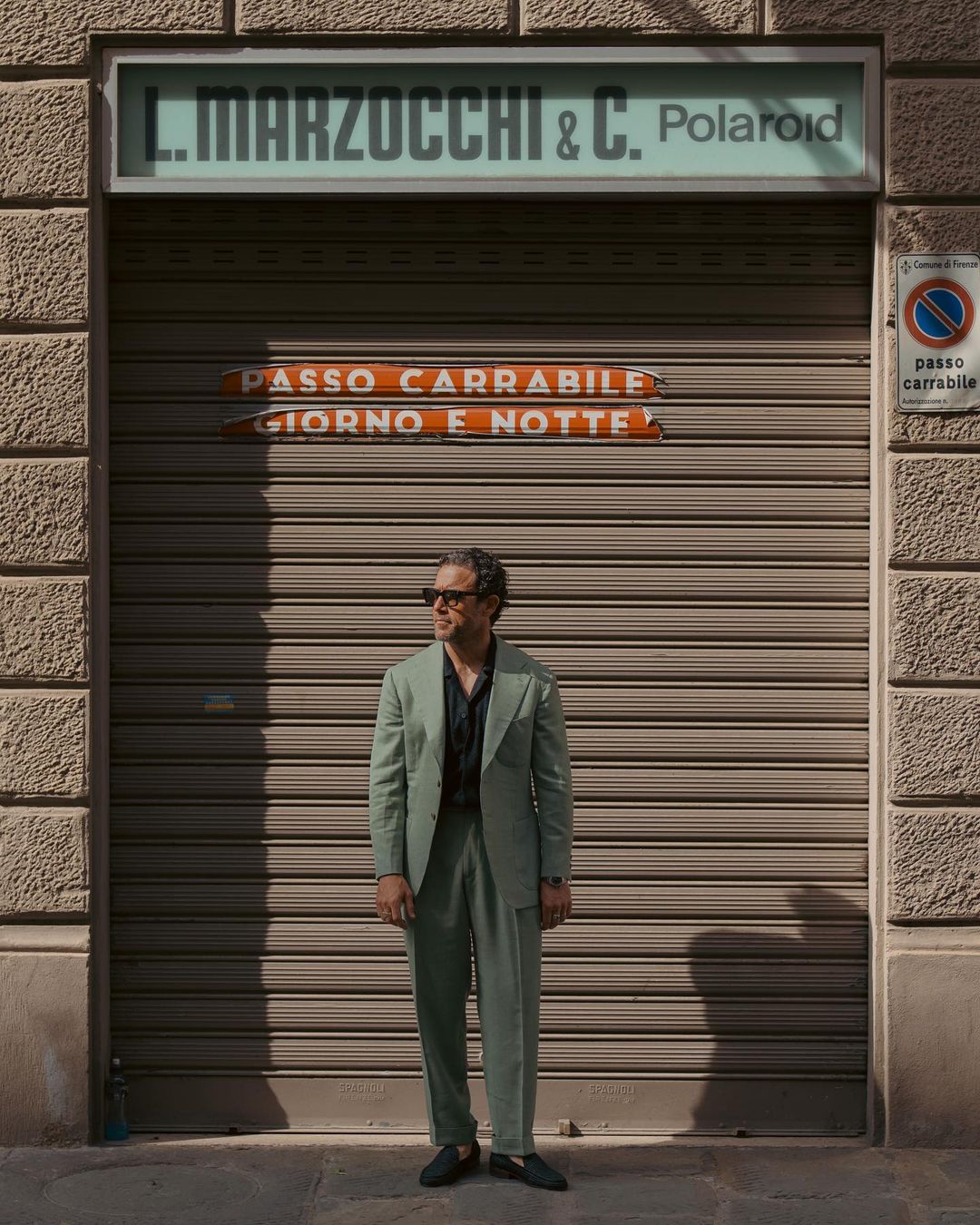
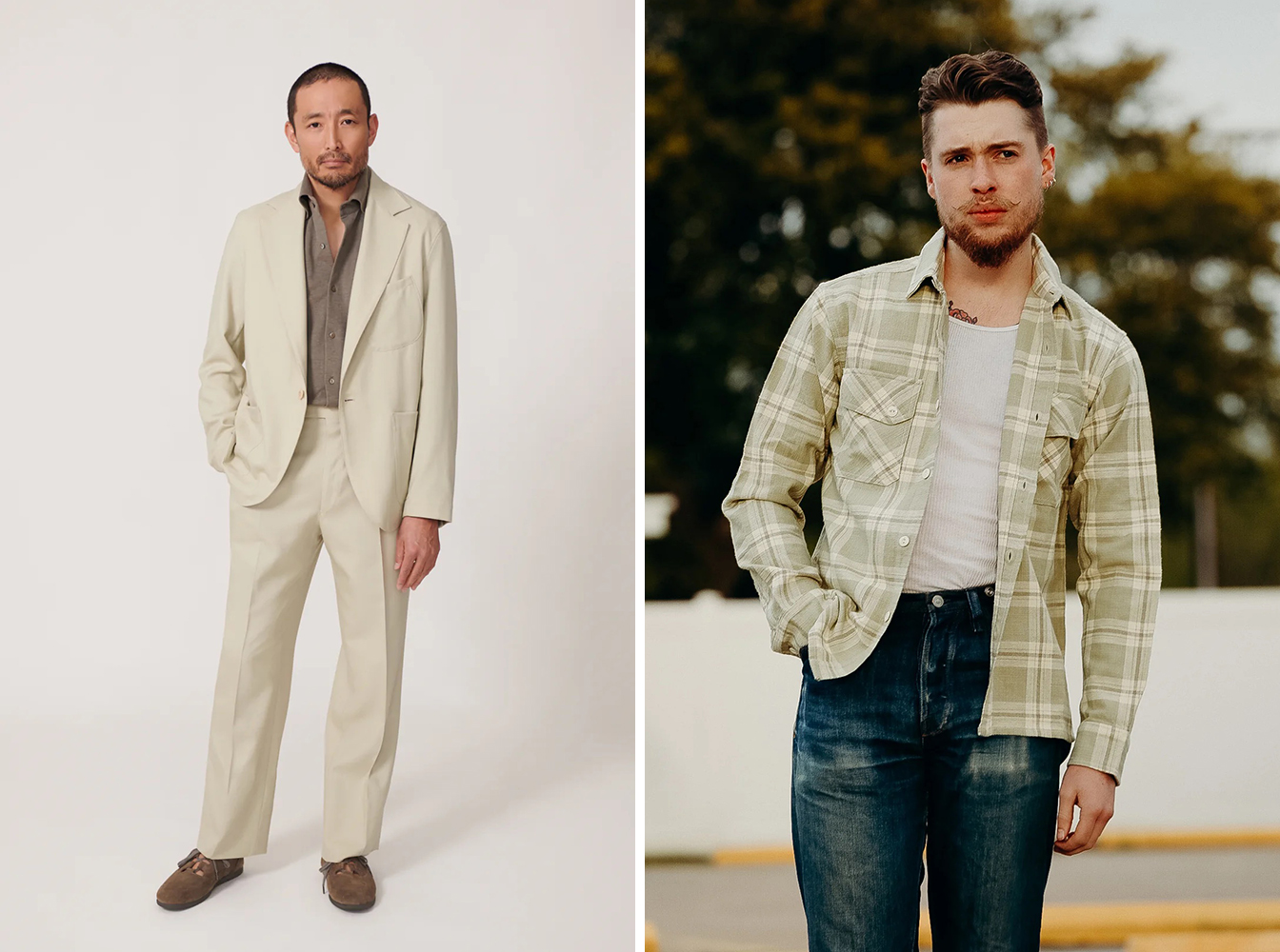
Olives and Pistachios
In the last few months, I’ve become obsessed with a particular shade of green—something like the weathered olives found on OG-107 fatigues or the soft, powdered green seen on pistachio mochi balls. It seems like the perfect color for summer. Conservative enough to be worn with most things likely already in your wardrobe while carrying the cheerfulness of the season. Take Peter, for instance, who is seen above wearing an I Sarti Italian suit made from Harrison’s Indigo, a featherweight eight-ounce wool-linen fabric with a dry hand and some impressive buoyancy. Peter tells me the material doesn’t hold a crease very well, but on the upside, that also means you get some of the rumples natural to linen without the hard wrinkles.
Several brands this season are carrying things in similar verdant tones. The Armoury, Stoffa, and Aime Leon Dore have pistachio-colored tailoring in ready-to-wear form. The Armoury presents a striking iteration—a softly tailored, seafoam green double-breasted linen suit with triple patch pockets. Paired with a crisp white shirt and some brown leather loafers, it would make for a great outfit at schmoozy summer soirées. I also like 3sixteen’s new crosscut flannels, retro-styled cardigans, and resort shirts. Any of those would look great with a pair of white Dickie’s painter pants or dressier cream trousers. You can layer the resort shirt or cardigan over a white t-shirt and wear the outermost layer open.
This season, I’m eagerly anticipating an olive-checked sport coat from Steed that’s supposed to arrive in the next month or two. It’s made from a wool-linen fabric I bought from Anglo-Italian, who—along with Maison Hellard—offer particularly appealing warm-weather fabrics. The problem with many English summer fabrics is that they’re either too bright or boring, while Italian mills don’t always sell cut lengths. Anglo-Italian and Maison Hellard rely on the expertise of Italian mills to make their textiles, but they apply their own distinctive taste to the designs. Lighter green sport coats, such as something made from this Maison Hellard checked linen, can be something you wear with light blue shirts, tan trousers, and brown loafers. The color evokes images of lush greenery, blooming flowers, and sunny days, making it a perfect choice for outdoor events, garden parties, or casual gatherings during these seasons.
Options: The Armoury linen suit; Stoffa tropical wool-silk suit; Aime Leon Dore suit; Spier & Mackay Super 130s suit; 3sixteen’s crosscut flannels, retro-styled cardigans, and resort shirt; G. Inglese Western shirt and striped linen button-up; Christian Kimber retro-styled polo; Rota olive Solaro trousers; J. Crew chinos, rollneck, and field jacket (great deal on genuinely useful jacket); Todd Snyder linen suit and faded fatigues; Aton field jacket and packable raincoat; Auralee ribbed knit and sweatshirt; Besnard linen trousers; and Proper Cloth sage green oxford
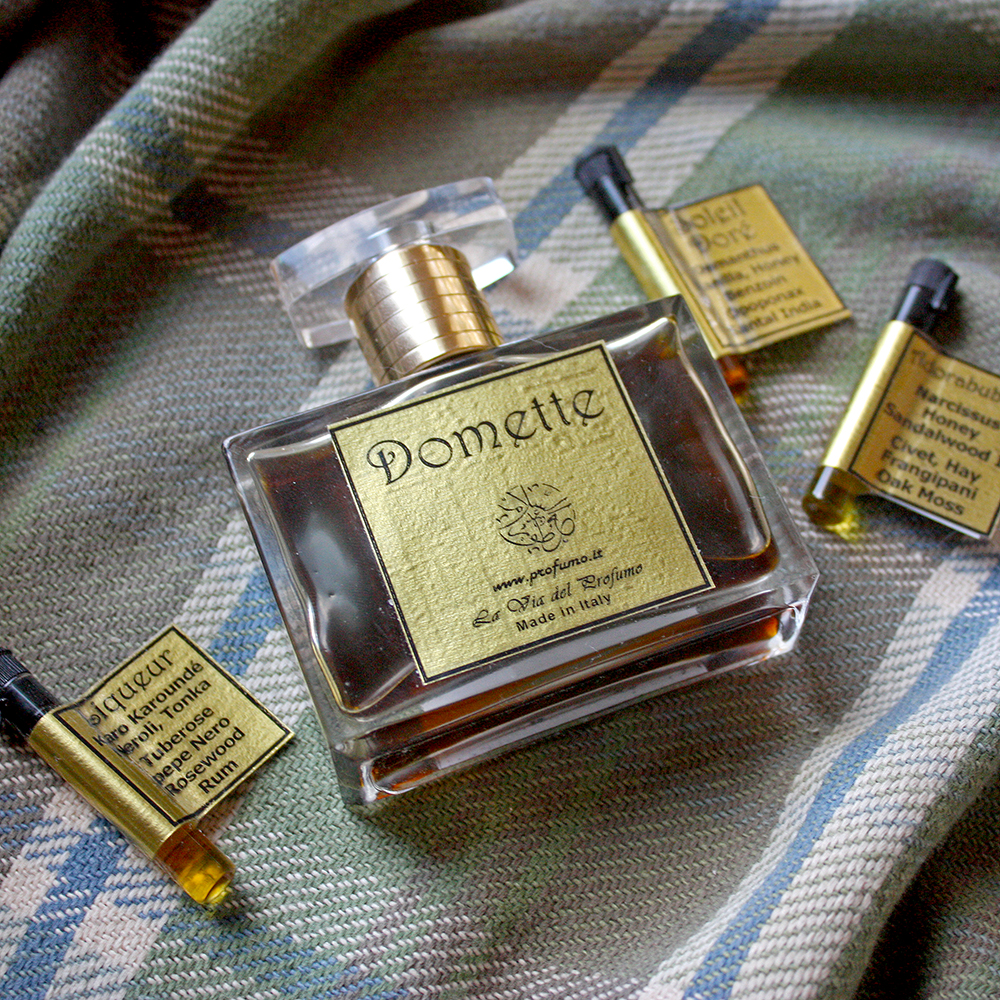

The Smell of Comfort
For me, natural perfumery is a double-edged sword. When produced by skilled hands, these scents have an alluring depth lacking in many synthetic fragrances. But they’re also more fleeting, making them potentially pricier per sniff. For anyone interested in fragrances, they’re at least a must-try. In this world, AbdesSalaam Attar is one of my favorite noses (along with Mandy Aftel). AbdesSalaam is a Frenchman living in Italy, a Sufi convert, and a man who’s passionate about his craft. Under his perfume label, La Via Del Profumo, he creates and bottles his own creations and sells them online through a charmingly clunky website. The New York Times once called him “a Saracen Willy Wonka,” describing him as “voluble, insistent, amusing, [and] obsessive.” Fragrance critic Luca Turin—widely considered something like the Alan Flusser of fragrances—said of him: “I don’t think anyone can touch him in the field of natural perfumery.”
AbdesSalaam spent about a decade traveling through Africa, the Middle East, Afghanistan, and Pakistan, which is maybe why his fragrances often remind me of spice-filled bazaars. I have bottles of Milano Café (a warm coffee-chocolate that dries down into woody notes), Cuoio dei Dolci (a spicy gingerbread leather), and Tabac (a sensual tobacco with sweet vanilla). They’re some of my favorite scents, so I gave his custom perfume program a try. I originally asked him about the possibility of doing a fragrance version of some favorite experience—something like the feeling of putting on an old Shetland tweed with polished leather shoes, or the redolence of walking by an open florist boutique in the middle of a walkable neighborhood. AbdesSalaam politely encouraged me to follow the site’s protocol: choose seven notes on his list and allow him to create something special. I thought, “Given that I have no perfume experience, how can this end up in anything but a mess, like a child mixing ketchup, mayo, and Worcestershire sauce in his parent’s kitchen?”
It turns out the program works surprisingly well, even if you’re working remotely. I chose six notes: rum, tobacco, and vanilla (the main notes), supported by hay, labdanum, and black pepper. AbdesSalaam has a very light touch when it comes to heavy notes, so nothing he makes ever feels overpowering. This one is a smoky, boozy vanilla with the scent of hay lingering in the background. I named it Domette—the fluffy material a tailor puts into a jacket’s chest so the wirey haircloth doesn’t poke through—because I wanted something that feels comforting and protective. This scent does just that. If you give his custom perfume program a try, I think it helps to have some experience with fragrances so that you know which notes you like. But rest assured that much of the magic happens in the perfumer’s hands. If you want something safer, you can always try something in stock. Lucky Scent carries La Via Del Profumo, so you can buy samples before committing to bottles.
Options: La Via Del Profumo and Lucky Scent
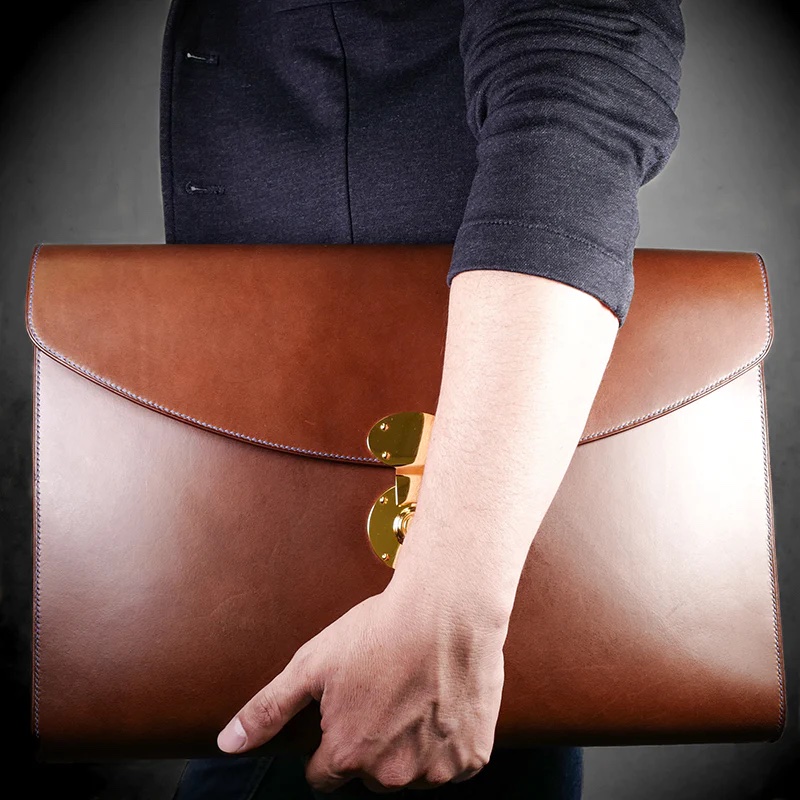
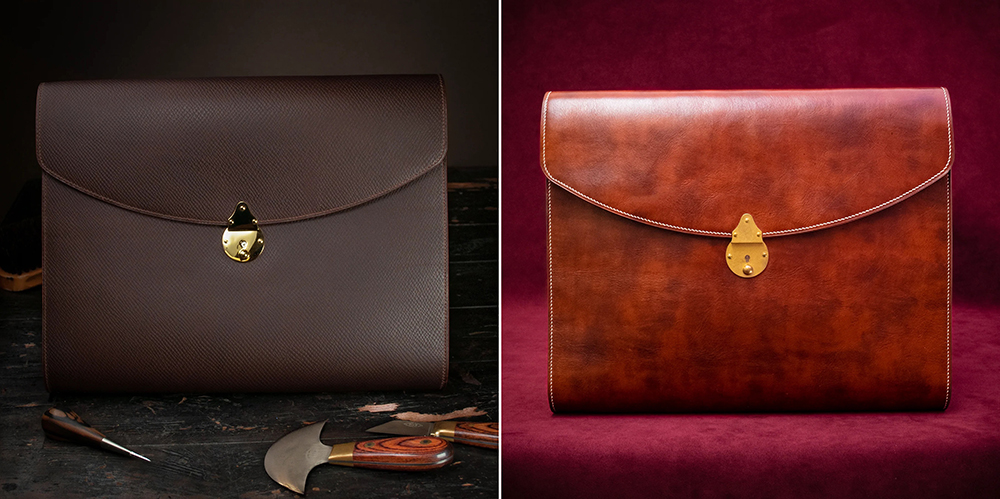
Modern Briefcase
As the world gets smaller, so do our possessions. The weighty stacks of papers and books we once toted have evolved into digital PDF files and sleek Kindles, while traditional newspapers and magazines now reside in the realm of digital subscriptions. Your iPod, which used to be a technological marvel that packed your entire music library into the palm of your hand, has now disappeared into your smartphone. My daily carry nowadays is usually not more than my laptop and its accompanying charger—and all that neatly fits into a folio, which I think of as the modern briefcase. A folio gives you enough space for everything you need, looks great with any outfit, and won’t ruin the shoulder line on a tailored jacket.
Some of my favorites include two hand-sewn folios from the Californian brand Chester Mox, run by Bellanie and Brandon Salcedo. Chester Mox is special because it represents the best of American craftsmanship, proving that such artisanal production is not only in the purview of European and Japanese makers. Bellanie learned her craft many years ago from a former Hermes leather worker, who taught her how to make leather goods using a technique known as saddle stitching. That’s when a craftsperson marks leather using a pricking iron by punching holes that only go halfway through (a technique that requires some practice and muscle memory). Then, they pass two sewing needles from both sides, moving their arms like a bird repeatedly stretching its wings. The result is a stronger, more durable seam. Whereas a machine-made seam can unravel if one stitch breaks, a saddle-sewn seam has to be picked apart with a special tool. Plus, you get a much neater, tighter-looking stitch since there are no gaps between the thread and leather. I love hand-sewn, saddle-stitched goods for the same reason I appreciate handmade buttonholes and hand-padded jackets—they’re a testament to a maker’s skill in a world that has become increasingly mechanized and digitized.


Chester Mox has four main folios, each differing in leather. The Monterey is a soft folio made from Italian vegetable-tanned leather. Then, there are two unnamed folios made from grained leather, including French Chevré and Horween hatchgrain, which are stiffer and provide more structure. Finally, another unnamed folio made from ILCEA’s museum calf, a distinctively mottled leather made famous by Hermes’ John Lobb (who uses the same material for their shoes). Each folio is finished with a hand-set metal lock to keep the contents secure and can be customized with compartments to hold things such as pens, phones, and papers.
To my mind, the Monterey is the default—something you can use year-round and will look at home with anything. The unnamed models made from stiffer, grained leathers—the French Chevré and Horween hatchgrain—look more at home with fall/ winter outfits. The texture of the folio looks great with things such as country tweeds, lofty flannel or ribbed whipcord trousers, and shoes in similarly textured materials, such as pebble grain or suede. The museum calf folio can be used with anything, but in keeping with the idea of seasonal leathers, I think it comes into its own when paired with lightweight tailoring made from Mock Leno, crunchy linens, or wool-silk-linen blends. There’s just something about the leather that makes it look very cheerful. (Peter photographed the two flat lays above, so thanks to him.)
Prices are not inexpensive, but they’re in keeping with this level of craftsmanship (and cheaper than what you’d pay a Western European or Japanese producer of similar quality). I think of it as similar to buying a high-end briefcase (they sell those, too). For something cheaper, Chester Mox also has a wide selection of wallets made to the same standard as any of their other items (including what you’d get from their bespoke service). This Vachetta card case—made from the same leather that Louis Vuitton uses for their bag handles and prized for how it develops a patina—is still one of my most used items from them. And it’s only $75.
Options: Chester Mox
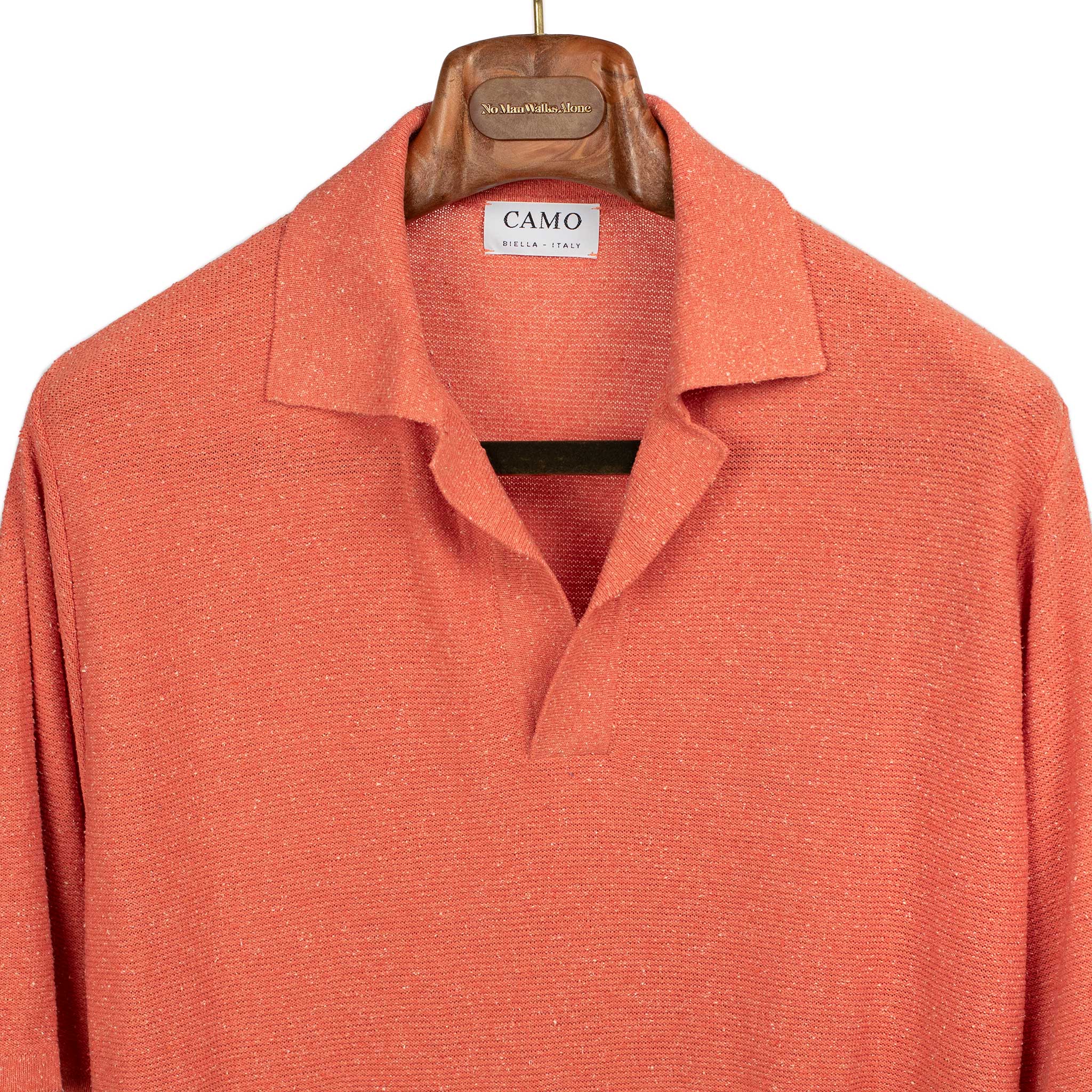
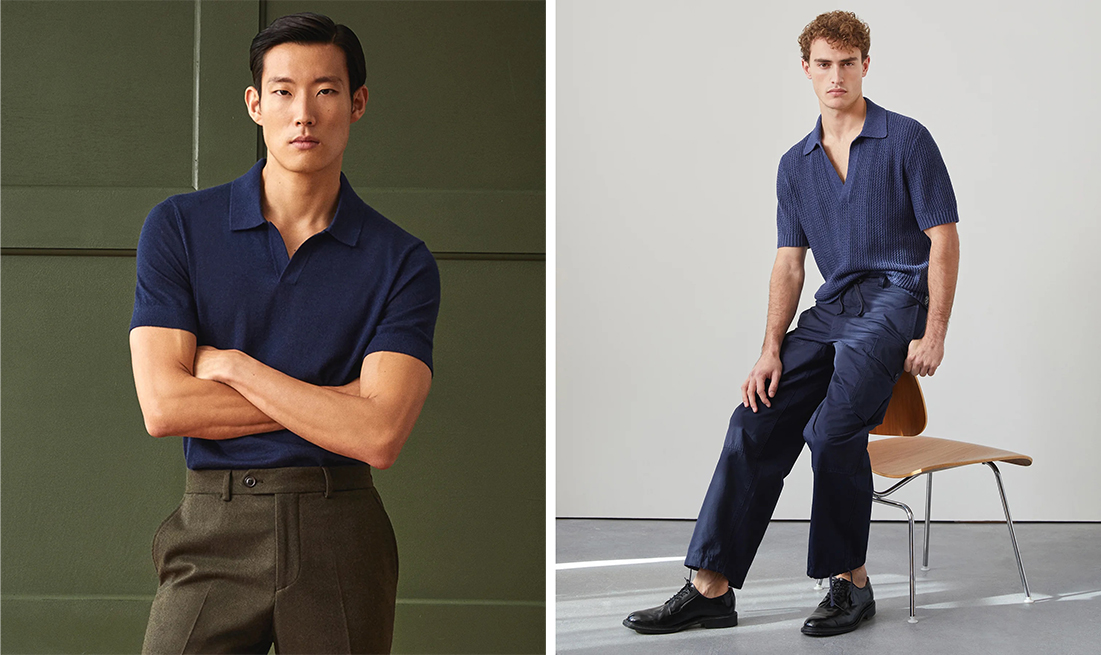
Lazyman Shirts
Despite being quite driven and ambitious as a youth, I’ve come to accept that I’ve grown lazy with age. If there’s a shortcut to something, I’ll take it. These days, that means passing over lace-up derbies for easier slip-on shoes, such as tassel loafers, huaraches, and elasticated Blundstones. Kapital’s trucker caps provide a convenient cover for an uncombed head. And if I can get away with it, I’ll skip having to iron a dress shirt. This is easier in the colder seasons with things such as chunky sweaters and heavier flannel button-ups, where wrinkles quickly fall out, but what do you do when the weather gets warmer? My solution is to reach for knitted polos when I can.
The polo’s turndown collar gives you some of the presentability of a dress shirt without requiring you to pull out an iron and an ironing board. However, the style has been thoroughly washed of its heroic meaning in the last hundred years, having become the standard for uninspired uniforms everywhere, from private schools to fast-food chains to business casual offices. Unlike other menswear items that sprung from sport—such as stout rugbys and basketball shoes—polo shirts no longer invoke youthful vigor. Instead, they’re often a way for middle-aged men to cling to the traces of respectability, much like how the polo’s pique cotton clings to the contours of their bodies.
Still, I don’t want to iron my shirt, so I’ve found two workarounds. Proper Cloth’s “soft touch” polos are made from a stretchy, kitten-soft cotton-Tencel blend. They look a little more like sweaters than traditional polos, and when made through Proper Cloth’s made-to-measure program, they can fit better, too. I like them best with long sleeves, a chest pocket, and the company’s Soft Roma Cutaway collar (reminiscent of Eidos’ popular Lupo collar or Permanent Style’s Friday polo). I’ve also grown fond of skipper and Johnny collars, which are buttonless designs made with a split front and floppy collar points. They feel more stylish and retro, like something you’d see in The Talented Mr. Ripley, rather than at business conferences. I like them best worn in more casual outfits, such as paired with tailored trousers and some slip-on shoes (the Ulitmate LazyMan Outfit). The floppy collar can go over a tailored jacket’s lapels, but if you want a polo that behaves more like a dress shirt, get Proper Cloth’s Tencel-blend polos made with their Soft Ivy Button-Down collar.
Options: Proper Cloth, Camo (these look great), 3sixteen, Kaptain Sunshine (available at No Man Walks Alone, Namu, and SSENSE), Stoffa, Auralee, Todd Snyder, Bryceland’s, Pini Parma, Suitsupply, and J. Crew (most affordable option)
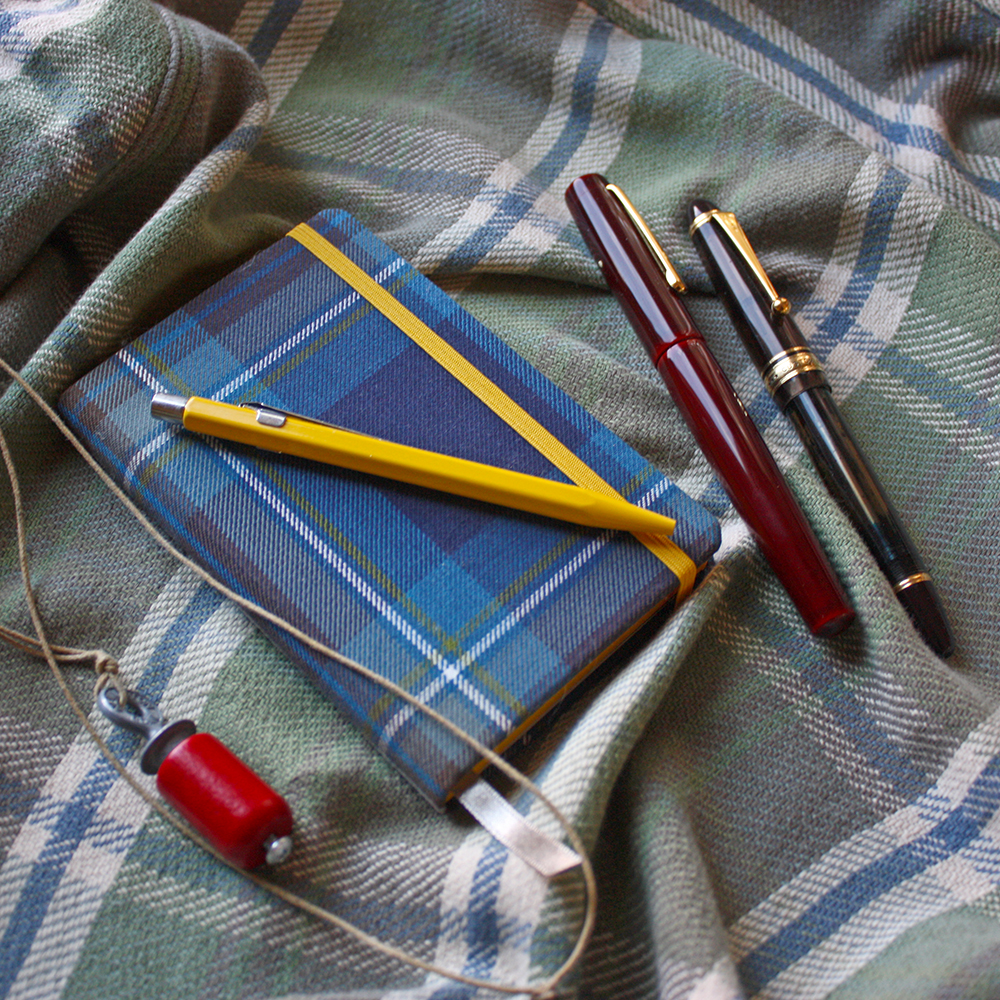
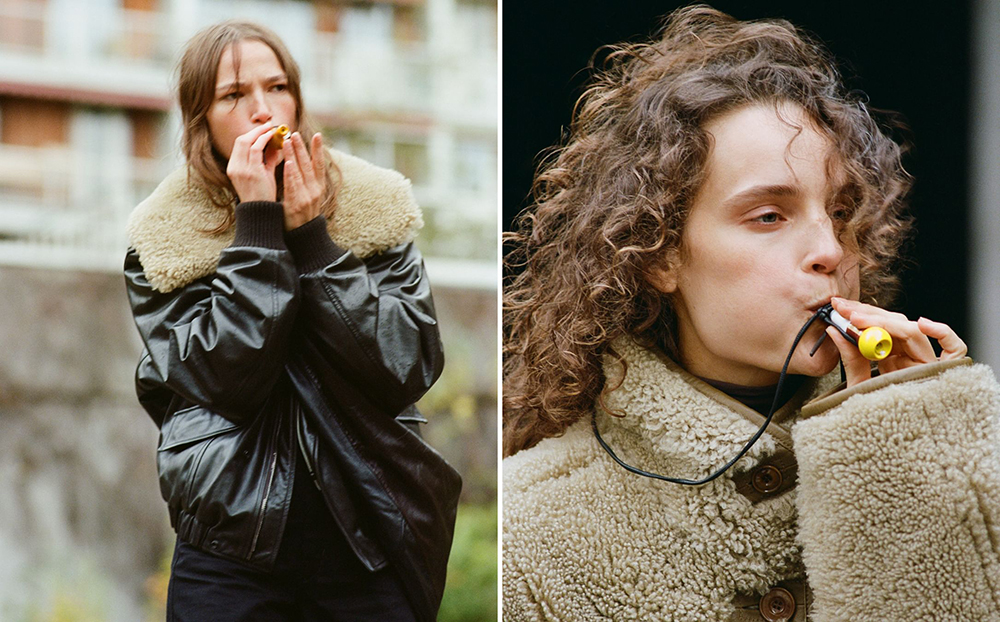
Birdcaller, Notebook, and Pen
Lastly, some odds and ends. This past winter, Lemaire released some customized bird whistles from Quelle est Belle Company, a French company that has been producing these charming devices for birders since the 1970s. They’re handmade in France using locally sourced woods, such as box, beech, and ashwood. I was charmed by the online campaign, but at $500 per whistle, they were more than I was willing to spend. You can buy a plain Quelle est Belle Company whistle for about $30 and paint it yourself, but that was more work than I was willing to do.
So, I bought a pre-strung Audubon bird caller for $40 (cheaper $12 versions can be had if you’re willing to string it up yourself). I thought I would attract some birds—or at least a curious neighborhood cat—but I haven’t achieved either so far. On the upside, this bird caller encourages me to look up at trees (a plus), allows me to annoy my neighbors (a bigger plus), and looks great as an accessory (the ultimate plus). When looped through some twine and worn as a necklace, I like how the brightly colored wooden object adds visual interest to plainer workwear outfits.
I’ve also been using a Waverley notebook that I bought for about $20 online. They’re a surprisingly good value: 176 pages, hardcover, and decorated with a British woven cloth that features an official Scottish tartan produced with the permission of Kinloch Anderson Scotland. The inside features a small booklet explaining the history of the clan tartan on the cover. The notebooks also feature a ribbon bookmark, an elastic closure, eight perforated pages at the back, a small pocket for a credit card or ID card, and an expandable pocket for things like receipts. A pretty impressive number of details for $20 (I also like the sewn label on the back). I only have two complaints: the pages are only lined on one side, effectively cutting the number of writing pages in half, and the lines are spaced closer than I’d prefer (which makes for a less than comfortable writing experience). Still, I was impressed that the acid-free paper mostly took my fountain pens. My medium nib Pilot 823 resulted in a bit of ghosting at the back, but my fine nib Nakaya Neo Standard worked just fine. The endless array of Scottish tartan covers also offers many opportunities to accessorize with a matching Caran d’Ache 849 ballpoint. Given that the notebook isn’t too expensive, I’ve been less precious about it, which has helped with using this as a way to keep track of daily tasks.
Options: Lemaire bird whistle, Quelle est Belle Company bird whistle, Audubon bird caller on a necklace and plain, Waverley notebook, Pilot 823 fountain pen, Nakaya Neo Standard fountain pen, and Caran d’Ache 849. I also like Public Supply’s embossed pocket notebooks. The paper isn’t true fountain pen quality, but it’s mostly fine as long as you’re not using a flex pen. The cover designs are nice.

